LAND INVESTOR
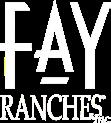

VOLUME 8 REPU BLIC RANCHESLLC
TM FARMS TIMBER RANCHES SPORTING PURSUITS VINEYARDS
As
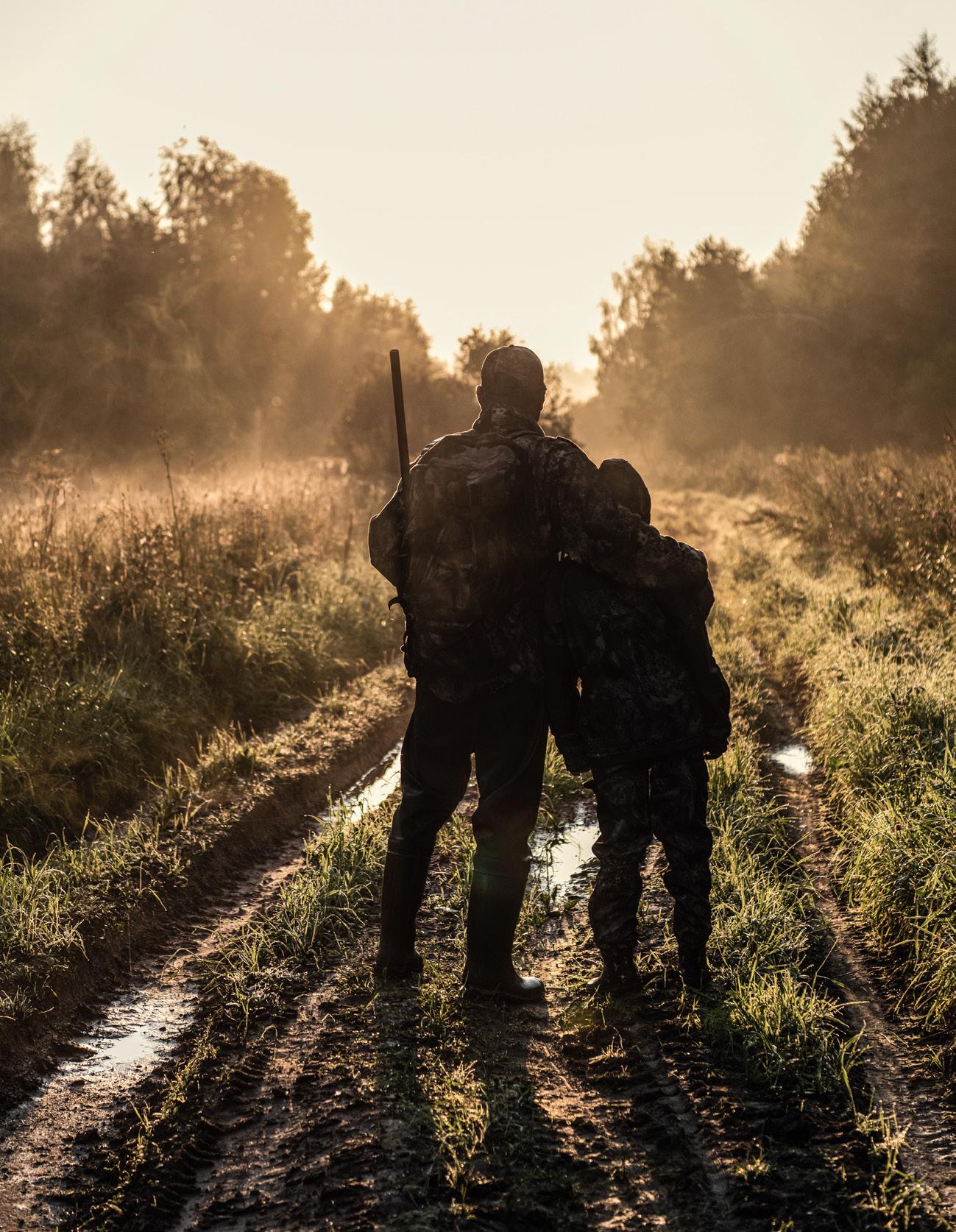
a local cooperative, we share our profits with the Texans we serve. Since 2006, we’ve returned $2.2 billion in combined cash and allocated equities to our members through our cooperative returns program. So, when you’re ready to secure lending for your own rural playgound try a partnership that really pays. Together we’re better. NMLS493828 | 877.944.5500 | capitalfarmcredit.com on Game
to prepare for a backcountry trip
buyers and sellers


conservation reserve program
fencing considerations for your new ranch
an ode to the windmill
ten things to consider when buying a horse property
maximizing your timber investment

wild game processing
the browse ranch
seasons of the southeast
PROPERTY GUIDE
MARKET
Two thousand twenty-two marks the 30th anniversary of Fay Ranches and ten years since we forged our Strategic Alliance with Republic Ranches. Thirty years certainly signifies our ability to weather some storms and grow with discipline. I feel like we’re just getting started, and I’m having more fun now than ever, thanks to the wonderful people I work with and our amazing clients.



It is always challenging to characterize the land market with limited sample size. Unlike residential real estate, there isn’t the deal flow nationally to make accurate short-term evaluations of the market. However, it is now mid-September. I’ll provide insight into the land market in 2022 compared to 2021 based on nine months of activity.
The frenetic pace of 2021 has dissipated, thank goodness. However, we are still experiencing strong demand and remain short on supply. In 2021, Fay Ranches and Republic Ranches together closed over two billion dollars in land transactions. In 2022 we are on pace to equal this production based on YTD closed transactions and the deals we have under contract.



Our gross revenue so far, year over year, is 2% less than in 2021.

will be interesting to see if the land market slows down in 2023. An investment in land has always been more stable than residential. We are not affected by interest rate increases. Due to the subdivision of land around urban and suburban areas, and our clients’ propensity for aggregating, less land is available every year. The diminishing supply of land contributes to its
and long-term appreciation more than any other factor.
An interesting new market condition that has impacted the land market in the past three years is the dramatic increase in the audience exposed to land as an investment due to COVID and the upheaval in the social and political fabric of the United States. The influx of people looking to land as a means to escape and insulate their families and keep them safe has increased tremendously. The conditions that caused this phenomenon do not appear to be dissipating. An increase in demand and a decreasing supply may sustain the land market through the likely impending downturn in the residential real estate and securities markets.
VOLUME 8 63 montana 78 south dakota 79 wyoming 83 idaho 89 pacific northwest 103 alaska 117 southwest 124 mexico 125 texas 138 southeast 4 how
8
12 grassland
16
18
20
22
26
30
32
36 constructing a new home on a rural property 38 opportunities on mixed deeded and federal land lease ranches TABLE OF CONTENTS
© 2022 FAY RANCHES, INC.
Jeff Boswell
Partner
| Broker Associate Republic Ranches
Mark Matthews
Partner
| Broker Associate Republic Ranches
James Esperti
Partner
| Ranch Sales Fay Ranches
Charles
Davidson Partner | Broker Associate Republic Ranches
Bryan Pickens
Partner
| Broker Associate Republic Ranches
John
Wallace Partner | Broker Associate Republic Ranches
It
market stability
UPDATE PUBLISHED BY : GREG FAY, FOUNDER, BROKER Fay Ranches, Inc. | 395 Gallatin Park Drive | Bozeman, MT 59715 REPU BLIC RANCHESL 40 wildfires affecting property value 44 ranch staff 46 the economic and social impacts facing rural america 50 upland game bird hunting 52 colorado river 56 women of fay LAND INVESTOR™
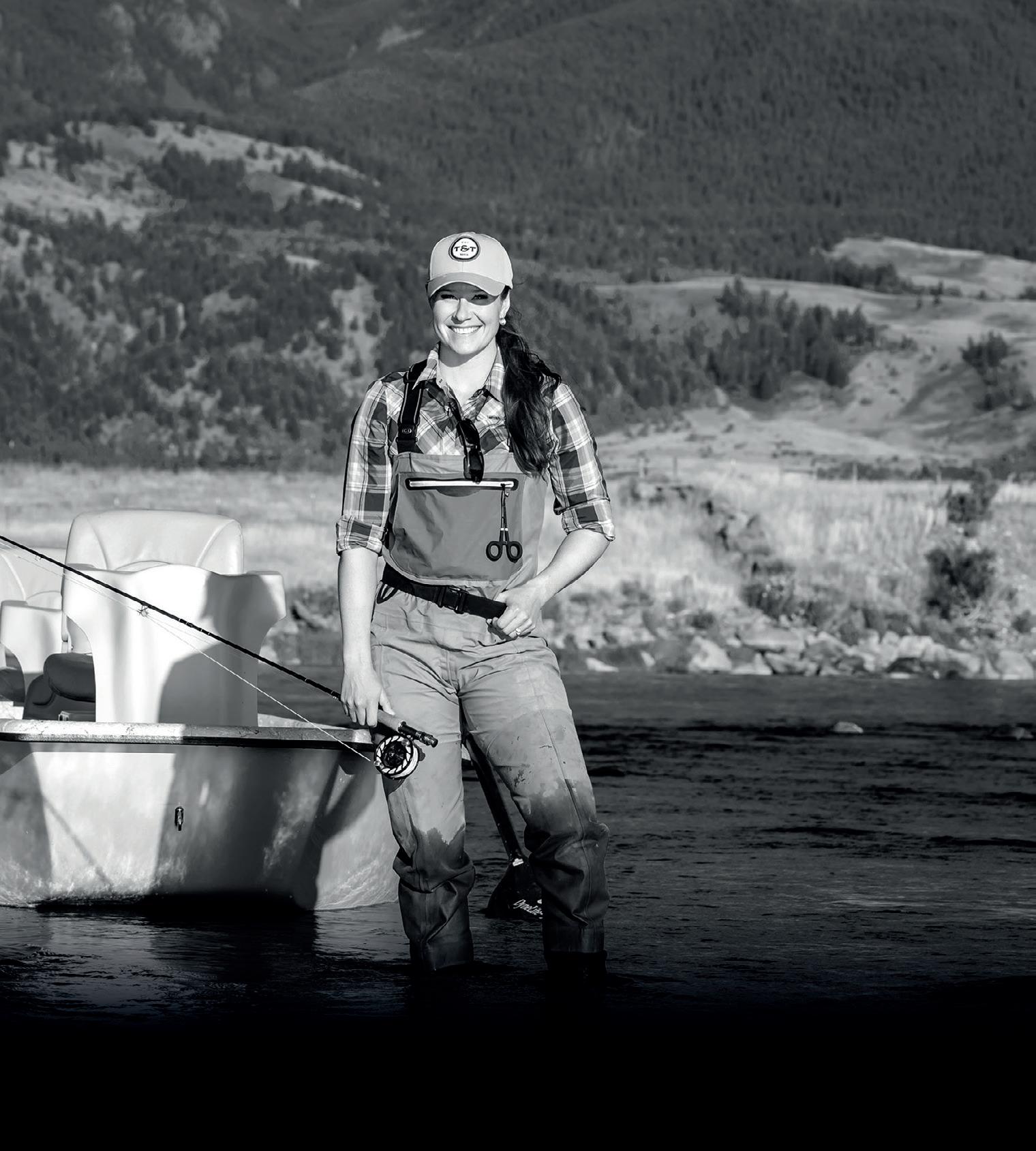


800-238-8616 | WWW.FAYRANCHES.COM | 3 THE PARADIGM SERIES, 5 MODELS FROM 3 - 6 WEIGHT Ask a group of experienced anglers to name the greatest dry fly rod of all time, and the T&T Paradigm is sure to be mentioned more than once. Over twenty years later, we’ve followed the same inspiration that made the original into a legend to create a new Paradigm for the 21st century. the next generation www.thomasandthomas.com HANDMADE IN AMERICA THE ROD YOU WILL EVENTUALLY OWN est 1969
HOW TO PREPARE FOR A BACKCOUNTRY TRIP
 BY JW ROBINSON, BROKER | FAY RANCHES
BY JW ROBINSON, BROKER | FAY RANCHES
One attraction to the western United States is the vast acreage of land allocated for public use, including large tracts of state land, National Forest, regions managed by the Bureau of Land Management, and designated Wilderness Areas. Outdoor enthusiasts love camping on public lands with recreational vehicles and enjoy exploring them from a UTV. Although these are excellent ways to enjoy public lands, many outdoorsmen seek off–the–grid adventure in the backcountry. Backcountry means no motorized vehicles, no cell phones, and limited access for public use. Backpackers pursue high-altitude climbs and strenuous long-distance treks. Horse packers pursue scenic trail rides, wilderness fishing adventures, and backcountry hunting opportunities. No matter your preference, adventures await in the backcountry. The challenge with off-the-grid camping is that you must be prepared. It is rare to take a backcountry adventure and not pass an unprepared group of adventurers. So, how do you prepare for a backcountry trip? Let’s break it down into four key elements.
ELEMENT 1 | KNOW WHERE YOU ARE GOING
In order to reach your destination, you must know where you are going. It is common for people to get lost while traveling someplace new. In fact, it is very common to get turned around while traveling. Although you may not like to admit it, most travelers dislike asking for directions. In the backcountry, it is imperative to know where you are going and how you will get there. Adventurers should plan a route, study the route, and communicate the route before leaving on a backcountry trip.
The backcountry adventurer will need to choose a specific destination, and carfully devise a plan to get there. The plan will require answering several questions: how many miles to the destination? How many days do I plan to be gone? How many miles per day will I travel? Once you have answered these questions, study the route. Know your area by reviewing all available maps and information. Most local sporting goods stores, BLM Agencies, and Forest Service offices can provide a good map. Save digital maps into a Garmin inReach device or download onX hunt maps before you leave. It is important to know the mountain passes and valleys, the river and creek crossings, as well as good camping spots with plenty of natural resources.
Be sure to communicate the route; you will want someone to know where you are going. Off-grid backcountry trips have the potential to be dangerous. Let others know where you are going and give them your itinerary for each day. Communication from the mountain was never an option for many years. Now, devices like Garmin inReach, Zoleo, or satellite phones can quickly put you in touch with emergency personnel, family, and work. It is easy to let someone know that you arrived and
that the trip is going as planned. However, do not rely solely on backcountry technologies. Communicating your plan to someone is a great way to stay safe. In the event you have no satellite connection for communication, someone should know approximately where you are. In order to reach a destination, you must know where you are going. You have planned a route, studied the route, and communicated the route. Next, plan for basic needs.
ELEMENT 2 | PLAN FOR YOUR BASIC NEEDS
The basic needs for survival are essential in the backcountry. Anticipating these needs is the fine line between an uncomfortable trip and an enjoyable experience. Quality preparation is the deciding factor between “never wanting to do this trip again” and, “how soon can I plan another trip?”. This planning will vary depending on the style of your trip. The backpacker can take only what can be carried on his back, while the horse packer can use multiple horses and mules for the distribution of needs. The following list with corresponding questions will provide most of the basic items necessary for your trip.
HYDRATION : What will you drink? How will you drink it? How will water be purified?
FOOD : What will you eat? How will you cook it?
FIRE : What are your three different sources of starting a fire? Where will you pack them? Do you have a waterproof option?
SHELTER : How will you protect yourself from the elements?
TOILETRIES : What is necessary for basic hygiene?
CLOTHING : What will you wear? What weather will you need to plan for?
HEALTH/ SAFETY : How will you respond to an emergency? What equipment or medications are necessary?
EMERGENCY COMMUNICATION DEVICE : How will you communicate if you are in danger? How will you get out of the wilderness if you are sick or injured?
Answering these questions will assure a much more enjoyable trip. Your individual level of comfort determines your decisions when taking a backcountry trip. Many adventurers desire to push the limits of survival, while others just want a small taste of what the backcountry has to offer. You must decide what you can live with, along with what you can live without. No matter your choices, preparing for your needs remains vitally important on a backcountry trip. Next up, organizing the livestock.
800-238-8616 | WWW.FAYRANCHES.COM | 5
ORGANIZE YOUR LIVESTOCK

Many backcountry adventures include livestock. The handling of livestock in the backcountry requires an added element of preparation. Backpackers and outfitters bring dogs along as companions and predator control. Horse packers wrangle horses and mules, loaded with people and gear. Some people even pack gear on llamas. The further you go into the wilderness with livestock, the more prepared you need to be. It is not uncommon to see a dog limping back to the trailhead with sore feet, a llama stranded on the other side of a flooding creek, or a riderless grey mare leading a string of empty pack mules back home to greener pastures. It is your responsibility to organize the livestock—listed below are the most important aspects:
CONDITION : Are the animals healthy? Are they in top physical condition for the strenuous trip ahead? The backcountry has a way of humbling your physical condition. Many animals cannot carry on because they are not properly fit for the journey. If an animal is not in good physical condition, leave it home, or plan an easier, less strenuous route. Consider the animals’ feet. Many potential problems are related to sore pads on dogs, and lost shoes on horses. Many trips end in disaster because the animals are not physically fit
FEED : How will the livestock eat? Will you pack food for them? Animals will need sufficient food to resupply energy levels. It seems like standard information, but it is often overlooked. Packing dog food is a simple checklist item. However, providing feed for a grazing animal is more complicated. Horses and mules require a well thought out feed plan. First, you will need to plan your route to include good grazing locations. Second, you will need to decide when they will graze—all night, or several hours each morning and night? Finally, you will need to decide if a supplement to grazing is needed. Often, horses and mules benefit from a supplement like grain, hay cubes, or salt and mineral blocks.
WATER : Hydration is a major source of maintaining an animal’s health in the backcountry. How will your animal get adequate water? First, plan your camps next to a live water source. Next, provide multiple opportunities per day for hydration. Finally, promote free choice drinking opportunities whenever possible. You know what they say, “You can lead a horse to water, but you can’t make him drink.” If an animal can have free choice access to feed and water in the backcountry, he will eat and drink what is necessary to stay balanced and healthy.
EQUIPMENT : Animals need to be fitted with high-quality equipment that fits them correctly. A backcountry journey encompasses many miles of rough terrain. Pack saddles, riding saddles, saddle bags, and other miscellaneous livestock gear can sore an animal quickly. It is recommended to pre-check the fit of the gear before the trip, adjust it daily during your trip, and always strive for balanced loads.
HANDLING : Although dogs may not require much handling, horses and mules do. It is necessary to have a livestock handling plan. Will you need a full-time wrangler, or will you do it yourself? Care of animals adds a significant amount of time to a backcountry trip. Gear such as hobbles, pickets, bells, or electric fences may need to be packed in order to handle your livestock appropriately.
Heading into the backcountry with animals requires additional planning. However, the rewards of sharing the experience with your favorite dog, seeing the sunset with a horse between your legs, or watching the tall ears of a string of mules cross a highaltitude mountain pass makes the extra work worthwhile. It is not difficult to do if you simply organize your livestock. Finally, pack for recreation.
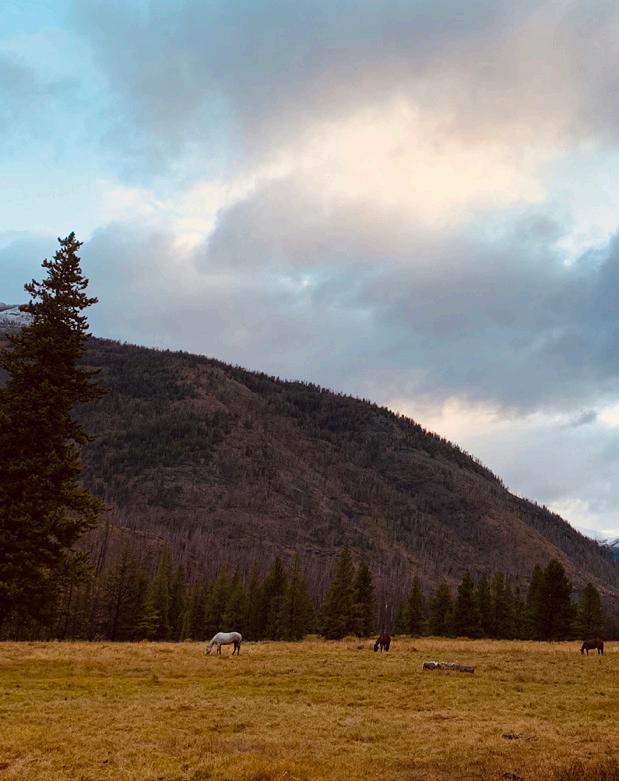
ELEMENT 3 |
ELEMENT 4 PACK FOR YOUR RECREATION

Fun: It is the point of a backcountry trip. The backcountry is packed with recreational opportunities. It could be high-altitude mountaineering, photography, rock climbing, elk hunting, an archery mule deer hunt, or fly fishing a no-name lake or alpine stream. Recreation abounds around every wilderness corner. It is important to pack for your recreational activity. An adventurer never wants to get to camp and hear, “I forgot my fly rod.” It is important to make a simple list of three recreational activities and pack accordingly for each.
HOBBY : This list will include the hobby you came to enjoy. It provides organization for fly rods, hunting equipment, cameras, or climbing gear.
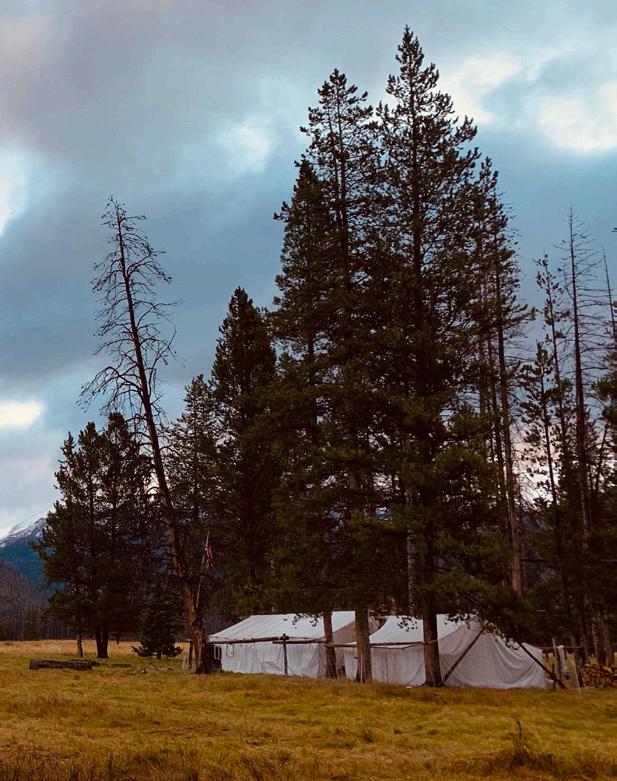
RELAXATION : This list will include how you plan to relax. It contains items like hammocks, lawn chairs, and shade tarps.
INDULGE : This list will include special items of personal fun. It organizes a place for whiskey, books, cigars, swimming gear, or s’mores.
A backcountry trip is all about your enjoyment. It is no secret that a Bush Latte chilled from an ice-cold mountain creek is one of the great experiences of life. Create a list of recreational items you want to enjoy while in the backcountry and figure out a way to bring them along. After all, fun is the point of a backcountry trip.
Preparing for your wilderness trip does not need to be difficult. As an old backcountry guide once told me, “Prior planning prevents poor performance.” It simply requires paying attention to a few elements. If you know where you are going, prepare for your needs, organize your livestock, and plan for your recreation, the trip should go off without a hitch. The backcountry of the United States offers amazing off-the-grid adventures. It includes some of the best photography, hunting, fishing, and climbing in the entire world. Having the lists checked off makes for a great night’s sleep before you take off on your next backcountry adventure!
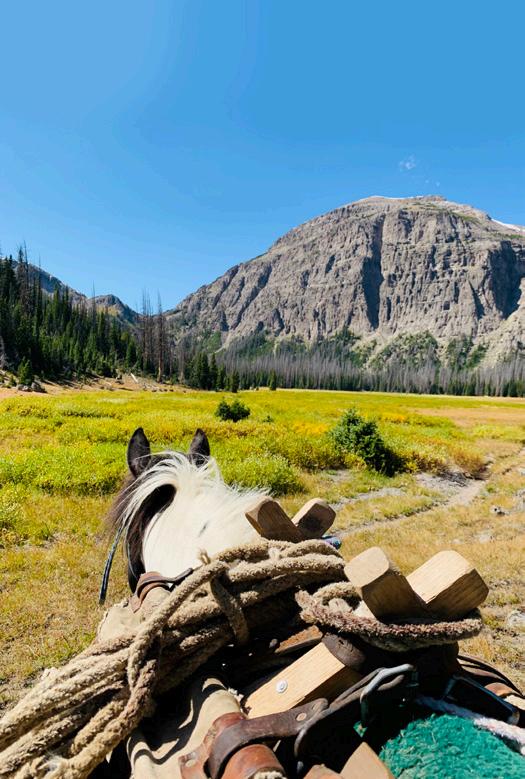
BUYERS AND SELLERS:
MORE THAN JUST A SALE
BY VINNY DELGADO, RANCH SALES | FAY RANCHES
Having spent the past ten years of my life as a land broker, I can attest to the fact that the most rewarding aspect of a successful career isn’t financial in nature—it is connecting with people who share your values and express their appreciation for the part you played in helping them achieve the lifestyle of their dreams. I have enjoyed spending time with clients on ranches they’ve purchased, often specifically for the purpose of hunting or fishing. The joy I experience in watching them get excited about success on their ranches is unmatched.
When buying or selling a ranch, your relationship with your broker doesn’t stop at closing. A good ranch broker should be more than just a broker. I have had the privilege of working with some incredible buyers and sellers over the years, some of whom I call my friends, and even family. From helping clients plan their next move to enhance the property, to educating new ranch owners about noxious weeds and weed mitigation, to facilitating master planning for the development of a new purchase into a
recreational dream property, to coming up with ways to reinvest proceeds from the sale of a multi-generational ranch, I welcome calls seeking advice about how to handle situations that may come up after the sale has been finalized.
When you sell ranches full-time and own one yourself, the logistics of owning and operating a ranch become second nature. As a new ranch owner, having a broker in your court with ranch experience is critical. I have found that having relationships with a solid group of vendors has been key to facilitating the transition for clients who are becoming new ranch owners. A trusted broker will have all the right people on speed dial, from who should oversee farming, to trustworthy builders, or even which fishing guides to hire when friends and family come to town. From the right transaction and water rights attorneys, to phase-one engineers and surveyors, a well-seasoned broker will have all these people on the short list to help with accommodating a smooth and seamless transaction and discovering any issues that may then be addressed with eyes wide open.
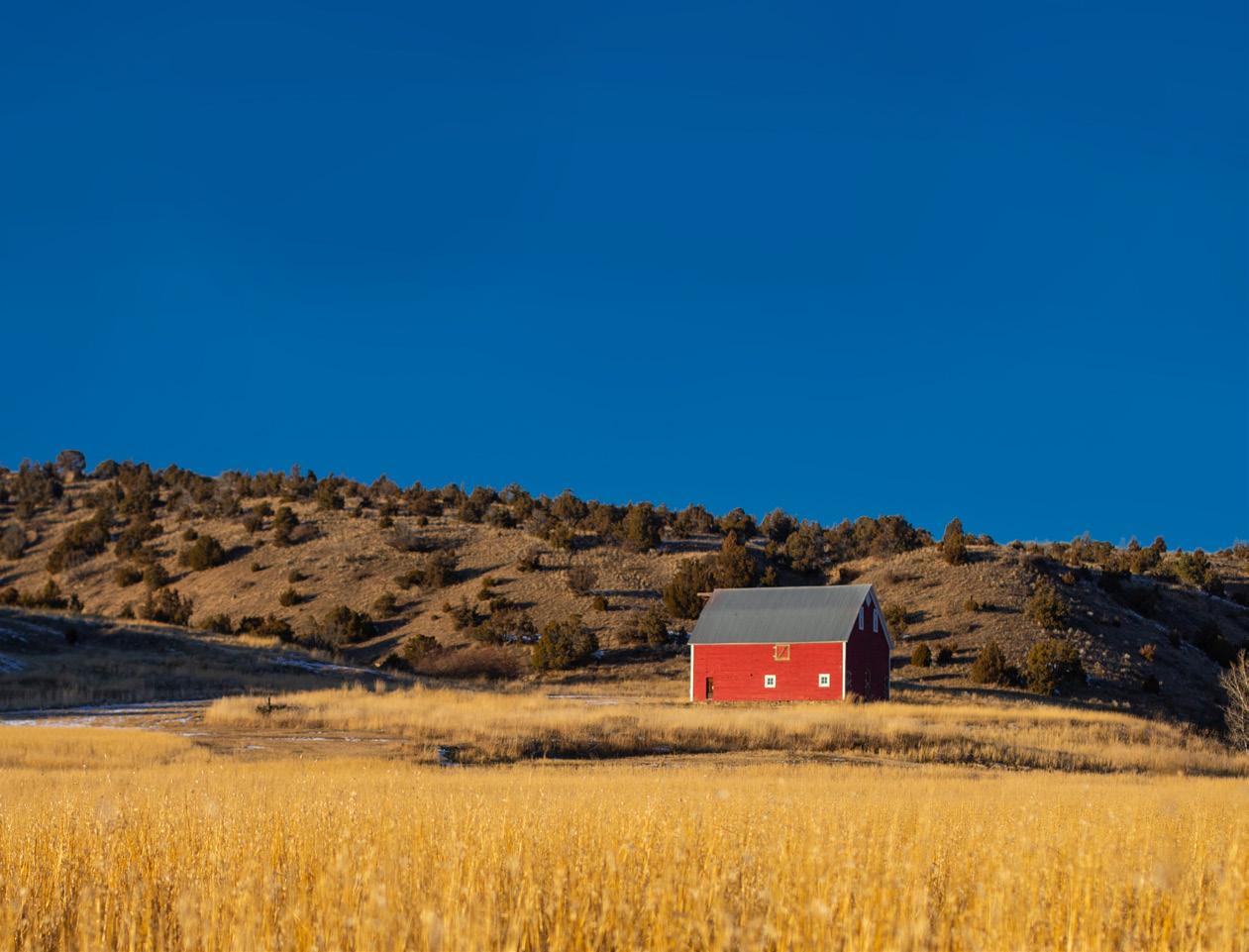
8 | WWW.REPUBLICRANCHES.COM | 888-726-2481
Conservation-minded buyers and sellers are central to Fay Ranches’ mission and philosophy. In fact, that is what attracted me to the Fay Ranches brand, and I strive to contribute to preserving the west and assisting in making a landscape become as productive as it can be, both from an agricultural and a wildlife standpoint. Helping craft conservation easements and informing new ranch owners on best practices is a huge part of both selling a ranch and ensuring it is sustainable and will appreciate over time. Many of our clients are not purchasing a ranch to generate money, but rather as a safe place in which to invest money and, most importantly, for the memories and experiences it provides for family and friends.
Guiding sellers also comes with its own set of challenges, whether dealing with 1031 exchanges, environmental issues, or selling off equipment that has accumulated over the years. The strategy of selling a ranch often starts months, if not years, before actually putting the ranch on the market. In 2020, I had the pleasure of selling one of the cleanest working cattle ranch operations I have ever set foot on. Preparing for this sale started two years before bringing the ranch to the market, and when the time came, the ranch sold itself. Working with a trusted broker from the beginning to diligently plan the sale simplifies the process, and typically brings a higher net on closing day.

Watching my clients’ properties grow into unique and memorable ranches is incredibly rewarding. Getting calls to talk through challenges and brainstorm solutions after a sale is just as important to me as selling the property in the first place. I grew up in Montana, and by the age of seven was fly fishing for rainbows near Glacier Park, stalking white-tailed deer in the Sweet Grass Hills, chasing pheasants in the flatlands of eastern Montana, and sweet-talking elk with my bow in hand. So sharing the simple moments I observe my clients experiencing, like a child landing their first trout, an owner watching fields teeming with wildlife, or even being present when someone takes their first bull elk, is extremely rewarding—and often humbling to be able to be a part of.
My biggest enjoyment in being a ranch broker is watching my clients transform their new purchases into something truly unique and special. When I stop by and they’re implementing fish and wildlife enhancement projects, they tour me around to share the results—the good, the bad, and the ugly. Some clients just add minor tweaks from the low hanging fruit, as we like to call it, whereas I have seen others go over-the-top, turning it more sporty, and creating what I would call an adult Disneyland.
I have been privileged to be a part of several reclamation projects for both wildlife and fishery enhancements, and have watched a few of these projects go from being just OK, to extraordinary ranches teaming with wildlife and hungry trout. One of my
favorites is a ranch located on the Beaverhead River, near Dillon, Montana. This client has taken what once was a moderate level recreation property and created something truly amazing. With precise planning and implementation, his investment in hundreds of mature trees, farming, aquatic enhancements, and stream stabilization has completely transformed the landscape from what it was just four years ago. I consider this ranch to be a concrete pillar of the saying, “If you build it, they will come.”
What once was a ranch that had decent numbers of wildlife has been transformed into a nearly year-round plethora of all things wild. The fisheries have also benefited from better overhead protection, bank stabilization, and spawning beds that enhance the entire ecosystem for miles up and downstream from the ranch.
Having the privilege of getting to tour and recreate on some of the most incredible ranches in the west has given me invaluable knowledge of how each of these ranches is extremely unique. Some clients want fishing, others are looking for top-tier hunting for specific species, and some just want to take in the views and watch the fields come alive at the end of the day.
Since his start with Fay Ranches in 2012, Vinny has represented buyers and sellers as they navigate an array of transactions ranging from a few hundred thousand dollars to large-scale, complicated, and highly prolific eight-figure deals. He takes great pride and enjoyment in working with buyers, sellers, attorneys, accountants, and ranch managers through the course of pre- and post-closings.
800-238-8616 | WWW.FAYRANCHES.COM | 9
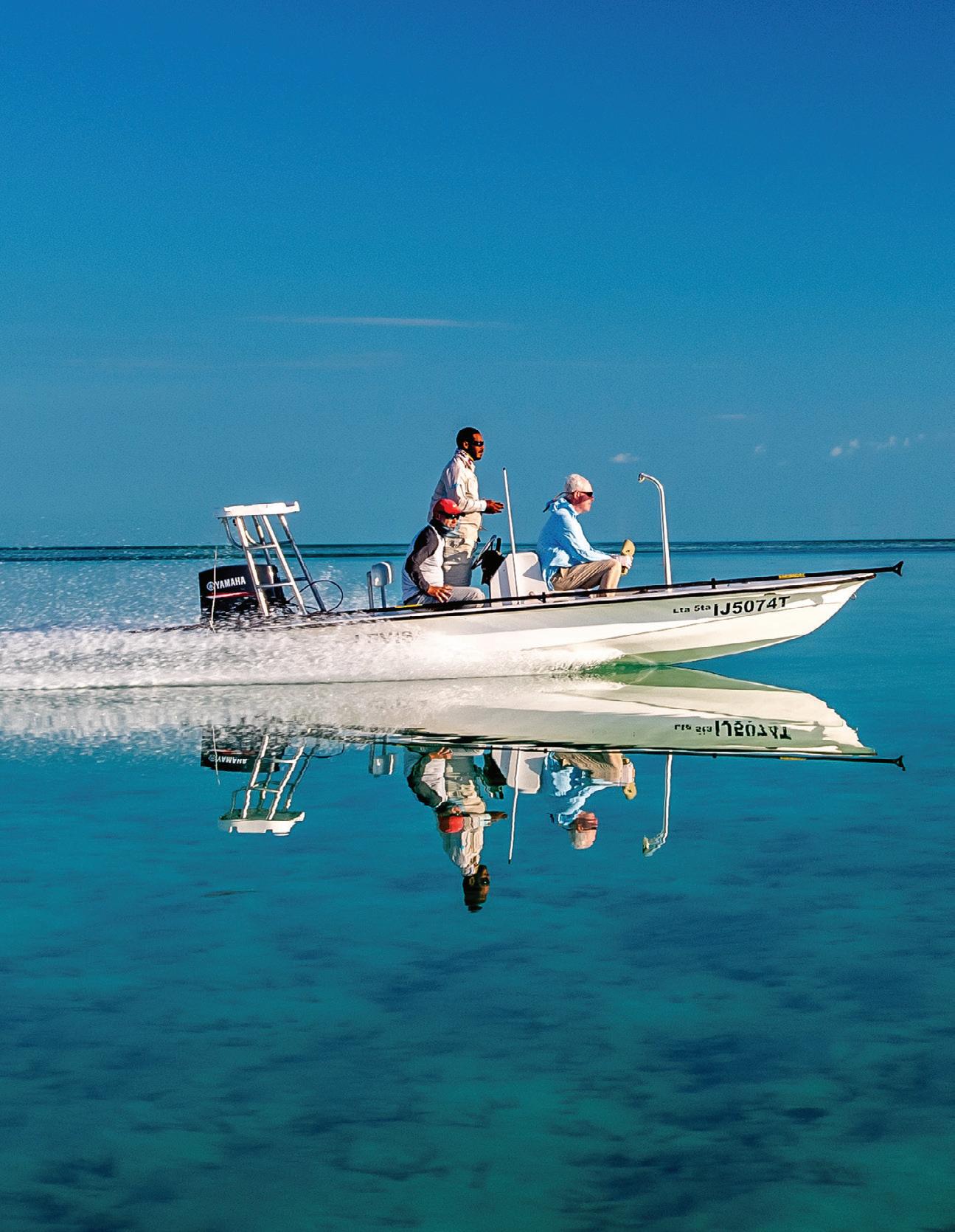



























AFRICA • ALASKA • ARGENTINA • BAHAMAS • BELIZE • BOLIVIA BRAZIL • CANADA • CHILE • CUBA • CHRISTMAS ISLAND • COOK ISLANDS • COSTA RICA • GUATEMALA • DUBAI • GUYANA • ICELAND INDIA • KAMCHATKA • • NEW ZEALAND • SEYCHELLES ST. BRANDON’S • TANZANIA • YUCATAN • UNITED STATES & MORE! FLY FISH THE W ORLDADVENTURES THE BEST FEELING IN THE WORLD, NO MATTER WHERE YOU ARE. IT’S THE ANTICIPATION FOR WHAT THE DAY WILL BRING. IT’S THAT MOMENT WHEN YOU PUT ASIDE YOUR EVERYDAY RESPONSIBILITIES AND WORRIES—WHEN YOU TUNE OUT THE WORLD, TUNE INTO THE FISH—AND ENJOY YOUR PASSION. LET US MAKE YOUR ESCAPE A REALITY. WHO’S READY TO FISH? WWW.YELLOWDOGFLYFISHING.COM • T l ee: 888.777.5060


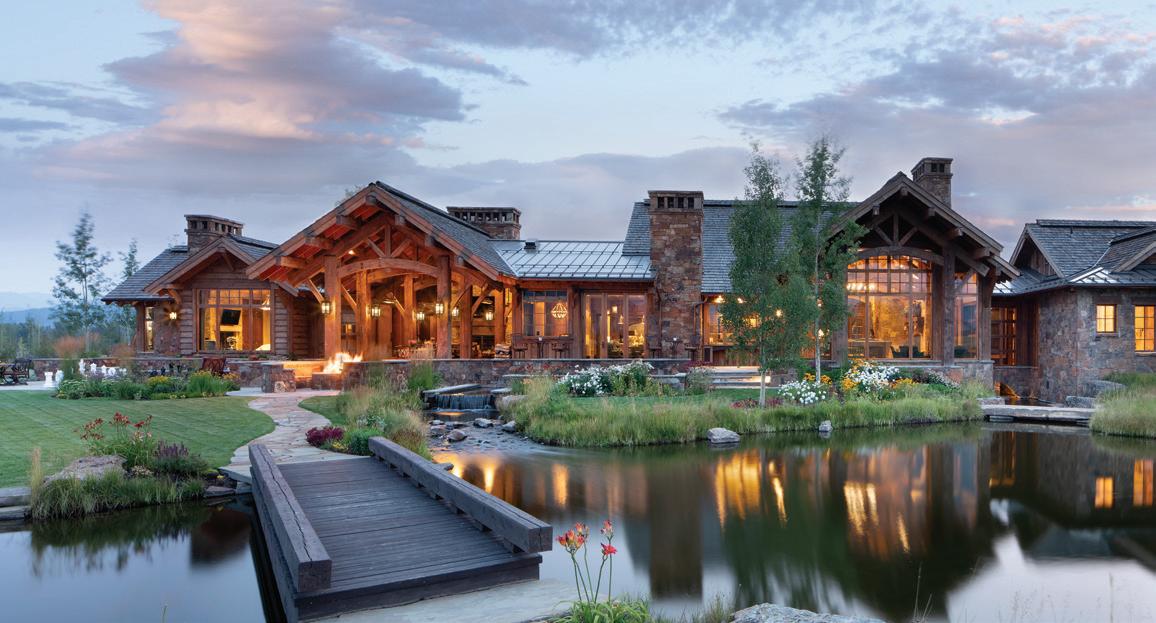

800-238-8616 | WWW.FAYRANCHES.COM | 11
© ROGER WADE
GRASSLAND
HARDER FOR YOU
BY JOETTE SCHALLA, RANCH BROKER | FAY RANCHES

CONSERVATION RESERVE PROGRAM: HOW TO MAKE YOUR LAND WORK
It was once said, “The best thing about the land is the landscape.” A good point, but what is also very rewarding is an additional return on your investment through special programs designed to protect and preserve that landscape.
Many landowners are unaware of ongoing incentives for maintaining or enhancing certain portions of their property, and the financial assistance which may be available. For years, the federal government and its various agencies have provided assistance and incentives to farmers and ranchers. The incentives I am referring to are for specified time frames and are not permanent easements with recorded deed restrictions. These programs have served the interests of American society in several ways: Ensuring the food security of a hungry nation, providing financial protection for producers in times of drought or other natural disasters, offering attractive financing options for first-time agricultural operators, and providing other enticements to encourage people to participate in such crucial vocations as farming and ranching.
Opportunities to earn additional income from working lands continue to grow. A recent incentive option is the Grassland Conservation Reserve Program (CRP). This unique program focuses on conserving grasslands that currently have a grass cover used for grazing, hay production, or growing seed. It is very different from the well-known CRP program established in the Farm Bill of 1985.
Initially, the CRP was established to help improve and reestablish cover on highly erodible land. Over thirty-seven million acres were enrolled and enhanced through the original program, which emerged as an answer to ward off future events such as the Dust Bowl of the 1930s, which changed the ecology of the southern prairies. The Dust Bowl was caused by a combination of soil erosion and the depletion of cover plants, due to undereducated farming practices and poor stewardship of the land, combined with drought and windstorms.
The new Grassland CRP program is funded by the United States Department of Agriculture’s Farm Service Agency (FSA). The program was established by Congress in the 2014 Farm Bill but was formally recognized in the Federal Register in July 2015. The focus of the program is to maintain the current plant cover which protects soils. The intention is to help farmers and ranchers protect grasslands, which include rangeland and pastureland while continuing to utilize these areas for foraging. The program helps provide extra support for grazing operations, biodiversity of plants and animals, and select lands fostering forbs and shrubs with the highest threat of conversion.
The FSA will allot annual payments to participating landowners, who are approved through a ranking process that prioritizes specific land types and locations. The program is offered nationally, but there are some priority zones that earn an applicant a larger score in the ranking formula. The annual payment varies by county, but the national minimum was thirteen dollars per acre for the May 2022 sign-up. The annual rent payment is based on seventy-five percent of the grazing value of the land, which is determined by the FSA. In return for the annual rental payments, they aim to guide farmers and ranchers to enhance the sustainability of their operations while they continue production already in place. The FSA does this by establishing guidelines to graze and farm the land in a manner conducive to maintaining a healthy cover and providing habitat for plants and animals alike, benefiting wildlife along with livestock.
To enroll, contact your local FSA office to get set up in their system. You will have to file a few documents of ownership and will be assigned official farm and tract numbers for your acreage. You must have owned the land twelve months prior to applying for the program. The application to enroll in the Grassland CRP is concise. At the end of the application process, you receive your ranking number. There is a pre-established time frame for the sign-up; once that is complete and all applications have been filed, the Secretary of Agriculture makes the final determination for the minimum ranking score that will be accepted for that year’s offering.
The contracts are either ten or fifteen years in length. Bonus points are awarded if the landowner chooses the fifteen-year option during the application process. As an example, I was able to enroll some of my acreages in the 2021 sign-up. My application was approved, and my contract pays twenty dollars per acre, per year, for fifteen years. When my application was approved, my ranking score was 80.

800-238-8616 | WWW.FAYRANCHES.COM | 13
THE
USES THE FOLLOWING RANKING FACTORS:
◊ Existence of expiring CRP
◊ Existing small livestock operation

◊ Existing grassland
◊ Existing multi-species cover and predominance of native species
◊ State Focus Area (land-based) determined in consultation with State Technical Committee
◊ Applicant is an eligible beginning, Veteran, or socially disadvantaged farmer or rancher.
◊ Cost
The FSA recognizes that, historically, certain groups of people have been at a disadvantage for agricultural programs such as these. So, the current ranking format allows specific classifications of producers to receive ten additional points in the ranking process. Beginning farmers/ranchers, a specific designation assigned by the FSA, are encouraged to apply. Veterans receive the same ten points for applying, as do socially underprivileged groups. As a woman, I received ten additional points as a socially disadvantaged rancher when I enrolled. The FSA has set up opportunities in other programs for such groups, by waiving program enrollment fees and prioritizing loans for these producers.
If fifty percent of the land being enrolled in the Grassland CRP program is in a national priority zone, the landowner receives fifteen points in the sign-up ranking factors and, if approved, they will be awarded an extra five dollars per acre for their annual rent. A landowner can enroll as few or as many acres as they would like, but the maximum amount the FSA will pay out to a producer is fifty thousand dollars annually. If a property sells with a Grassland CRP contract in place, it is transferable to the new owner, just like the original CRP contracts are.
How often does this program become available? This unique opportunity will be limited to two million acres nationally, so the FSA announces each year if and when they will have new enrollments. The best thing for a producer to do would be to contact the local FSA and stay in the loop about any possible sign ups that may come available in 2023.
When a landowner decides to sell land that is enrolled in the Grassland CRP program, they can include the annual rental payments from the program in their production numbers. This helps generate added value to the sales price. Also, a buyer can use the payments as part of the projected income calculation when applying for a loan for the property. The benefits of the annual rental payments are a nice perk and supplement the annual agricultural income on a working property. Beyond being able to continue their agricultural operation, a property owner is still able to camp on their property and enjoy recreational benefits such as fishing and hunting.
What other factors are relevant to the eligibility for enrollment? Let’s spend a moment on national priority zones. The wildlife that inhabits our farms and ranches depend on landowners more than most people realize. To maintain strong numbers of healthy animals, the FSA is working with producers to educate and reward them for maintaining habitat, and for promoting biodiversity on their lands. Not only is protecting wildlife habitats a strong focus of the FSA, but they are also working to protect and stabilize migration corridors. The Greater Yellowstone Wildlife Corridor Priority Zone focuses on southwest Montana, northwest Wyoming, and a region in southeastern Idaho. This region is a national priority zone for the Grassland CRP program.
The Dust Bowl Priority Zone is also a focus of the program. This area is comprised of a large portion of eastern Colorado, most of the western third of Kansas, the panhandle of Oklahoma, the majority of the Texas panhandle, and the eastern edge of New Mexico. These locations have a priority due to their historical susceptibility to drought, wind, and highly erodible soils. The property that I have enrolled in the program is located in eastern Colorado. Several other producers in the area have also been approved and are benefiting from their participation.
As a property owner and investor, I can confirm that we are always looking for additional ways to help the land work harder for us. The FSA offers many more programs that are designed to assist producers. The Natural Resource Conservation Service also offers programs to build infrastructure on your working lands. They can offer guidance in establishing stocking rates and forage management. Hiring a broker with expertise in these programs is in your best interest. As a seller, look for an agent who understands these features, and can properly market the added benefits of your listing. If you’re buying land, a knowledgeable agent can help you find a property that has already been improved or land that can be enhanced through these programs to increase the value and productivity of your investment.
For more information on government-implemented conservation programs, visit
14 | WWW.REPUBLICRANCHES.COM | 888-726-2481
FSA
YOUR LAND. YOUR LEGACY. YOUR FUTURE.


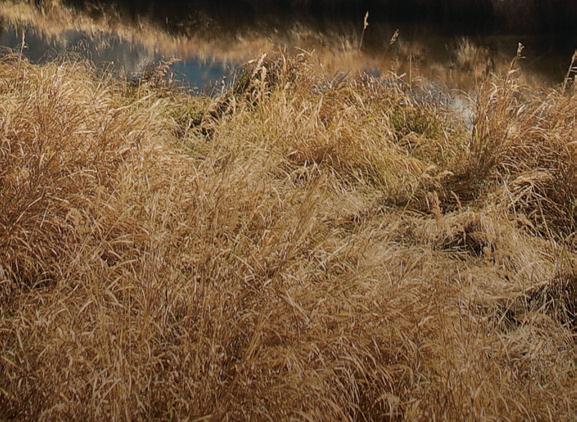

You’re why we’re here. At AgAmerica, we stand ready to help you secure your land legacy with some of the most flexible financing options in the industry. Our national network of relationship managers are committed to providing you with the freedom and flexibility you need to succeed.
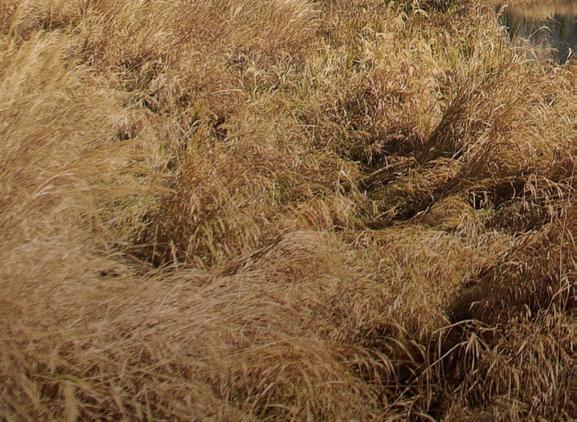
WWW.FAYRANCHES.COM
AGAMERICA.COM | 833.408.1490 © AgAmerica Lending LLC. AgAmerica Lending LLC is a licensed mortgage lender. NMLS ID#372267 SCAN THE QR CODE ON YOUR DEVICE TO LEARN MORE.
FENCING CONSIDERATIONS FOR YOUR NEW RANCH
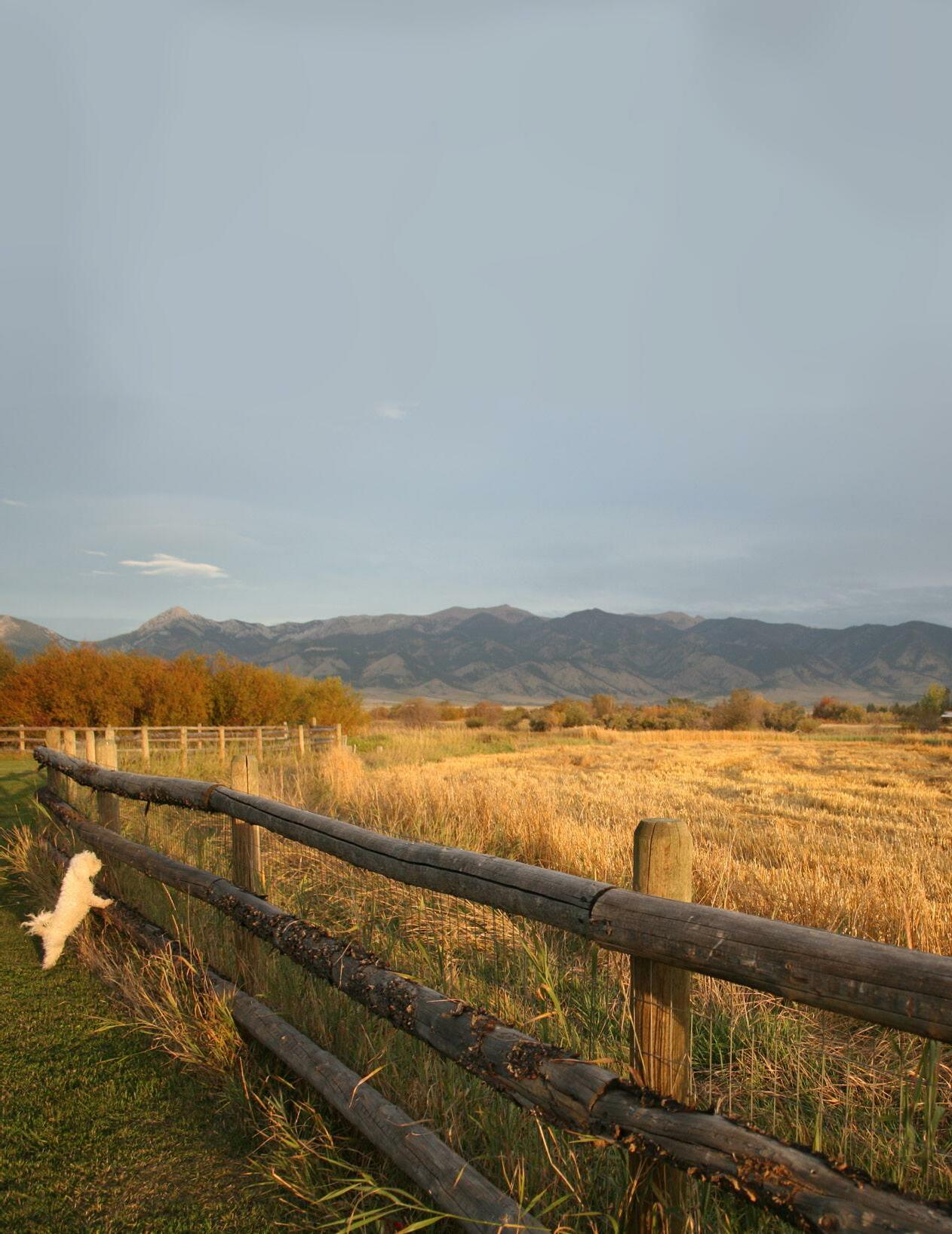 BY DANE REED, RANCH SALES | FAY RANCHES
BY DANE REED, RANCH SALES | FAY RANCHES
hen buying a new farm or ranch, it can be easy to overlook the potential cost, time, and effort of personalizing fencing applications.
Fencing needs will vary widely from property to property, based on the previous operations of the farm or ranch, how the fencing was kept up, and whether or not the fence is on the property line. The primary consideration when choosing your fencing is its function, including lines, gate locations, and materials used. These key elements will be broken down for a better understanding of the cost, time, and effort involved in optimizing the fencing inputs involved for your new property.
When looking at your operation, consider how to optimize the ease of flow for your needs. Questions you will want to ask yourself include how you plan on breaking up the property for livestock pastures, farm ground, and areas you will want to have cut off from livestock, such as houses, outbuildings, roadways, and waterways where you may not want erosion to take place. Also, you might want to think of keeping out potential predators, if you want your fence to be aesthetically pleasing, and if your budget and timeline allow for the type of fencing you select. It may take some time to realize what is going to work best for your needs, so use caution, and keep an open mind for potential adjustments or additions to fence lines.

areas that are along high-traffic roadways, and four-strand fences in areas located in out-of-the-way areas. A bottom wire at 16” from ground level and top wire at 42” is optimal for keeping mother cows and most bulls in. Calves, which are probably going to get out anyway, can get back in to see mama with relative ease. This type of fencing is wildlife-friendly as well.
Horse fencing options have exploded in the past couple of decades, from multiple electric fence options to no-climb horse fence, vinyl, PVC, wood, or metal continuous fence. The questions you must ask yourself are, “What look am I going for– modern or rustic? What is my budget?” Specialty horse fencing can be the costliest fencing on the ranch. Your budget and your timeline will end up having a lot of influence on your fencing decisions.
Sheep and goat fencing usually comes down to field fences, or “woven wire.” This type of fencing can be used in the cattle spectrum as well, but it is difficult to repair and is not wildlifefriendly, so it is usually not recommended by fencers unless your goal is to keep sheep or goats in these designated areas.
The best way to get started on planning your fencing is to look at a map and mark existing fence lines. This will give you a great bird’s eye view of how your fence lines work with the landscape. Check to see if you are utilizing your property in a manner that works best for your animals with respect to water availability and grazing optimization. This will allow you to get perspective on adding or subtracting interior fence lines. Also, mark out gate locations; when moving animals, strategic gate locations will allow easier, less disastrous drives. Wide gates positioned in corners or natural passages will be easier to move animals through than narrow, awkward areas. I like tall posts on gates in open areas, so the animals can see these gates from long distances; the posts act as a waypoint for lead animals. Wide gates are also necessary for large equipment, such as swathers, combines, and semis to enter or exit pastures or farm ground.
There are many different fencing options out there, but what is best for you? “Horse high, pig tight, and bull strong” is a somewhat outdated saying. We now have a wide array of fencing options that are animal-specific. Horses, cattle, sheep, and goats all require different applications, yet there are fence types that will work for all. First, we will put our focus on fence lines, as opposed to corrals or working areas. We will cover those down the line. For cattle fencing, I prefer good ol’ barbed wire. Four or five-strand barbed wire fences still work great for cattle, as they have for many years. I personally prefer a five-strand fence for cattle in

Corrals and working areas need to be strong, and well thought out. The difference between a smooth day working cows and a long, miserable day with wreck after wreck can come down to design and materials used. A well-seasoned cattle rancher or an experienced fencer will be your best friend at this stage in the game. Most ranches are going to have varied designs, depending on area availability and the number of cattle which will be running through. In general, there are standards of easy-flowing corral design. Materials can vary for corrals, but the most common are wood, steel, and guard-rail—overall, strong materials. Even so, you may want to reinforce areas where your animals will be leaning into or pushing against the fence with an additional layer of welded wire, cattle panel, or pieces of tin.
Finally, be sure to inspect your fencing at least annually, and keep up with maintenance and repairs before any major gaps develop. This is not only a good idea for your animals and the wildlife, but it can be a huge time saver for you, as you won’t have to move escaped animals back into the pastures to which they belong.
In closing, it is important to take note of checking out the condition, type, and locations of the fences on your new ranch. Changes and repairs will most likely be necessary for any newly purchased property, so don’t be overwhelmed when reviewing fences and corrals. Getting advice from others is a good option; an outside perspective from an experienced fencer, rancher, or neighbor can provide a wealth of knowledge and ideas for making your ranch work for you. And always remember, “Good Fences Make Good Neighbors.”
800-238-8616 | WWW.FAYRANCHES.COM | 17
AN ODE TO THE WINDMILL
BY JASON HAWN, BROKER ASSOCIATE | REPUBLIC RANCHES

Iam sentimental by nature, and especially so when it comes to Texas and ranching. To me, there isn’t anything more iconic than an expanse of prairie with nothing more than an old windmill on the horizon. We all know this image, and, if you are even the least bit sentimental or nostalgic, it will surely tug at your heart strings.
Water pump windmills have been a staple and, frankly, the lifeblood of ranchers, livestock, and cowboys, for almost two hundred years. However, in the past thirty years, technological advancements and competitive costs for solar wells have made even the most old-school landowners wonder whether the time of the windmill may have passed.
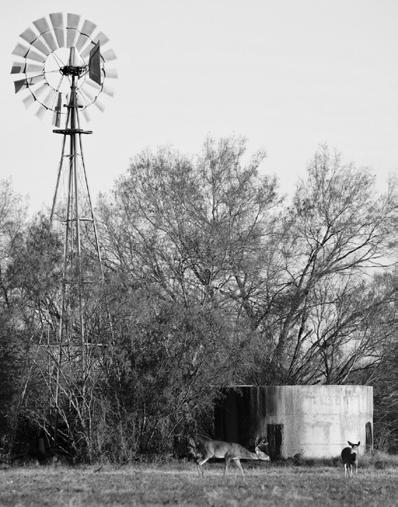
Speaking with sixth-generation rancher, Augie McCan, whose family has been ranching for one hundred forty years in the central coastal region of Texas under the umbrella of McFaddin Enterprises, the cost savings are so great with solar wells that he can no longer justify maintaining the ranch’s thirty plus windmills. Prior to Hurricane Harvey, McFaddin Enterprises maintained over seventy windmills. The storm destroyed almost half of the ranch’s windmills, which have all been converted to solar. Five years out from the devastating hurricane, all of the upgraded wells are producing, with very minimal maintenance required, and have proven to be a sound investment.
While anecdotal, this story reflects the decisions many ranches grappling with higher costs across the board are making. Due to their mechanical nature, windmills inherently need more maintenance. Leathers need to be replaced every two to five years, gears need oiling, sucker rods will rust or wear out, parts to repair are either twenty to thirty feet in the air, or down in the well, to name a few of the most common (and potentially costly) necessary repairs.
Most of us, while not experts on windmills, have a basic understanding of how they work. Since solar pumps utilize modern technology rather than rudimentary mechanics, I think understanding how solar pumps work helps take some of the mystery out of the technology. It’s as simple as this: Solar cells within solar panels absorb photons from the sun and convert them into DC electricity. An inverter converts DC electricity to AC (alternating current) electricity. This electricity is used to operate the water pump. An added option is installing deep-cycle batteries that use the solar power to maintain a charge, and will operate the pump when the cells aren’t producing (such as at night, or during stormy weather).
Solar-powered water pumps have very few mechanical parts, which lessens the chances of components needing repairs. They can last for many years without requiring maintenance.
In fact, good quality solar cells have warranties for up to twentyfive years, and the inverters normally are warrantied for six to eight years.
Normally, just as with a traditional windmill, water will be piped into a trough, holding tank, or pond to supplement when water isn’t being pumped. Solar wells also have the added benefit of pump controllers to regulate the water pump, and allow it to be turned on and off. They can increase the life of the water pump by protecting it from electrical irregularities or motor damage if it keeps running when a water source runs dry. Controllers also maximize water delivery.
Obviously, there are practical considerations when deciding between a traditional windmill versus a solar water pump. What is the average length of daylight, the average amount of wind? Is there a reputable company in your area to service your installation?
I’m purposely not going into a deep dive on the costs of each system. Generally, initial set-up for a solar pump is comparable to set up for a wind pump, and costs for solar go down when you take in the cost of ongoing maintenance over the life of the well. But, there are a lot of options for windmills and solar panels alike, and different areas may require specialized equipment. Furthermore, you must consider how much output you require, and the depth of your local water table, which can change the economics of which system is best suited for you. Most outfits that have traditionally installed and serviced windmills have become proficient in the installation and maintenance of solar pumps, so you should be able to work with a local provider who can design and price a custom solution, and compare the two options. Beyond that, it’s a question of what system best meets your personal budget and goals—and how sentimental you are.

800-238-8616 | WWW.FAYRANCHES.COM | 19
TEN THINGS TO CONSIDER WHEN BUYING A HORSE PROPERTY
 BY ALEX ROBERTSON, BROKER | FAY RANCHES
BY ALEX ROBERTSON, BROKER | FAY RANCHES
Prior to being a broker with Fay Ranches, I spent a ridiculous amount of time around horses. I mean a lot. My mother has been training and breeding horses for over fifty years, and our family tree has many generations with strong ties to the equine industry. The first thirty-three years of my life were spent riding, hauling, feeding, grooming, assessing, and cleaning up after horses. Needless to say, between horse shows, rodeos, ropings, clinics, trail rides, and auctions, I have seen all different types of horse facilities. Some good, some bad, some fancy, and some just plain dumb, or scary. After obtaining my real estate license, I realized my wealth of knowledge was a valuable tool for people buying and selling horse properties. I noticed a lot of nice facilities had overlooked some important things. So, here is my list of things you might not have thought about when looking at a beautifully decorated horse barn with a $50,000 chandelier hanging in it.
MANURE | On a horse property, it happens every day (actually 4-12 times per day, per horse). You will never run out of horse manure, and if you don’t have a good plan, and the infrastructure to handle it, you will be buried in it.
Look and see if the property sequesters it into a pile (as far away from the barns or horse pens as possible) or has spread it across pastures via a manure spreader. Spreading green/fresh manure is good, but aged, composted manure is by far the best, so you might still want that pile. Also, notice how manure is moved from stalls or paddocks to a pile. Manure management is a 365-day-a-year job, so make it easy: do not lift muck buckets into spreaders, trailers, or trucks. Your spine will thank me later. If the horses are going to be in large paddocks/pastures, you can drag manure to spread it.
PASTURE | Obviously, unless your horse “pasture” is with the cows, it is likely to be smaller than a cow pasture, for reasons such as corralling the horse for horse/rider activities. So, you have a horse pasture, and maybe you harrow or drag the manure a few times a year to spread and break it up to compost into the ground. Sounds good, but this is where horse people are way behind cattle ranchers. If you keep horses on the same pasture day after day, year-round, eventually you will start losing topsoil and quality of grass due to the grass being overgrazed without rest (think of working a seven-day-a-week job without a vacation). Cattle ranchers, especially now, use multiple fields to graze, rotate,
20 | WWW.REPUBLICRANCHES.COM | 888-726-2481
and allow rest for pastures. This increases grass production (which might mean less hay for your horse and more money in your pocket) and soil health, which has a multitude of benefits (fewer weeds, less fertilizer, fewer parasites). So, if the property you’re looking at has only one horse pasture, look for ways to divide it up into multiple pastures and reap the benefits.
DRAINAGE | In western Oregon, mud season is roughly six months out of the year (it rains a little in the Willamette Valley). Even in central Oregon, we are prone to warm Chinook winds and rain following thirty inches of snow. This is a huge problem for horse barns: if you don’t have ways to get water away from areas holding a high density of horses, you can be in for some serious trouble. Being stuck in moist, muddy areas can cause numerous health problems, especially for hooves (even in Shakespeare’s time it was said, “no foot, no horse.”). Look for slopes away from barns/sheds; drainage channels; French drains; gutters, and other methods to direct water away from horses.
FLIES/MOSQUITOES | With horse facilities, as in life, you want to keep the manure as far away as possible. This will help the most with flies. Also, since stagnant water is a mosquito nursery, keep water moving if possible (automatic stock waterers with smaller reservoirs can be a good option). If not, consider a fix that is big in Thailand: put goldfish in any body of water; they will eat the lil’ blood-sucking demons. Fly spray systems are available, much like fire sprinkler systems, but costs can be substantial. If you’re looking at a horse property with a lake and/ or pond close by, plan on bug spray, and other mosquito control tactics.
HAY STORAGE | This is a pet peeve of mine, and I see it all the time. A fancy barn with all the bells and whistles, nicer than most Americans’ homes, and the hay is in an empty stall. Sure, it works, but is that the best use of the space? The Fay Ranches slogan is “Invest and Enjoy”, not invest and break your back. Make sure the hay storage is open, with large access (you do not want to carry a 4’ bale through a 4’ stall door), is easy to back up to with a trailer, pickup truck, bale wagon and/or hay squeeze, and tall enough for the equipment (or for you to stand on the pickup bed without hitting your head). Sure, you might find labor to handle bad, hard to access, tight hay storage, but do you want to keep paying for that? Or, what if you can’t find labor to do the job? Proper, well thought-out hay storage is a must.
DUST | Most likely, if you’re looking at property in the western United States, which is predominately an arid climate, you will deal with dust for much of the year. Some places less, some more. We live and play in the rural outdoors to get a little dirty; it’s not all bad. If the dream home overlooks your arena to
the west, with a distance of 20 yards, you might want to invest in some Swiffer dusters. Even the most well-managed horse facilities will have dust, whether they water the arena and paddocks or not. Cowboys on horseback literally created the saying, “Eat my dust,” so consider the placement of the home relative to the rest of the horse facility. Your housekeeper might thank you.
PESTS | Horse barns are like a Chinese buffet for rodents; they want to stop eating, but they can’t—and before long they are bringing the kids along for a cheap meal. Horse feed has made many a fat rodent. Simple fix: include the barn cat with purchase conveyances.
TACK/VET ROOM | If you’re going to have more than a couple of horses at the facility, you need to have a good, finishedout tack/vet room. You want it to be finished with walls (drywall or paneling), heat, a sink, and electricity. Some horse medicines need to be kept at room temperature, and warm leather (or at least not freezing) is much easier to deal with— hence, the finished room with heat. Also, you will need a sink more times than you would think, from washing vet supplies (or even your hands), to mixing feed or medicine. Most importantly, you need electricity for a fridge for beer (and maybe antibiotics and vaccines).
FENCING | I get it: this seems like a no-brainer, but I have seen good money spent on bad fencing. Remember this one rule: the smaller the confinement and proximity to other horses, the higher the grade of fencing needed. Big open pasture? A single hot wire might suffice. A couple of mares in neighboring 12’ x 24’ runs? A wood post and rail fence will fail. No one ever said, “Oh, I put way too strong of a fencing in.” Also, if you are planning on stallions, it is better to isolate them. Keep at least a 12’ buffer between stallions and other horses. Final note: Don’t let anyone tell you that white vinyl fencing without a hot wire is good for horses.
LIGHTING | If you’re going to be busy with horses, you will be out in the dark often. Nothing makes things harder than trying to feel your way through things with a horse in tow. Look for well-placed lights in areas where you might need to operate in the dark (barnyard, hay shed, gates, and stalls you might use for sick/ injured horses and for foaling mares). Light pollution is real, so make sure you can easily turn off lights when they’re not needed and enjoy the nocturnal wildlife.
There you have it! Maybe you thought of these things, maybe not. When you look at your next horse property, some of the points on this list will give you a hand in evaluating its pros and cons or help with how to improve the horse property of your dreams. Most of all, it’s about keeping manure as far away as possible.
800-238-8616
| WWW.FAYRANCHES.COM | 21
MAXIMIZING YOUR TIMBER INVESTMENT
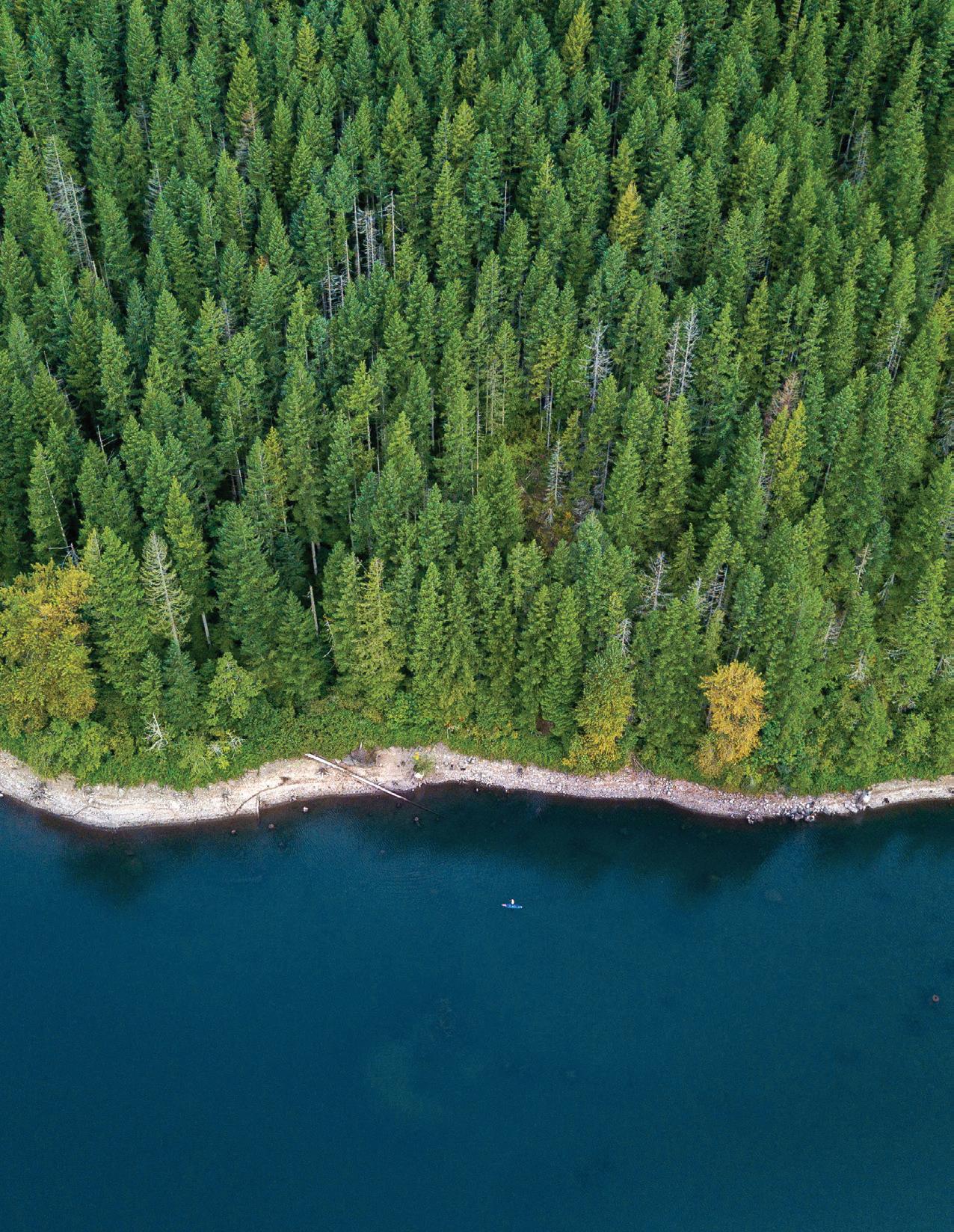 BY TROY DANA, DESIGNATED BROKER | FAY RANCHES
BY TROY DANA, DESIGNATED BROKER | FAY RANCHES
or a timber owner, the decision to harvest is frequently a function of timing and often catalyzed by factors such as the economy, age of the timber, log markets, leverage and, on occasion, naturally occurring events such as infestation, drought, or fire. There are undoubtedly many more factors not mentioned here that would impact a timber owner’s decision to harvest. For purposes of this article, the information below assumes the timber owner is also the landowner. There are cases where the timber owner is not the landowner, but the decision process for harvesting is driven by all the same factors as above, except in the case where the timber owner’s interest has a sunset provision and their interest in the timber is not perpetual.
Once a timber owner has made the decision to harvest, they then need to decide whether or not they are comfortable managing the permitting, harvesting, and selling process, or if outsourcing some or all of the process is preferred. Factors a timber owner should consider at this point in the process are whether or not they have experience in these areas and whether they will be able to maximize return comparable to or greater than the outcome anticipated if the process were outsourced. Another decision to make is what sale format the landowner will use to maximize return. It is here in the process when a timber owner should consult with a Forester who has extensive experience in all aspects of owning, managing, permitting, harvesting, and sales. Things to discuss with the Forester are various sale options, which may include stumpage bids/sale, direct log sales, and contract log and haul.
STUMPAGE SALES
Stumpage sales have been effectively used by timber sellers over the last 30-plus years. In a stumpage sale, sellers identify a stand either by legal description (or shapefile), or stand ID, depending on how inventory is managed. A seller of stumpage will then reach out to a known list of qualified buyers and present the opportunity in a notice of sale. On occasion, if a stumpage seller is feeling bullish and market conditions favor the seller, they might advertise the sale publicly in hopes of gaining new bidders and/or increased competition for the logs. In stumpage, sale bidders are asked to make what is typically a lump sum bid on the standing trees, and the bidder assumes all costs and risks in harvesting and marketing the logs. Bidders are normally expected to conduct their own timber cruise and appraisals and, in reality, they bid at their own risk. If a buyer overestimates the volume of the standing timber, or bids and acquires it just before the market takes a dive, a bidder can lose money. In this instance, most sellers are not terribly sympathetic, given that the inverse can provide better returns to the bidder. Generally speaking, sellers in this type of sales process are all generally credible, quality sellers, but on occasion, buyers can be caught up in scam sales, or a seller may present false or misleading inventory data. Almost without
exception, sellers in stumpage sales where bidding is required will disclaim any defects in the data, the process, or the markets, and the bidder assumes one hundred percent of the risk and liability. These risks can often include permitting, access, and post-harvest regulatory obligations such as erosion control, RMAP, resurfacing of roads, and more.
When making the decision to sell timber, sellers often will do a log and haul cost analysis and compare it to what they feel might happen in a bidding environment. If the seller’s conclusion is that bidding will result in more net income than if they were to contract to log themselves, the bid process is where they will focus.
DIRECT LOG SALES
In some cases, timber sellers will contact local mills or log buyers and get pricing directly from them for various log species and grades delivered to their yard or specified location. In this case, it is the responsibility of the timber owner to deliver the logs to the yard, or another specified location. A timber seller can do this by hiring a contract logger who either has log trucks or can outsource the hauling. Timber owners who choose this option would be expected to have some experience with this process and assume all risk for costs, permitting, and delivery. Timber sellers can see modestly higher values or returns by selling specific species, grades, or sorts to a log buyer who places premiums on this type of log. The inverse can occur if the logger does not deliver logs to spec, the log buyer often drastically discounts the non-spec logs or, in extreme cases, asks the timber seller to transport them to a different location and log buyer. The timber seller owns the logs until they are delivered and accepted by the log buyer.

800-238-8616 | WWW.FAYRANCHES.COM | 23 F
Contract logging can take a wide variety of paths, but we will focus on two widely accepted approaches. A timber seller will hire the logger with a contract based on a percentage of gross log sales, or the logger is contracted to log the timber on a per 1000 board feet (bf) basis. This can include hauling costs or, on occasion, timber sellers will hire a log truck(s) to deliver the logs and the logger separately. In percentage sales, the logger is expected to receive a percentage of gross sales for logging and delivery of the logs. Here, timber sellers typically rely on the logger to optimize value, because the respective interest is aligned. While the alignment is theoretically true, the result for the timber owner is not always better. Things that could negatively impact the timber seller are an inexperienced logger, an overly generous percentage of the gross proceeds, or the logger delivering logs not properly sorted or manufactured, resulting in large discounts to the timber owner. Most loggers are reputable and will often work with timber sellers to achieve the best outcome. It’s probably safe to say loggers prefer percentage sales, because the opportunity to make better than wages is available to them, and they are equally incentivized to do good work and strategically market the logs.
More sophisticated timber sellers generally favor contract logging on a per 1000 board feet basis because they may already have the markets, or they have loggers under contracts at specified rates. Rates vary from $150/1000bf to harvest and deck logs, to $300/1000bf for challenged, steep ground, or logging permits with numerous restrictions or compliance criteria. Hauling costs vary widely, depending on the number of trips a log truck can make in a day. Depending on location and destination, one to three trips per day are common. The timber seller owns the logs until they are delivered and accepted by the buyer.
THINGS TO CONSIDER AND DISCUSS WITH YOUR FORESTER
A single big leaf maple tree can have a retail value of $60,000. As a timber seller, the success of your timber sale depends largely on the knowledge and integrity of the people contracted to harvest. Specialty trees and forest products are other areas where timber sellers can realize value. In the Pacific Northwest, for example, the ubiquitous broad leaf western maple was regarded as a nuisance by most timberland owners and professional foresters. A canopy of 100-year-old western maple (Acer Marcophyllum) can cover nearly 10,000 feet of forest floor if it is in good health. The aesthetic value of these trees in music applications began first on the East Coast and in Europe. Luthiers of the day prized these maple trees for the three-dimensional figure pattern that could be enhanced with stain and lacquer. Luthiers coveted the stripped magical appearance and the look achieved when the artist would book-match two pieces for a violin or cello. Maple was preferred
by Italian violin makers such as Stradivari, Amati, and Guarneri as far back as the 15th-century. They used maple for its superior sound and resonance qualities, as well as the look, predominantly seen on the back of the instrument. Figured maple was a staple in the construction of stringed instruments for the next four hundred years, primarily on the backs of these pieces of art. In the 19th-century, guitar builders, starting with Les Paul and, 40 years later, Paul Reed Smith, began making instruments featuring these stunning figured maple pieces on the front of the instrument. These brands became iconic with the finest figured maple tops. One in one hundred mature maple trees will have what is referred to as curly or flame pattern maple, and one in ten thousand mature maple trees will have what is regarded as quilted maple figure pattern.
THINGS TO ASK YOUR FORESTER
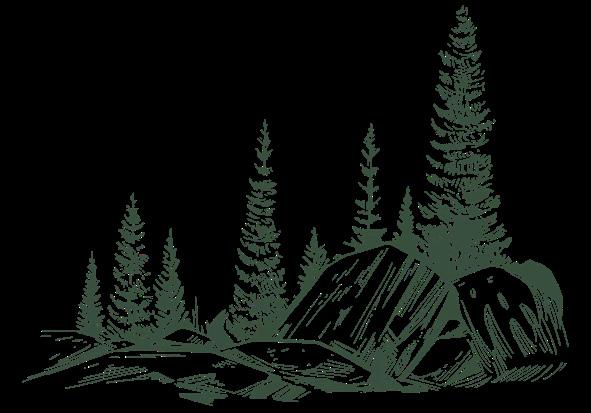
Ask your Forester to do an assessment of the standing trees and ask whether there are high-value specialty trees present and, if so, whether they should be marketed outside of the traditional log yard. Another thing to consider is post-logging impacts. Ask your Forester what, if any, impact will occur if the harvest is clear-cut versus selectively logged. Is the logging likely to impact surface water quality? Will remaining standing timber be wind-firm? Ask your Forester if there are quality trees that would be better left standing for soil stability or habitat, and what they recommend regarding reforestation.
ABOUT THE AUTHOR:
Troy Dana has been an avid woodworker and producer of figured maple since 1980. He built 50 solid-body electric guitars and was featured in Guitar World magazine. Nearly 200 humidors, pistol boxes, and a hope chest later, Troy is often called upon as an expert witness in figured maple appraisals and theft cases. Troy was instrumental in the first Lacey Act conviction and sentence of stolen maple in Washington State.
24 | WWW.REPUBLICRANCHES.COM | 888-726-2481 CONTRACT LOGGING



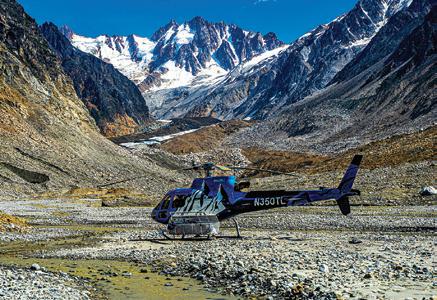


800-238-8616 WE KNOW ALASKA IS ON YOUR LIST. 907-569-5588 | TordrilloMountainLodge.com Just a 40-minute flight from Anchorage, Tordrillo Mountain Lodge is a remote, multi-sport, luxury lodge in the heart of the Alaska Range, where outdoor adventures by day give way to world-class accommodations at night. Whether you’re carving fresh tracks in legendary powder, fly-fishing for trout in clear rivers, or finding a quiet corner on the deck to take it all in, the trip of a lifetime begins here. BOOK TODAY!
WILD GAME PROCESSING: FIELD TO TABLE
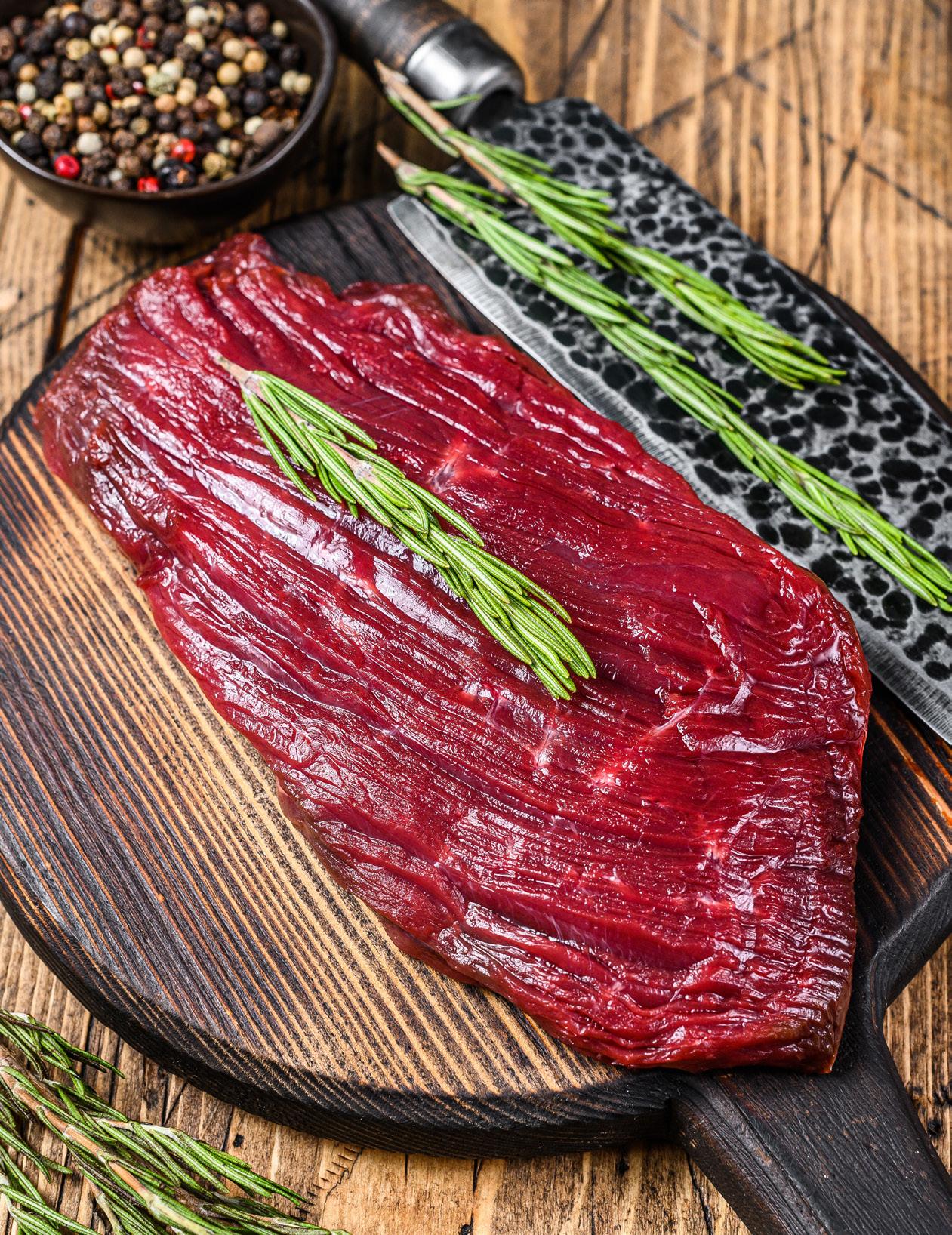 BY SCOTT COE, BROKER | FAY RANCHES
BY SCOTT COE, BROKER | FAY RANCHES
SPORTSMAN’S CORNER:
y earliest memory of hunting is stumbling around the fields looking for pheasants with my dad and uncles at seven years old. I filled my first deer tag by the time I was nine years old, and since then have been addicted to it, hunting every season. Growing up on a ranch in Eastern Oregon, immersing myself in the ranching lifestyle, and hunting as many days as I could, led me to my career in the hunting and real estate industries. Hunting was more than just a sport; we provided food for our friends and families. As I grew older, I was eager to experience more involved backcountry hunts. These require hunters to not only harvest, but also break down an animal, pack it out, and process the meat for the table. As a nine-year-old, harvesting my first big game animal was both exciting and rewarding, knowing that the meat from the animal would feed our family.
The first time I harvested, broke down, packed out, and processed an animal by myself was during a bull elk hunt in Oregon. Bull elk are large and require work to break down and pack out of remote areas. The minute the elk was harvested, the work began. I had learned how to break down an animal in the field by first seeing and helping a fellow hunter do it; he explained the process as he and I broke down the animal for the pack out. We were using the gutless technique, where we did not gut the animal, but simply cut it into quarters and stripped all the meat from the carcass that we could get off. My fellow hunter knew the animal we had just harvested would be rewarding for me, as at that time I had a new family to support. The focus of this article is on processing a large animal after harvest. Let’s assume the animal has been processed in the field and is ready to be processed for eating and storage.
PLANNING
Have a plan for the meat you are cutting up. Know what you want for the loins, the front quarters, the hind quarters, the neck, the ribs, and the grind (excess meat from the cuts to make hamburger). Educating yourself on the various cuts, and on how to prepare meat for consumption will help you create a plan for the processing.
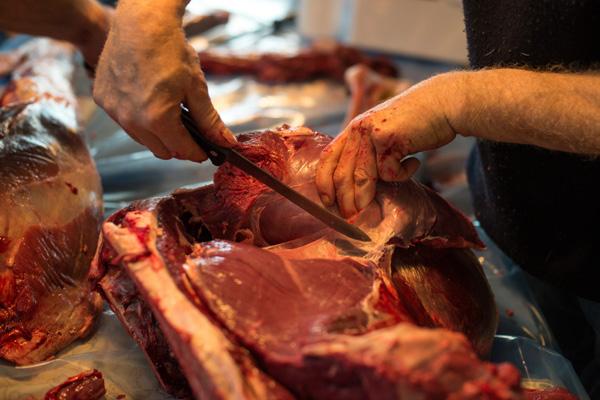
For packaging the meat, I like to wrap individual cuts in plastic wrap, then in a layer of butcher paper, followed by freezer paper. Also, you can use a vacuum sealer, which is a great way to keep the meat from getting freezer burned.
CLEANING
After harvesting and packing out, it is important to get the meat clean by removing any animal hair and debris that is stuck to the meat and rinsing with cold water. When breaking down an animal in the field, it is important to try to keep the meat as sanitary as possible. This is an important step before beginning the trimming process.
TRIMMING
Once you have finished cleaning the meat, you will then proceed to trim. It is important to have sharp knives appropriate for trimming and cutting meat. First, trim the outer layer that has hardened. Sometimes you can remove it like a banana peel; other times, you need to trim with a knife. If you prefer cuts of meat that don’t contain much fat, it is important to remove any excess. In some instances, the fat you leave on the meat may cause it to taste a bit “gamey” when cooked and prepared for consumption. Some of the fat an animal may contain will be very wax-like, and can be a bit unpleasant when eating. Also, along with some excess fat, there will be tendons and other connective tissue that will make the meat tougher to chew. When I trim fat and tissue off the meat, I make sure I do not trim too much. Trimming too much can be a waste of good meat.
THE LOINS
For me, the loins are the most delicious (and are usually the most prized) cut of meat on a game animal. They are generally the most tender cuts of meat, and there are a variety of recipes to make them the most appetizing cut of the entire animal. The loins consist of the backstrap, which is the meat that runs down the animal’s spine, from the neck all the way down to the hip. In my opinion, the loins are the best when they are cut into steaks. I almost always cut the loin into steaks, and make sure they are sized for the way I plan to cook and serve them. The other loins on a big game animal are the tenderloins, located inside the animal on the underside of the spine. This portion of meat will be smaller than the backstrap, but still very tender. I prefer to eat these fresh; the sooner I can get them on the grill, the better. After removing them from the animal and getting them cleaned up, I prefer to butterfly-cut them into bite-size pieces, season them, and either grill or sear them in a pan with butter over an open fire, or on the stove. If you choose to save them for a later date, wrap them in plastic, followed by freezer paper, then freeze them.
800-238-8616 | WWW.FAYRANCHES.COM | 27 M
THE FRONT QUARTERS
As you begin to process the front quarters, which are the shoulders and down the front legs of an animal, you will want a plan for this meat. This part of the big game animal will generally be tougher meat than the hind quarters. I like to make my bone-in roast from the front quarters in a crock pot or a Dutch oven. I use excess meat from the shoulder for the grind, to package as hamburgers.
THE HIND QUARTERS
The hind quarters are the back legs and the hind of the animal, and can yield some very tender and delicious cuts. Butchering the hindquarters can be very simple. As you begin to cut the hind quarter, just follow the lines in the meat. The hindquarter is broken into multiple muscle groups and is just attached by a distinct thin tissue. There are multiple seams that separate the different cuts, which you follow with your knife. If you cut along these seams, the meat will start to naturally separate. As you begin this process, you can eliminate a lot of the work by pulling the meat apart with your hands, and it will come apart at the seams.
The roasts that can come from the hindquarters should end up with three huge, distinct chunks of meat: the sirloin, the top round, and the bottom round. The sirloin will generally be the biggest roast piece and will look very round. This cut can be wrapped in plastic and then in freezer paper and frozen. The sirloin also can be cut into serving-sized steaks. The top round and the bottom round can be kept as roasts and/or cut into steaks. All excess meat from the hind quarters will be put into the grind and made into hamburger.
THE NECK
The neck of a big game animal can be a tough piece of meat. As with the hindquarters, there will be distinct lines you can follow with your knife, and you can cut roast out of the chunks of meat. I prefer to make most, if not all, of the neck meat into hamburger.

THE RIBS
The ribs of a big game animal can be very delicious to eat if properly taken care of in the field. The ribs can easily be removed and kept in a suitable condition to enjoy at the dinner table. I cut the ribs off an animal and break them into portions that will resemble a rack of ribs that you may order in a restaurant. If you haven’t removed the ribs in the field, make sure not to hang the animal too long, or the ribs will dry out and become cured. Also, you can cut the rib meat off the bone, and it makes excellent portions of jerky-sized meat for smoking.
THE GRIND
The grind is all the excess meat left over from the processing of the animal. As you work through the cuts of meat, you will have small amounts left over after processing the other cuts you want. As you get to the grind, you will need a grinder to process the meat into hamburger. It is important that when you wrap the hamburger, you either vacuum pack it, or wrap it in plastic with as little air in it as possible, followed by freezer paper. There are a few things you can add to the hamburger that will give it a better consistency when cooking and add flavor. You will want to mix the game meat with either beef or pork fat, using a ten to twenty percent ratio, depending on your preference.
CONCLUDING THE PROCESSING OF YOUR BIG GAME ANIMAL
Harvesting and processing big game takes time and effort. Preparing and executing the harvest are only the beginning steps. Processing the meat brings the journey full circle and can create a deeper appreciation for the animal. Enjoying the benefits of organically processed and harvested meat with your family is a culinary experience second to none. This always takes me back to my roots, allowing me to appreciate the obstacles our ancestors had to overcome to provide for their friends and families.
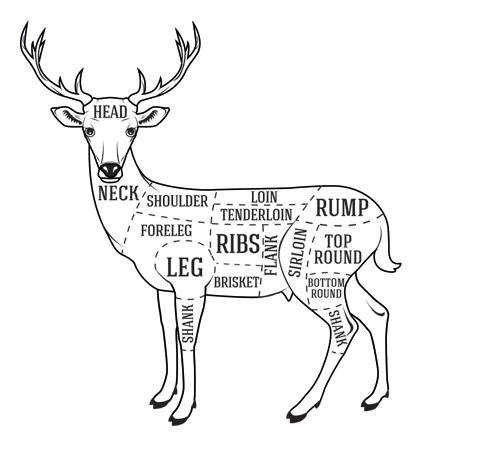
28 | WWW.REPUBLICRANCHES.COM | 888-726-2481
VENISON CUTS
Every year, DSC hosts its annual Convention that raises funds for grants in conservation, education, and advocacy. The four-day 2023 DSC Convention is open to the public and will fill over 800,000 square feet with 1,000 exhibitors featuring outfitted hunts, firearms, gear, wildlife art and much more.

Every year, DSC hosts its annual Convention that funds for grants in conservation, education, and advocacy. The four-day 2023 DSC Convention to the public and will fill over 800,000 square feet 1,000 exhibitors featuring outfitted hunts, firearms, gear, wildlife art and much more.
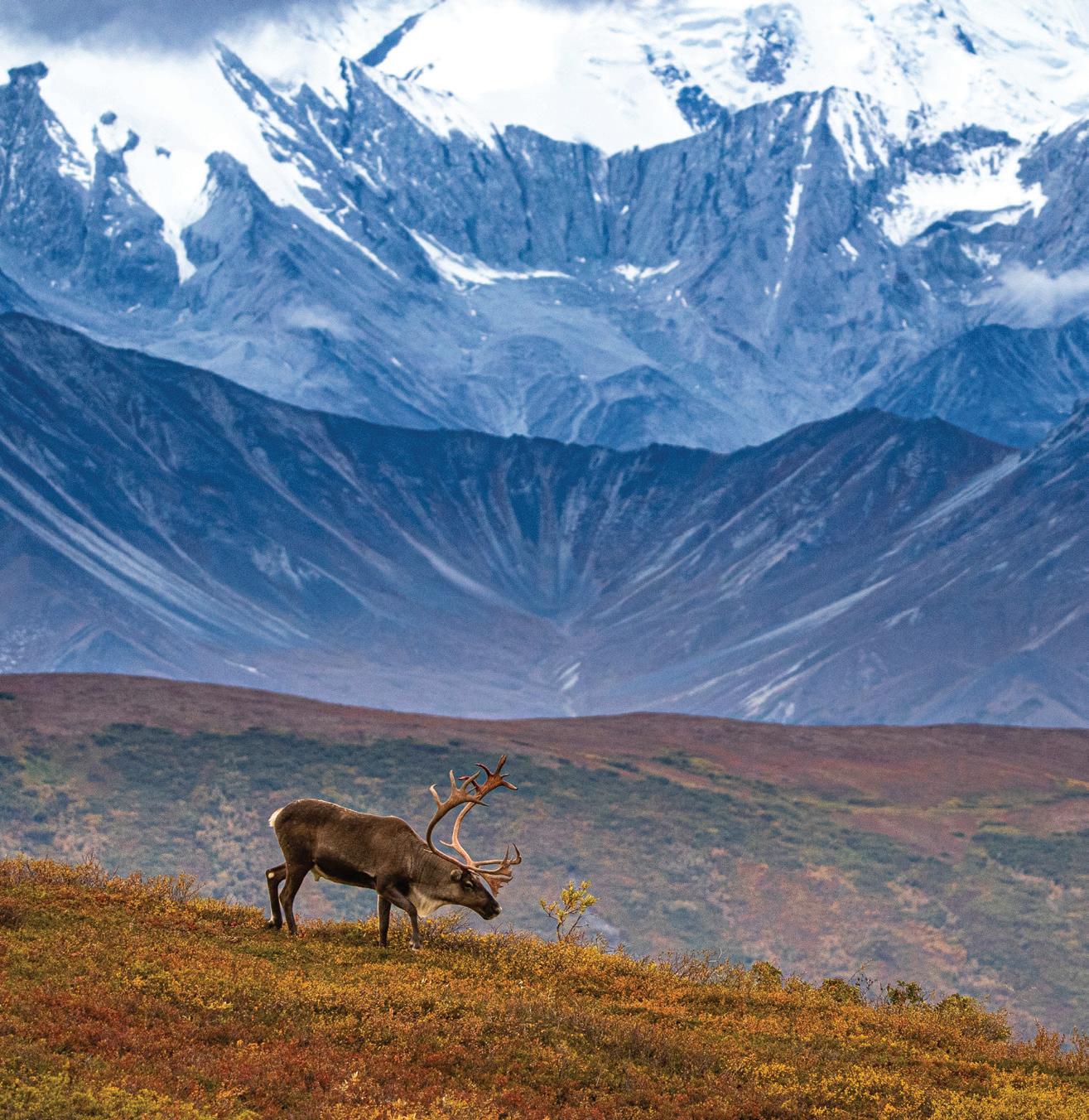
800-238-8616 | WWW.FAYRANCHES.COM | 29
SEE YOU AT THE 2023 CONVENTION | January 5-8, 2023
SEE YOU AT THE 2023 CONVENTION | January 5-8, 2023
THE BROWSE RANCH
BY NEIL BANGS, PRINCIPAL BROKER | FAY RANCHES
Through my years of ranch real estate, one thing that has become very apparent is the expectations of what a cattle ranch should look like in the eyes of a buyer. Most buyers picture waves of knee-high grass, lush, irrigated hay meadows, mountains of stored hay, and live water running through the ranch. Although this description does in fact occur in Wyoming, it is not the norm for a quality, successful cattle ranch here. Over the years I could have easily won bet after bet with buyers that the cattle they were currently viewing will feed on some brush-like browse plant. They would look at me with skepticism until we would see a cow and calf feeding on one of these browse plants. I have had clients literally demand that I stop the truck so they could get out and investigate the plant that these cattle were feeding on, shake their heads and then say, “I can’t believe they are eating that”. They immediately go back to the data sheets on the individual browse plants that I had provided and begin to read and discover the benefits of these plants and a whole new world opens up right before their eyes. This brings me to the most misunderstood type of cattle ranch out there, the Browse Ranch.
Browse means brush or woody types of plants. Most people have no idea that cattle will feed on these plants much like a deer, or

an elk will and even less of a picture of the value of some of these browse plants add to a ranch. These ranches are found throughout the United States, but I will concentrate on Wyoming for the purpose of this article. These ranches are certainly not a picture of what I described above. They are typically a short hard grass ranch, which may or may not have multiple seasonal types of grass, and are usually in a high desert climate, which pretty much covers the whole state of Wyoming. The benefits of these browse plants are often multiple. They will offer a source of feed at certain times of the year and protection against the elements. As one rancher put it, “It’s like an all-you-can-eat buffet!”.
Browse plants are appealing to cattle at different times of the year. Some are early spring, some in the summer, and some are excellent winter forage. The most consumed portion of these plants are the new growth and tender leaves. This is mother nature’s way of taking the pressure off of the grass. It is incredible to watch the cycle of these ranches, one day, every cow is grazing on grass, and two days later, a seasonal browse plant has ripened to the cattle’s liking, and the cattle are feeding on nothing but that plant. After the browse plant has run its course, the cattle go back to grazing on grass until the next browse plant comes into season. Indeed, the more species of palatable browse plants on a ranch the more
30 | WWW.REPUBLICRANCHES.COM | 888-726-2481
forage for the cattle, taking the pressure off the grass. This allows the grass to either get a good start in the spring or rest for a short period throughout the year. During times of rest, a timely rain can make all the difference.
The ability of plants to survive grazing or browsing is called grazing or browsing resistance. The most grazing-resistant plants are grasses, followed by forbs (herbaceous plants other than grass) , deciduous shrubs and trees, and evergreen shrubs and trees. Browse use can be divided into three levels of current season growth removal: light use is marked by less than 40 percent removal; moderate use ranges from 40 to 65 percent removal, and heavy use is more than 65 percent removal.
Many landowners now manage both livestock and wildlife on the same piece of property. These Browse Ranches offer the ideal scenario for that as these plants benefit many wildlife species as well. Wildlife does best where a variety of native plants, including broadleaf forbs and brush, provides not only food for various wildlife species, but also diverse cover and protection.
People are amazed that many of these plants are high in crude protein, some upwards of 18-20%. With that kind of protein content, the cattle on these ranches tend to look like a 4-H show animal, sleek and slick like they are ready to go into the show ring. The protein content certainly depends on the plant itself, the part of the plant consumed, and the time of the year the plant is consumed. A bonus to these plants is that most are drought resistant. These plants are mostly native and have stood the test of time.
The next question is: What type of cow resides on these ranches? They are typically medium-frame cow that will get up and travel. These cattle need to travel as these browse plants are usually scattered throughout the ranch, and different species of browse plants grow in other areas. Bringing cattle used to feeding on irrigated pasture and dumping them onto a ranch like this will not work well. If one decides to purchase a ranch of this type, buying the sellers’ or local cattle is ideal. Most ranchers run young bulls since they are a very mobile set of cows, and an older bull will tend to get lazy and not travel.
Stock water, like on any ranch, is critical as well. Since these cattle are moving so much, having multiple water sources is essential. It defeats the purpose of having a cow travel all day to feed, turn around, travel to water, and start walking off pounds. If water is not readily available, like on any ranch, forage utilization will be over-utilized in some areas and underutilized in other regions.
have had basically the same scenario: average Black Angus cross cattle, they have all ran young bulls, and they have all relied on one or more browse plants as a source of forage for their cattle. None of these ranchers have gone through the time, effort,and expense with genetics to improve feed conversion in their cattle, they all simply have good cattle. The ranches have been in completely different areas of Wyoming. But the reoccurring statement is, “once my calves hit the feed lot, they just explode and are usually the top gainers or at the top”. So, the question I keep asking, is there some reason that these cattle raised on these Browse Ranches convert feed better than cattle raised on different types of ranches? Is it just a coincidence? Does their diverse diet have some effect on how they convert feed? Are they getting more nutrients from their mother while nursing compared to other calves? These ranches are certainly intriguing. There is a reason they grow big mule deer and big antelope.... No wonder they grow great cattle!
The purpose of this article is to shed some light on these types of ranches. I want to clarify that not every ranch in Wyoming has palatable browse species on it. But I do want people to scrutinize a ranch differently. At first, glance, what may seem a wasteland and useless may be one of the ranch’s most valuable assets. What may look like a task to be completed by removing unwanted brush so grass can grow may hurt the ranch. Your local Natural Resource Conservation Service (NRCS) or the local Conservation District office is an excellent resource for information on plants such as these. Arm yourself with knowledge and remember there are many people and agencies willing to help, the Fay Ranches Ag Team is certainly some of those folks.
Below is a short list of some of the palatable browse plants in Wyoming that are highly beneficial to ranching and wildlife:
WINTERFAT | Typically winter forage, but cattle will feed on it during the spring and summer. 10%-21% crude protein
(SALT SAGE) | Typically winter forage, Crude protein 4-18% depending on the time of year and the part of the plant being digested.
GREASEWOOD | Typically spring forage. Crude protein is approximately 8.7%




After being involved with several of these ranches, one question has stood out in my mind that I cannot answer. All of the ranchers
RUBBER RABBITBRUSH | Typically midsummer to fall forage. Crude protein is approximately 9%
800-238-8616 | WWW.FAYRANCHES.COM | 31
SEASONS OF THE SOUTHEAST
 BY BRIAN EISCHEID, BROKER & CLAYTON JEFFORDS, BROKER | FAY RANCHES
BY BRIAN EISCHEID, BROKER & CLAYTON JEFFORDS, BROKER | FAY RANCHES
here are many ways to measure time. The days, weeks, and years seemingly continue to pass us by with increasing and unsuspecting swiftness. We often want time to stop, to hold memory and moment in our minds forever. Moments of being in the woods, on the water, and in the mountains bring a refreshing perspective to an everchanging world. Our experiences in the elements provide a chance to spend our time with friends and loved ones. Some measure the year by the summer, fall, spring, and winter seasons. In the Southeast, sportsmen and outdoor enthusiasts measure time through the seasons of fishing, hunting, and college football.
As our time in the Southeast winds towards the months of fall, we are welcomed with fields of life. The dove fields receive the first planting of the year. There is an array of planting to do, but one crop has been a staple for this small game species for generations before us—the sunflower. Perfect yellow flowers provide the seeds that will reveal the first signs that our hunting time has arrived. The beauty of dove fields is that they can be added to properties of any size. Dove season provides a more casual and social approach to hunting; sitting on the perimeter of a yellow field, under a welcoming canopy of pines or hardwoods, gives us the opportunity to reconnect with friends and family afield. The sound of a mourning dove perched in a nearby tree is drowned out only by your partner rifling through a bucket for another handful of shotgun shells. These partners have been with us over the years, providing countless memories and stories to recount over a grill full of jalapeno dove poppers, a simple, classic recipe. The promise of cooler temperatures and Saturdays on the gridiron encourages us to begin planning for what is yet to come: fields that need our tractors and seeds for later season food plots, and duck blinds that need careful maintenance after weathering months of spring and summer storms. The clock has started on our next chapter as we welcome this passage of time.
As the fall season progresses, the Southeast experiences the first of a variety of whitetail deer hunting opportunities. Beginning with bow season, sportsmen and -women relish the chance for an up close and personal encounter with a deer. The stillness and beauty of the southeastern landscapes during the cool mornings or quiet afternoons seems to slow the passage of our seasons and forces us to be present in the moment. As the season continues into winter, through muzzleloader and rifle calendar dates, the waterfowl season presents itself. The Mississippi Flyway is wellknown for providing early morning, cold-weather-tolerating waterfowl enthusiasts a chance to witness the sunrise against a sky that is, hopefully, covered in silhouettes of wings. For many in the Southeast, waterfowl season is the pinnacle of their annual quest for southeastern game, and for good reason. Duck and goose season combines various aspects of our yearly adventures. It offers a chance to reconnect with others in a duck blind, to be social
while waiting on the next group to begin circling the spread of decoys that have been meticulously laid out in the early morning darkness. It challenges us to go into uncomfortable areas, into the habitat of these beautiful and clever birds.
The season for hunting wraps up with one last thrilling chase. The forests and fields begin to turn green again as we look to chase the elusive thunder chicken (a name for turkeys in the South) as they wake the woods, gobbling from their roost. We give chase to these birds in a one-on-one quest to best one of our nation’s most noble game animals. Always trying to outwit this wily bird, we spend our mornings and afternoons wondering what his next move may be. A cluck or gobble in the distance to the east quickly moves behind us, as if by an act of magic. Hearts pound and hands begin to shake as the bird comes strutting towards us, chest puffed out while presenting a fan of feathers, a long beard, and spurs, demonstrating his years of outsmarting even the most veteran of hunters. While frustrating at most times, the moment when it all comes together marks not only an overwhelming feeling of gratitude but the day when the season once again begins to warm.
There is a distinct rhythm to life and the seasons in the Southeast. We reflect on our previous adventures during the warmer months of chasing mountain trout in the Appalachians, largemouth bass and stripers in the lakes and rivers that meander through the hills and plateaus, crappie and bluegills in the farm ponds, or trout and redfish where the freshwater meets the salt (a few more months until the kickoff of football and dove season). So goes time from our ancestors and continues now: what to plant, what to plow, what to harvest, and what to plan. It’s hot, the middle of summer in the South, as we slip into that mountain getaway trout stream to cool off and get lost in the mountain laurel and rhododendron, listening to the stream’s soul-healing tune. Other times, as they say, if you can’t beat the heat, join it. Chasing inshore and pelagic fish at the coast, hosting family and friends along the southeastern lakeshores, or watching the summer sun fade from the dock are all enjoyable ways to embrace summer’s fiery warmth.
We live these traditions; we pass them on and share each one not just with our families, but with our clients, who often become family. When investing in the lifestyle we strive for, it is almost impossible not to bond over a piece of property and make new, lifelong relationships. We don’t just help our clients realize this dream; we share it, passionately. We love what we do. Coast to coast, from the mountains to the sea.
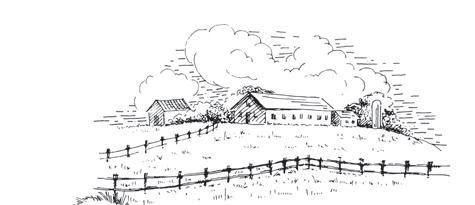
800-238-8616 | WWW.FAYRANCHES.COM | 33 T
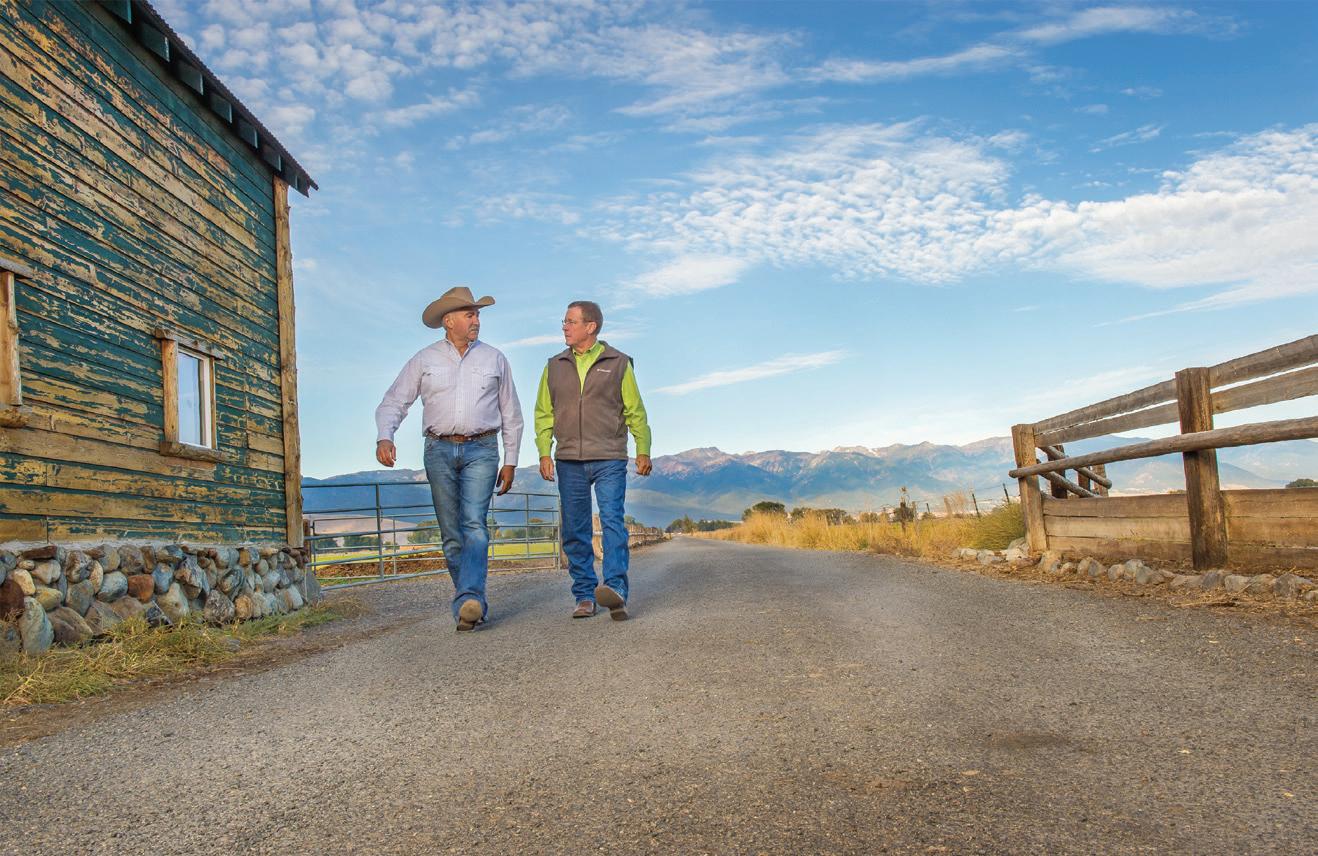

Found the perfect ag property? Talk to the rural financing specialists. 406.556.7300 | northwestfcs.com Northwest Farm Credit Services’ highly experienced relationship managers are skilled at helping qualified buyers assess and finance rural properties. With more than a century of experience in the field, we understand the unique challenges and opportunities of financing agricultural and timber properties. From production ranches to recreational agriculture properties, we can work to create a customized financing plan that meets your specific needs. Contact us today for more information.
Make Clean Water


Flats A Part Of Your Legacy.
And Healthy
Support Bonefish & Tarpon Trust today and help ensure a healthy flats fishery for generations to come. Learn more by visiting: www.btt.org/donate
Photo: Scott Morrison
CONSTRUCTING A NEW HOME ON A RURAL PROPERTY
BY MARK MATTHEWS, PARTNER/BROKER ASSOCIATE | REPUBLIC RANCHES

You’ve decided to build a new home on your ranch. What next? Rural construction presents many unique challenges compared to urban construction. To be successful, you need to understand what’s involved, and what choices you have.
First and foremost, have a complete set of professional plans. Having a set of plans will save time and money. Next, have a dream budget and a realistic budget—and understand the difference. If you don’t have the money, or are within ninety percent of your budget after estimates, either don’t start the project, change your plans to fit the budget, or spend more money.
Next, decide who is going to oversee the project. Will you hire a general contractor, or will you be your own contractor? Are there any general contractors in the area, or will you have to hire one from the city? Asking an urban builder to build a house on a ranch can be risky. Will they know how to get water, sewer and electricity for the home? Will their subs drive that far? Will you provide a place for workers to eat and sleep? My experience has been that an experienced local general contractor will outperform both a builder from the city, and an owner acting as a general contractor. Knowledge of the local labor force, utility providers, and suppliers is well worth the contractor’s fee. That being said, check references, and look at several of their projects.
Fees aren’t the only thing to negotiate with the general contractor. Have a construction contract, and have an attorney review it. Start with the terms of construction cost, plus the contractor’s fee, or a firm bid. If you are comfortable with the contractor, ‘cost plus’ can be a better deal for both the owner and the contractor. With this format, a builder should be able to present some categories with firm bids. This would include items like the foundation, lumber, plumbing, electrical, and framing labor. Other categories, like trim, would include estimates; fixtures and countertops would be allowances. Firm bids may provide a feeling of security, but they can have a substantial cushion built in for the builder, and change orders can be expensive.
Another item in the contract to consider is insurance, and workers’ compensation. Depending on the area you are building in, many subcontractors may not carry liability insurance or workers’ compensation. Requiring them to have it may force your builder to hire more expensive subs from urban areas. Your rural builder may have alternatives that will be acceptable to you and your attorney. One example would be to carry uninsured subcontractors’ insurance, if it’s available in your area. Additionally, it may be advisable to have all subcontractors sign independent contractor agreements.
WHAT TO CONSIDER WHEN CHOOSING A BUILD SITE
1. Unlike building on a lot in the city, you have many options as to where to place your home. Know where the floodplain is—and don’t build in it. If you do, make sure you have an engineer design the site, so your house won’t flood.
2. How far is the site from existing electricity? Moving electricity can cost $15,000 and more per mile.
3. You’ll need to build a road to get to your new house.
4. What’s the soil like at the site? Make sure you have an engineered foundation. It usually costs more to build on unstable soils, slopes, and solid rocks.
5. The orientation of the house is critical. Most owners are tempted to face certain parts of the house towards what they want to look at. Just as important is to consider outdoor spaces, and how and when they will be used. Use the house to block cold winds in the winter, catch cool breezes in the summer, and to block hot setting suns.
Certain factors that affect cost, like building materials, finishes, and fixtures, are similar to those for urban homes. The differences are usually in the cost of delivery. Companies charge more to deliver to a rural site than they do an urban location. Labor is another area where you’re likely to see higher costs. The number of local subcontractors is dramatically different than in the city. With less competition, it is harder to negotiate fees and secure multiple bids. That being said, don’t be too quick to fire all your subs when things get frustrating. Do you want to paint your own house?
Building on your property is a very exciting, though challenging process. Things will go wrong, and they will take longer than you expect. Be patient. The current building environment has been especially challenging due to increased costs, and material and labor shortages. A home that could be built three years ago for two hundred dollars per square foot could cost well over three hundred dollars per square foot today. Hire a general contractor who will be a part of your team. It will be worth it in the end.
800-238-8616 | WWW.FAYRANCHES.COM | 37
OPPORTUNITIES ON MIXED DEEDED AND FEDERAL LAND LEASE RANCHES: WHAT TO CONSIDER
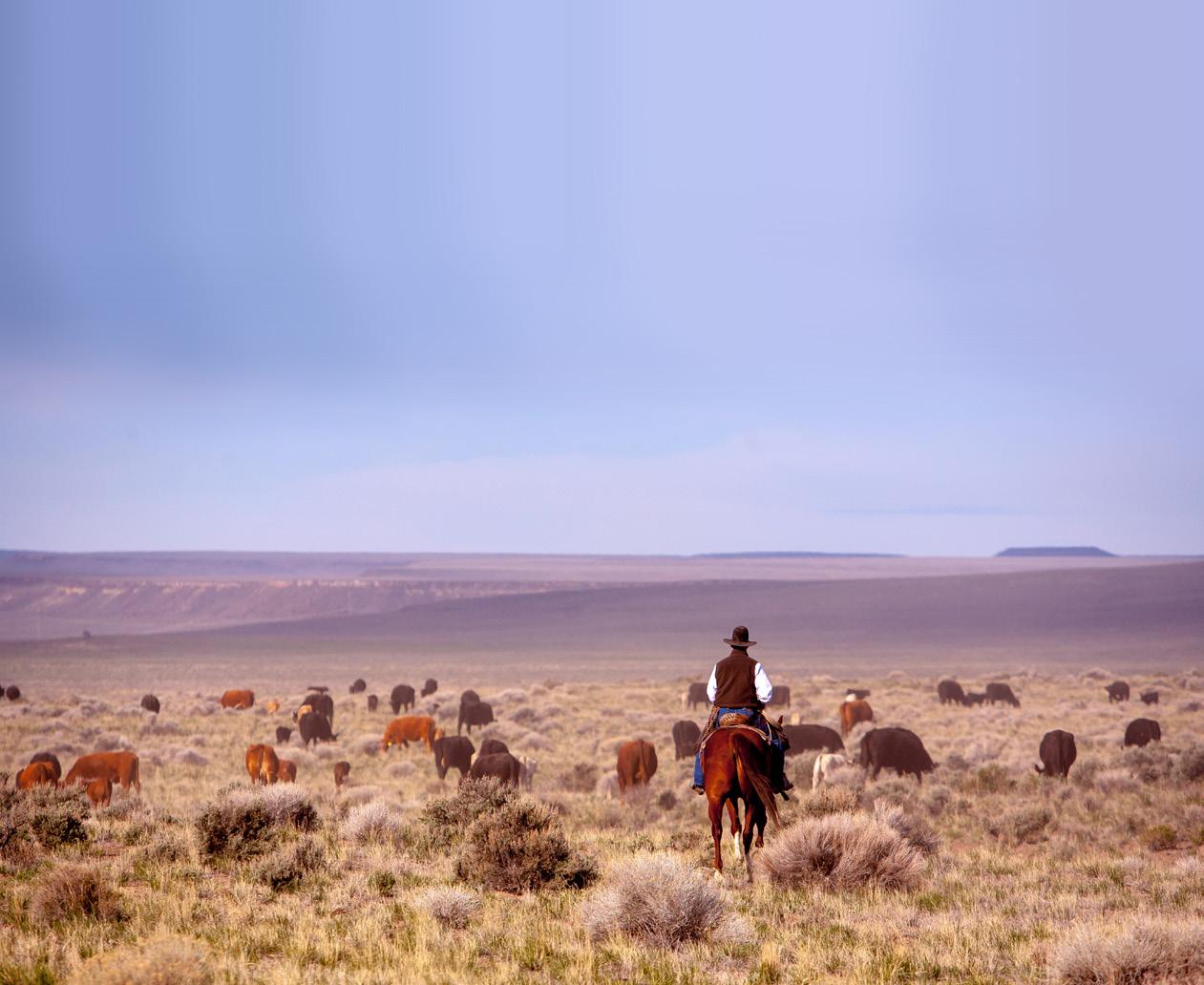 BY RIK THOMPSON, BROKER ASSOCIATE | REPUBLIC RANCHES
BY RIK THOMPSON, BROKER ASSOCIATE | REPUBLIC RANCHES
In a previous article in this publication, I discussed the initial thought process for the purchase of your first ranch as a business proposition. Many factors will determine the various revenue opportunities and limitations for your ranch business. The location of your ranch, and the makeup of the types of land control and ownership are likely the major factors. There are other considerations, though.
Here in the western United States, many, if not most, large ranches of five thousand acres or more are a mix of deeded and some type of federal government leased land. (Note: Although we are addressing federal land in this article, many ranches here in New Mexico also have New Mexico State Trust Lands as part of the grazing operation.) This mix of land ownership type is a large factor in the potential opportunities that may be available to the ranch operator.
Some of those other factors are:
◊
The federal government agency which is leasing the land to the rancher - United States Code and department regulations and policy will govern the regulation of grazing permits and other permitted uses for National Forest, National Grassland, and Bureau of Land Management
Geographic location of the ranch
Other entities who need access to or across the land, or for other permitted uses of the land, both deeded and leasedThis can be oil and gas producers, pipeline companies, other extractive companies (miners, gravel or caliche pits, water suppliers, etc.), wind or solar companies, and so on
Status of mineral rights and water rights on the deeded and leased portions of the ranch
38 | WWW.REPUBLICRANCHES.COM | 888-726-2481
◊
◊
◊
The US Forest Service (USFS) and the Bureau of Land Management (BLM) both issue grazing permits for much of the federal land under their management. The vast majority of those grazing permits are in current use. When purchasing a ranch that utilizes a USFS or BLM grazing permit as part of the operation, it is vital to understand the type and terms of the permit associated with the ranch operation. There are standardized USFS and BLM processes for transferring the grazing permit to the new owner, and they are different in many ways. Some things to review and consider as part of your purchase decision process:
◊ If considering the purchase of a ranch utilizing a USFS grazing permit, review the current USFS Grazing Permit Administration Handbook; it is readily available online.
◊ For both USFS and BLM, study the actual grazing permit itself. Read the fine print—and read the whole thing a few times. Individual permits will describe terms and conditions that must be followed by the operator, such as term of permit (usually ten years), season for use each year, kinds and numbers of livestock, movement criteria, and range condition limitations.
◊ For both USFS and BLM permits, the permittee must own the “base property” associated with the permit, though there are some exceptions for BLM permits. I think of this as the Ranch Headquarters.
◊ For USFS permits, the permittee must own the livestock that will be grazing on the permit. That is also the case for most BLM permits I am familiar with, but it could be different on your permit.
◊ Limitations on ownership types (personal, business, estates, trusts, etc.) are more specific on USFS grazing permits than on BLM permits, but regardless of the agency, the specific regulations need to be followed to the letter.
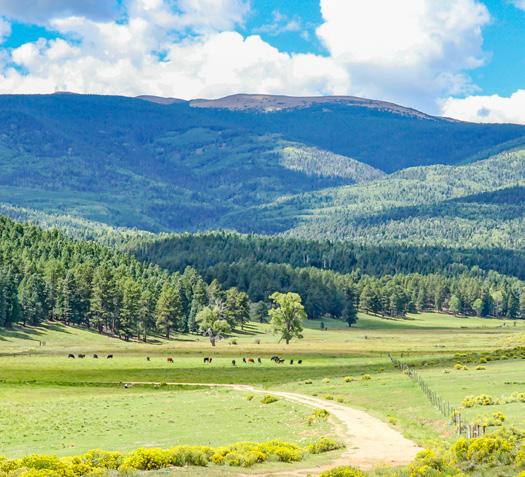
◊ A USFS permit must be personally “validated” by a USFS employee verifying that the appropriate number of livestock have been turned out on the permit allotment.
◊ Do I need to make improvements such as water systems, wells, fencing, pens, riparian area protection, etc., and will the government allow that? Who will own those improvements?
◊ Consult an attorney familiar with federal land grazing permits, and have him or her review these permits, as well as the overall ranch opportunity. This is very important!
There are other permitted uses of USFS and BLM lands that may be available for a ranch operator to consider. Some of these may include oil, gas, and mineral exploration and development; alternative energy development, such as geothermal, solar, and wind; recreational development (think ski areas), and many
others. Most ranchers are not interested in those types of uses, but these special use permit operations may impact your grazing operation as well, so you need to know about them. There are times when you could be compensated by another permittee because of interruption to your grazing operations.
The bottom line is that a USFS or BLM grazing permit is just that —a permit for regulated grazing only—nothing else. The permittee does not own the land, and cannot utilize it for other uses unless the government agrees. That could involve applications for special use permits, or, at a minimum, an agreement with the government to allow other uses. You can’t “lock the gate” on your USFS or BLM land (of course, you can control access through your own deeded lands), so you will likely have hunters, fishermen, campers, and hikers using the land as well.
There are plenty of rules and regulations when utilizing federal lands in your grazing operations. Here in New Mexico, most large ranches have those permits as part of their operation. If you are willing to build a good working relationship with the agency employees managing those permits; do your homework; make sure you stay within the limits of the permit, and pay your fees on time, a mixed deeded and public lands ranch can be a very good way to operate a large ranching operation in an economical and profitable manner.
One final thought: As a group, ranchers are an independent type, and many times are suspicious of the government and its employees, but during an informal discussion I recently had, a government land manager told me he works hard with his permittees to coordinate different uses, and wants to see all of them be successful in their operations. I have been told the same from the ranching side on numerous occasions. Don’t be afraid to consider a mixed deeded and federal grazing permit ranch...it could be an excellent business decision for your operation. Just ask questions, and do your due diligence!
800-238-8616 | WWW.FAYRANCHES.COM | 39
WILDFIRES AFFECTING PROPERTY VALUE
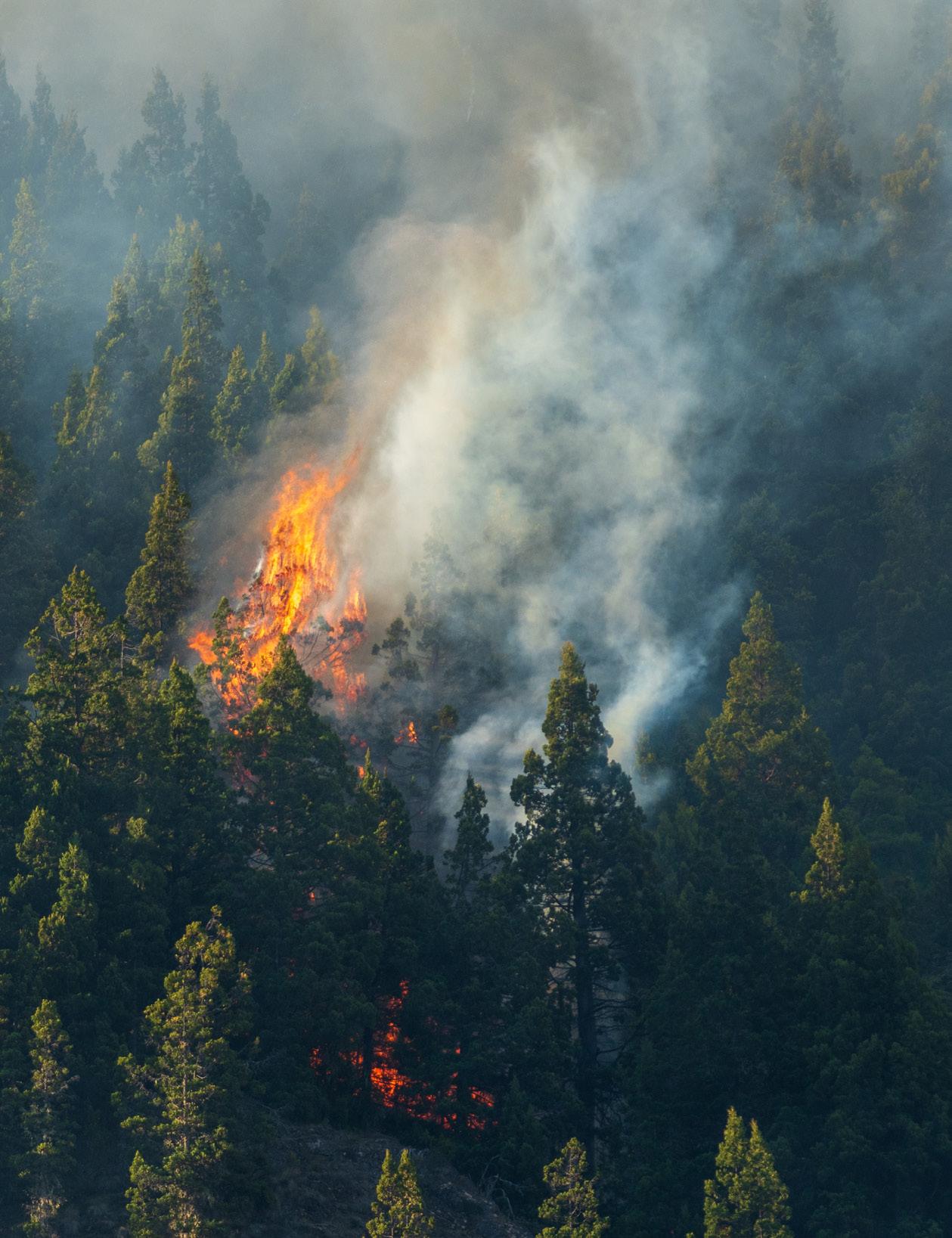 BY JIM VIDAMOUR, ALC, PRINCIPAL BROKER | FAY RANCHES
BY JIM VIDAMOUR, ALC, PRINCIPAL BROKER | FAY RANCHES
As I was writing this, the two largest wildfires in the history of New Mexico were burning. The Hermits Peak/Calf Canyon Fire, just northeast of Santa Fe, and the Black Fire in the Gila National Forest were burning at a historic pace. According to the National Wildfire Coordinating Group, the Calf Canyon Fire/Hermit’s Peak Fire consumed 342,000 acres. A pile burn holdover caused the Calf Canyon Fire from January that remained dormant under the surface through three winter snow events before reemerging in April. A holdover fire, also called a sleeper fire, is a fire that remains dormant for a considerable time. The Black Fire is now the second-largest fire in New Mexico history, with 325,000 acres burned.
Roughly forty-five hundred of those charred acres belong to one of my clients, who was preparing to put his recreational ranch on the market for sixteen million dollars. The fire burned through his entire ranch within five hours, except for the property’s six thousand-square foot log home. The house and improvements represented approximately one-third of the ranch value. It is safe to say the land has lost much value.
Even with his previous fire mitigation efforts, this property owner will suffer a significant loss. We’re waiting for the soil burn severity map, completed after every wildfire by Burned Area Emergency Response (BAER) teams, which will show how badly the fire burned the soil in various areas. Modern fires can be so hot that they will burn all organic matter in the soil; this means it takes a long time to recover and restore the organic matter in the soil. The map will help the owner determine what time frame to expect for future growth in specific areas of the ranch.
In previous times, forests maintained a healthy cycle when tempered land and forest management included low-intensity ground-level fires, timbering, and grazing. In recent years the philosophy has turned to a more hands-off management approach. That, coupled with a decades-long drought and insect infestations, means there is less moisture to mitigate the severity and size of wildfires. The Hermit’s Peak Calf Canyon Fire not only destroyed over three hundred thousand acres of land but also destroyed a local Hispanic culture. Properties home to families for generations were greatly affected, destroying the associated culture. It leads one to ask, why don’t we spend the billions of dollars used for fighting these fires before the fire to clean up our forests? There is big business in fighting fires; I believe there should be a big business in preventing fires through logging, grazing, and cleanup programs.
While an uncontrolled blaze can mean devastation to a landowner, it can also provide unexpected benefits and opportunities for those looking to buy property.


What happens when dense forest on a property burns? For example, my client’s ranch had steep varied terrain. If you “ironed out” a three-dimensional topographical map to two dimensions, you would see three times the surface area. Large trees covering that area consume a lot of water, which could supplement springs and surface water. Anecdotally, it would seem to make sense that they aren’t drinking all that water if those trees are no longer there. Therefore, we will see more surface water on the property, the development of springs and creeks, and ponds filling up. There should be more visible and accessible water after a fire because less vegetation competes for the water.

There is also the opportunity for new types of growth. Where spruce and pine burned on this client’s hunting ranch, aspens and oak brush will likely fill in first. He will be able to plant areas he couldn’t plant before with different varieties of vegetation. Wildlife needs three things, water, cover, and food. It can be argued that a ranch’s water and food may be dramatically improved after a fire. The challenge is to provide more cover, so the game stays on or near the ranch. Surprisingly, my client spotted 35 mule deer on his property the day after the fire went through the ranch.
Rehabilitation of the ranch depends on what the soil burn severity map reveals. There will be places where the fire burns so hot that the organic matter is completely gone. This loss can likely be mitigated by mulching burned trees onto the existing soil. Mulching can be expensive and labor-intensive, but it’s a suitable remediation method. A less expensive option to accelerate introducing organic material back into the soil is to drop as many burned trees as possible. This action will also help prevent erosion
800-238-8616 | WWW.FAYRANCHES.COM | 41
by impeding water flow after significant rains. Some erroneously believe burned trees will blow over in big windstorms. The opposite is true because trees with no leaves or needles have less drag in a windstorm.


Cost-sharing and grants from various organizations may be available to offset these expenses. It is possible to take advantage of the expanded views—the ranch will look different, but the views will open up. The loss of beauty is one of the most important things to try to minimize. Living in a burned forest is not anyone’s idea of beauty. Another annoyance is dealing with ash for a year or two, which can be mitigated by mulching the burned trees, adding organic matter, and improving the land’s beauty. Regarding priorities, the best rehabilitation strategy is to start remediation near the house and the view lines, then work along ranch roads, where drivers will see the property.
In addition to unexpected benefits, a property owner might realize that wildfires create opportunities for prospective ranch buyers. While an affected property will never look the same in our lifetime. Someone with a longer time horizon, say, someone in their late thirties, could get a fairly steep discount and turn it into a legacy property for their family. In ten to twenty years, it will be a completely new ranch. How much of a discount? An unofficial poll among brokers appraised the decrease in value of a ranch, after a fire, at forty to fifty percent; prospective buyers can expect a discount somewhere in that range. Buyers with shorter time horizons probably won’t be shopping fire zones unless they can do a lot of work on the property in short order. Most affected properties are forested recreational or luxury ranches in the mountains, so if you are a bargain hunter, that is the type of ranch to look for.
It’s important to remember that timberland insurance is costly. While buyers can expect a bargain, wildfires have made getting coverage for rural structures more challenging. Incorporating fire-retardant materials is helpful if you’re building a house; remodeling and retrofitting using approved materials is another option. In any case, consider mitigation measures for areas adjacent to the house. The log home that survived the fire on the aforementioned property had a metal roof. Choose the home’s location carefully and have a water supply system with storage that you could deploy to protect the house.
And remember, though it may seem Armageddon-like, it’s not an end-of-the-world scenario; it’s possible to avoid complete destruction, and, if you do have a wildfire go through your ranch or buy a ranch previously affected, it’s unlikely to burn there again (at least not for decades), so if you find a bargain, and have an extended time horizon, you won’t be looking to advertise a “fire sale” anytime in the near future.

GOVERNMENT-LED RESPONSE
Following wildfires in the United States, the U.S. Department of Agriculture and the U.S. Department of the Interior mobilize Burned Area Emergency Response (BAER) teams to assess immediate post-fire watershed conditions. BAER teams must determine threats from flooding, soil erosion, and instability. Developing a post-fire soil burn severity map is an essential first step in the rapid assessment process. It enables BAER teams to prioritize field reviews and locate burned areas that may pose a risk to critical values within or downstream of the burned area.
ABOUT THE AUTHOR:
Jim Vidamour, ALC, is a Principal Broker licensed in the states of Colorado and New Mexico, and has had to evacuate his nineacre ranch twice. He specializes in recreational ranch and hunting properties, and would love to take you ranch shopping—it’s fun!

42 | WWW.REPUBLICRANCHES.COM | 888-726-2481
Considering an exchange? Think beyond the farm.
you're selling farmland or ranch land, it's important to keep your options open. At First American Exchange, our team of experts can guide you through the 1031 tax-deferred exchange process, helping you reinvest your proceeds into an investment property of any type. Contact us prior to the close of your sale and we'll help you exchange for your property of choice.
with First

800-238-8616 | WWW.FAYRANCHES.COM | 43 When
We've facilitated tens of thousands of exchanges. Working
American Exchange, you get exceptional security and financial strength with small-town service and care. We are here to serve you. Bob Goodson bgoodson@firstam.com 801.944.1031 First American Exchange Company, LLC, a Qualified Intermediary, is not a financial or real estate broker, agent or salesperson, and is precluded from giving financial, real estate, tax or legal advice. Consult with your financial, real estate, tax or legal advisor about your specific circumstances. First American Exchange Company, LLC makes no express or implied warranty respecting the information presented and assumes no responsibility for errors or omissions. First American, the eagle logo, First American Exchange Company, LLC, and firstam.com are registered trademarks or trademarks of First American Financial Corporation and/or its affiliates.
RANCH STAFF: AN ABSENTEE LANDOWNER’S MOST VALUABLE ASSET
 BY ROB GRAINGER, SALES ASSOCIATE | REPUBLIC RANCHES
BY ROB GRAINGER, SALES ASSOCIATE | REPUBLIC RANCHES
hether it be a small recreational getaway, a vast hunting ranch, or a large commercial operation, most landowners take pride in the land they own. And to be frank, you should take pride in land ownership. You’ve worked hard to acquire it, and now you have it. At this point, the question for most people is, “How do I take care of it?” Over the years, I have been involved in the ownership, brokerage, management, and staffing of ranches across the Central and Southern United States. I have witnessed and experienced the headaches that land ownership may present when you are absent daily. Regardless of the type of farm or ranch land you own, there is a very common theme I see across all varieties—the crippling effects of leaving your land unattended. In most circumstances, the land and its improvements need to be maintained, and sometimes we just can’t get to it.
Let me paint a picture for you. I’m a terrible artist, so I will use words. You have bought or inherited a piece of property that’s not in your backyard, and now you are faced with the task of the upkeep. This should not keep you from enjoying your new slice of heaven, or the one you grew up running around. But we need to place emphasis on the maintenance, goals and objectives of the property. The yard won’t mow itself, the roads won’t stop growing up, the feeders won’t fill themselves… you get the picture. But rest assured, the person that will gladly make this their job, full or part-time, is out there. We as landowners owe it to the land to keep it up.
I am fortunate to have founded Grainger Ranch Recruiting, a farm and ranch recruiting service, and am blessed with the opportunity to provide solutions for landowners across the country, for all varieties of properties. If you look around, there are thousands of qualified, loyal and hard-working folks who have made a career, or more so a life, tending to land and the assets that
sit atop and underneath it. Some of them grew up in ranching and farming communities, while others attended colleges in agricultural and wildlife-related fields. We’re even focusing heavily on hospitality management when looking for staff on ranches with high-end lodges, where guest relations are of utmost importance. It’s amazing the minds that are managing properties in this great country.
As this is not a traditional staffing scenario, you may believe that it is hard to find a person with the qualities and qualifications to meet your needs and goals. It certainly can be difficult at times, but there are avenues by which you can find them. First and foremost, speak to the local community. Your neighbors—folks at the feed stores and diners—will be a huge resource. They will traditionally be in tune with who may be looking for a job locally. If the search needs to extend outside of town, you can post jobs on appropriate forums, and begin the weed-out process. I am always an email or a phone call away, and I or my team will perform the search.
I traditionally categorize positions on ranches in the following ways: Ranch Manager, Assistant Manager, Foreman, Ranch Hand, and Caretaker. One could get carried away with the different categories of farm and ranch staff, but it is important to identify your needs and put someone on the property who is helping you keep it up. Depending on the skill level you need, you may be looking at a part-time employee, or an on-site, full-time manager. That is up to you. Regardless of whom you look for, if you don’t have the time or the desire to fulfill the duties of property upkeep, let a qualified individual be your boots on the ground. I promise you will have a weight lifted off your shoulders. Do a service to yourself and the property; place someone on your ranch to take away the worry and burden. Give the land the proper care it needs to stay great. Protect and improve the asset you own.


800-238-8616 | WWW.FAYRANCHES.COM | 45 W
THE ECONOMIC AND SOCIAL IMPACTS FACING RURAL AMERICA
 BY SUSAN FERRIN & APRIL CHURCHILL FAY RANCHES COMMUNITY FOUNDATION
BY SUSAN FERRIN & APRIL CHURCHILL FAY RANCHES COMMUNITY FOUNDATION
hen wandering around Montana, you will inevitably wind-up in a rural community at just about every turn. With just over a million people state-wide, roughly half of those individuals and families live in small towns that are less than 2,500 people. These towns have survived the test of time (including a pandemic) and are still standing. However, the trend of diminishing populations has begun. Due to a lack of resources and opportunities, the younger generations are leaving to further their education and experiences and not returning. People are leaving for cities and towns that offer the resources they need to raise their families. Business owners are packing up and leaving in search of a larger customer base. The ripple effect of this loss is causing small towns in Montana and across America to dwindle in size. The staff and agents at Fay Ranches started the Fay Ranches Community Foundation with the hopes of drawing attention to the plight of these communities; these small towns across the country that need it most.
A CLOSER LOOK INTO “RURAL”
According to the U.S. Census Bureau, 97% of America can be considered rural. Seventy-six percent of incorporated towns have a population of fewer than 5,000 residents. These statistics give us perspective on the impact rural communities have on the rest of the country. These communities generate 85% of the food consumed by the nation but until recently, have received substantially less federal funding than their urban counterparts. Rural communities have historically faced many more hurdles and significantly fewer resources when compared to urban populations.
HUNGER AND POVERTY
In 2019, Feeding America completed a study showing that 2.1 million households in rural towns face hunger. These 2.1 million households make up 91% of the counties in the U.S. with the highest rates of overall food insecurity. Average poverty rates in rural areas across all races and ethnicities are 15.4% while urban areas are at a rate of 11.9%. Poverty is its own beast in rural areas because the community lacks the necessary fundamental resources to provide food, shelter, or other basic life necessities for those in dire need. With limited resources, we are seeing increasing rates of generational poverty in these communities. The cycle is not being broken.
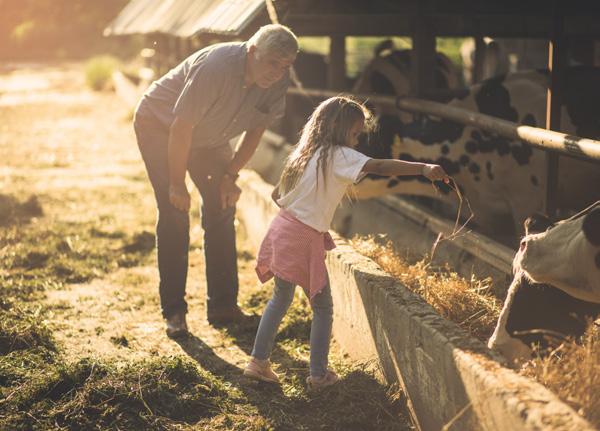
STRUGGLING BUSINESSES
While rural America produces most of the nation’s food, only 17% of businesses operate in small towns. As populations have
migrated to more urban areas, it has become harder for small business owners to find qualified employees within their communities. Conversely, if there aren’t customers to serve, local businesses are forced to close their doors. Historically, it has been shown that if given the opportunity to thrive, rural businesses will become profitable over time even if they grow at a slower rate than their urban counterparts.
LIMITED AND EXPENSIVE HOUSING
The recent surge in the housing market has had a significant impact on residents in rural areas. There has been a mass migration out of urban living due to the pandemic changing workplace parameters. This has caused a higher demand for housing than the local residents are accustomed to. All cash offers, sight unseen, and short closings have become the standard— pushing out buyers that didn’t have the resources to match an offer. Rural housing prices have risen to match urban areas (based on % change), but typically pricing falls more quickly without an adequate customer base to pull from, essentially leaving homeowners with an asset that is not valued at their original investment. For those that are looking to build their dream home, there are other hurdles. Land to build on is scarce, construction materials are more challenging to source, and labor shortages force builders to turn down construction projects.
INADEQUATE HEALTHCARE
Healthy and vital residents contribute to the overall health and economic prosperity of a community. Unfortunately, rural communities face multiple barriers when accessing quality and affordable healthcare. From 2010-2019, 116 hospitals closed in rural communities across the United States. The federal government saw this astonishing rate of decline and stepped in to provide financial assistance. They were able to slow the rapid rate of closure but were unable to stop hospitals from closing entirely. Today, over 20% of rural hospitals face risk factors that could force
800-238-8616 | WWW.FAYRANCHES.COM | 47 W
86% of the counties with the highest percentage of children at risk for hunger are rural counties.
them to downsize or close. When hospitals can no longer get the proper equipment and staffing to keep their doors open, they find themselves in a position where they can’t provide quality care for patients and are unable to serve those communities adequately. In rural communities, 1 in 4 residents under 65 years of age is on Medicaid. While absolutely necessary for those in need, Medicaid does not come close to covering the full cost of most medical care services and treatments.
STIGMATIZED BEHAVIORAL HEALTH
In the past decade, the stigma around behavioral health has become a more prevalent topic of conversation. Both non-profit organizations and for-profit businesses are working to reduce the stigma around behavioral health and provide resources for those who might be struggling. However, rural communities still face a lack of resources, awareness, and barriers to access. For many, services require traveling long distances and taking time off work. Their insurance may not cover the necessary services, and providers in rural areas are less likely to recognize mental illness signs because it is not their area of expertise. With a chronic shortage of healthcare providers for rural communities, behavioral health is often not a priority when individuals and families are in survival mode. Even if behavioral health services were accessible, affordable, and available, the stigma surrounding treatment in rural areas can be the deciding factor for someone considering asking for help. While urban communities diligently work to destigmatize mental illness, campaigns are much slower to reach rural areas of the country.
in montana, the youth suicide rate is more than double the national rate for ages 11-17.
LACK OF EDUCATIONAL RESOURCES

According to the National School Boards Association, 50% of school districts across the country are in rural communities. While these districts make up 30% of all schools, they only receive 17% of state educational funding. With a smaller budget, rural schools have a harder time retaining teachers when urban districts offer higher salaries and better benefits. When districts don’t have adequate staffing, fewer classes are offered, and extracurriculars are eliminated. A balanced educational experience and extracurriculars create a positive and fulfilling environment for kids in rural communities. Without these resources enriching their experience, the trajectory of their lives can be drastically altered.
NATIONAL SCHOOL BOARDS ASSOCIATION

Rural areas in the U.S. have approximately
◊ 20% of all students
◊ 30% of all schools
◊ 50% of all school districts
THE IMPACT OF CHANGING LIVES
The Fay Ranches Community Foundation was founded to combat the lack of resources and opportunities indicative of small towns across the country. The Fay Ranches Community Foundation supports these efforts because we envision a future where families choose to live in rural America, where they have access to quality education, healthcare, and growth prospects. We are dedicated to helping rural America by focusing on improving the quality of their healthcare, education, and youth resources. By focusing on these areas, we can increase the well-being of residents and the economic prosperity of towns. Providing sustainable resources to rural America has a significant impact on their communities as well as a domino effect on the rest of the country. We must ensure that residents have the tools and resources they need to build a better life for themselves and their families thereby creating a legacy for their communities and this nation. Providing resources and opportunities for these communities is our passion and mission. We invite everyone to join us in looking toward the future of rural America.
48 | WWW.REPUBLICRANCHES.COM | 888-726-2481
cdc : every year since 2006, deaths due to overdose in rural america are higher than in urban america.
SCAN THE QR CODE TO LEARN MORE ABOUT HOW YOU CAN HELP RURAL AMERICA
DEDICATED TO RURAL AMERICA




The Fay Ranches Community Foundation is something I’ve been thinking about since I founded Fay Ranches 30 years ago. We at Fay Ranches, are at a point in our growth and with the relationships we’ve built over the years to positively impact the rural communities we serve from coast to coast. We live, work, and play in these communities that are the backbone of America. Many of these towns are suffering, the kids are growing up and moving away, and the populace is aging without adequate health and educational resources. The clients and customers of Fay Ranches share our concerns and are looking for opportunities to help. The agents at Fay Ranches act as a conduit to these opportunities for the friends of Fay Ranches to assist the proud people of these resilient communities. Fay Ranches Community Foundation feels that rural communities are the fiber of our great country and must stay strong. When woven together, those fibers create a stronger America.
Greg Fay, Founder
Fay Ranches, Inc., its brokers, and staff care about the communities in which we do business. We live, work, and play in rural America and understand the unique challenges faced by these communities. We feel that we are in a unique position to have a positive impact and are looking to help. The Fay Ranches Community Foundation was founded to support America’s rural communities by sourcing opportunities that focus on health, education, and youth initiatives. We are focused on creating a generational impact and fostering a future in which rural America continues to be strong, where families choose to live and have access to quality education, health, and growth opportunities.

www.faycf.org | 800.238.8616

800-238-8616 | WWW.FAYRANCHES.COM | 49
-
501(c)(3) public charity, tax exempt under section 509(a)(2) EIN : 86-2355941 Charitable contributions are tax deductible. IRS approval pending.
| info@faycf.orgDONATE TODAY AT:
UPLAND GAME BIRD HUNTING
 BY GEORGE DUKE, RANCH SALES | FAY RANCHES
BY GEORGE DUKE, RANCH SALES | FAY RANCHES
Upland game bird hunting in South-Central Montana is no longer a secret. The Clarks Fork of the Yellowstone River valley all the way down into Wyoming, and the surrounding Pryor mountains foothills to the east, on the Crow Indian reservation, offer spectacular hunting opportunities for sharp-tailed grouse, Hungarian partridge, and ring-necked pheasant.
When I was growing up in northwest Wyoming around Cody, you could almost always get access to bird hunting on most ranches, just by stopping in and asking permission from the landowners. But those days have long since disappeared. Today, most gamerich ranches in northern Wyoming and south-central Montana are private hunting only. Landowners either hunt themselves and are keen to keep the hunting good for their family and friends, or they lease hunting rights out as another valuable source of income for the operation as a whole. However, the public hunting opportunity is still terrific in Montana through the Block
Management program, wherein landowners allow walk-in-only hunting to the general public in return for compensation for each hunter-day by the state Game & Fish Department.
I gradually developed my passion for wing shooting and upland bird hunting from my father, Pony Duke, who loved hunting pheasant, huns, and grouse. Like a lot of old elk hunting guides of his generation, as he became older, he cared less and less for all the time and work associated with big game trips and became more and more of a bird hunter. Having Labrador retrievers you love who live for the hunt, being able to experience a great hike in a beautiful country and bringing home excellent food for the table all in one fine day, then doing it all over again makes life worth living!
My dad and I would meet almost every Saturday morning in a café in Laurel, Montana to carbo-load for the long day ahead, walking the wheat stubble fields of central Montana scouting for
50 | WWW.REPUBLICRANCHES.COM | 888-726-2481
huns, then hiking through the brush along the Musselshell River later in the day in search of pheasants and ducks. Afterward, there would invariably be a few beers in the local watering holes where, before the journey home, we would meet other local farmers and ranchers, and make more connections for new places to hunt. But after a time, we realized it would make sense to own a place specifically for hunting, so we would not have to put on so many miles in search of adventure. I wanted to own a ranch of my own, and his place up in the mountains on the Stillwater River was a good ninety-minute drive from bird country. So, we decided to go in as partners and find a place I could call home—and where the hunting would be fantastic. We looked all over a wide swath of central Montana before I found the ranch I now live on and operate. Before my dad passed away eight years ago, we had fifteen great years of being able to walk out the door, whistle for the dogs, and strike out for a day’s walk that almost always yielded a limit of something, and plenty of tall tales to spin later that evening over a bottle of fine wine.
Today, the idea of buying a farm and ranch just for hunting opportunities is not uncommon. You can manage property for birds, deer, and elk, and still realize a good income from the farming and ranching operation, all the while building on and improving the overall value of the property, and your investment in it as a whole.
When I bought my ranch, I quickly found out that there were over twenty thousand acres of Block Management with excellent hunting, all within a twenty-minute drive. In addition, the Crow Tribe offers licenses for hunting upland birds when sold with an accompanying trespass license that allows an avid hunter access to hundreds of thousands of acres of tribal lands within the reservation’s borders. The rules are that, technically, a hunter needs the permission of one allottee among the hundreds of Native American tribal members of each parcel of land, and those owners vary by parcel. But the reality is that as long as it’s not deeded land within the reservation (of which there is some, but not much), and it’s not posted, and you can’t see a house or structure in any direction, then you can hunt on it; that describes most of the area. Licenses can be purchased at the gas station at the Little Bighorn Battlefield. An local guide is necessary for big game hunting, but not for birds.
Block Management areas all require daily sign-in at the box located at a property. There, you will find maps of the area that can be hunted. You can research all the different BMAs online or go to your local Fish Wildlife and Parks headquarters, where they have a table set up for the public to study maps, regulations, and rules. The general rule of thumb is that, if you are willing to walk a mile into most Block areas, you will find that the hunting gets great, as ninety percent of the local hunters don’t go that far.
In central Montana pheasants mostly populate the river bottoms and crop fields near a creek or stream. This is also where you will often jump ducks, geese, and snipe making for a terrific mixed bag. The higher foothills of dryland wheat stubble and fallowed fields, and vast swathes of sagebrush favor native sharp-tailed and sage grouse, as well as Hungarian partridge. Past the foothills where the timberline starts gives way to ruffed and blue grouse. Wild turkeys, once rare in Montana, are found practically everywhere with the state holding more Merriam’s turkeys than any other but Texas now.
As fun as waterfowl and pheasant hunting are, I would have to say that I look forward to no other day more than September 1st, the opening day of the grouse season. That means heading up into the mountain foothills and hiking the big coulees and doing the big laps around the seemingly endless acres of cut wheat stubble fields. That is where the bird’s food is but also where they are most vulnerable to their primary predator, hawks, and falcons. So, the edge habitat of long grass and brush along the edge of the fields is where you will find them, as well as at the waterholes, seeps, and springs. After you have hunted an area several times and come to know where the water features and juniper bushes are where birds rest and hydrate you will have the route of your hike already planned to include these places. My friends and I like to do what we call “big laps” of several miles, each going one way or the other until we meet, and then hunting the center back to the truck where cold water (and beer!) is waiting. It is necessary to carry a lot of water with you for the dogs, stopping to water them frequently on these early season laps, especially until you learn where the waterholes are for breaks.
Hunting for birds in south-central Montana in all four directions from Billings is superb. Buying a ranch with great bird hunting is a fantastic and fun experience for the passionate sporting family, and the abundant public hunting nearby enriches the value and experience exponentially.
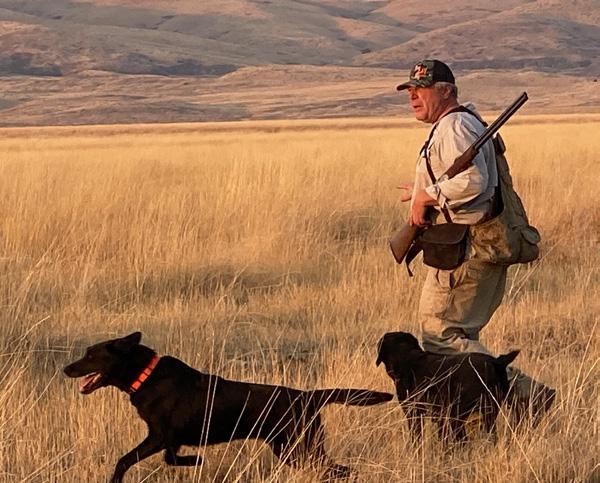
800-238-8616 | WWW.FAYRANCHES.COM | 51
COLORADO RIVER: LIFEBLOOD OF THE WEST
 BY REN MARTYN, ALC, BROKER | FAY RANCHES
BY REN MARTYN, ALC, BROKER | FAY RANCHES
You’ve heard this proverbial quote before, and today you hear it louder and more often in the Colorado River Basin. Western water law, western states water compacts, water policy, and decisions about how this limited public resource is allocated will continue to be extremely complex, and will remain a highly charged issue into the near future. Western water “grabbing” wars began in the mid-1800s during the gold rush. Periods of truce can last for decades, but during times of drought and western states’ population growth, the combatants take up arms, and the battle ensues.
The Colorado River Basin includes the Upper Basin States of Colorado, New Mexico, Utah, and Wyoming, and the Lower Basin States of Arizona, California, and Nevada. It also includes thirty tribal nations, and Mexico. Western states’ significant population growth, climate impacts, and the twenty-year megadrought— said to be the worst in 1200 years—have super-charged the water crisis, causing the basin river flows to decline faster than water managers anticipated. Under the terms of the governing interstate agreement for the Colorado River Basin, known as the 1922 Colorado River Compact, the Upper Basin states must deliver 7.5 million acre-feet of water annually on a 10-year running average to the Lower Basin states. Any excess water received, or left unused in the Upper Basin flows to the Lower Basin, because much of it cannot be stored in the Upper Basin mountain states.


In the past, the limited Upper Basin water storage has given Lower Basin States access to surplus water, which they have become reliant on, a fact that Upper Basin water managers insist has to change if the river is going to be brought into balance in the current, drier world. Lake Powell, located at the Utah-Arizona border, is the largest reservoir on the system, and was designed to ensure the Upper Basin States meet their legal obligation under the 1922 Compact to the Lower Basin States. Due to recording Lake Powell’s lowest level since it was built in 1963, and concerns about Powell’s hydropower production, in 2021 the US Bureau of Reclamation, which oversees water resources and administered under the Department of Interior, issued an emergency release of one million acre-feet (one acre-foot equals 326,000 gallons) of Upper Basin water in Flaming Gorge, Utah and in Blue Mesa Reservoir, Colorado. Considered a short-term band-aid by most water managers, the objective was to protect Lake Powell’s ability to produce hydropower that supplies much of the west, and more than fifty cities and electric companies in Colorado alone.
In 2007, the seven Basin States agreed to a plan to begin jointly managing the river system, hoping the drought would lessen before the agreement known as the Colorado River 2007 Interim
Guidelines expires in 2026. Currently, all seven states are jockeying for position, preparing to renegotiate this 2007 agreement.
As the Colorado River supply shrinks and thirst for the Colorado River water increases, the big question is: Can the Basin States find an equitable solution to sharing the river’s waters? Getting to an agreement to resolve the river’s shrinking supply is unlikely to be easy. In the event an agreement is not reached, the other option is a “compact call.” Based on a system of “first in time, first in right” water right “calls” have become the norm on smaller tributaries and irrigation ditches in the west but there has never been a “compact call” under the 1922 Colorado River Compact, and a majority of the states’ water policymakers and engineers, often known as “water buffaloes” for their ruthlessness, want to avert a basin-wide and unprecedented “compact call” war. Per the 1922 Colorado River Compact, the Upper Basin States would bear the responsibility for dividing water use reductions. Colorado, being the headwater state with its expanding population, and holding the largest river flows, would feel the greatest impact from any 1922 Compact call and court ordered imposed water curtailments.
800-238-8616 | WWW.FAYRANCHES.COM | 53
“WHISKEY IS FOR DRINKING. WATER IS FOR FIGHTING.”
Map courtesy of United States Geological Survey, 2016
Like many western states’ increasing population, Colorado’s population grew at nearly twice the rate of the rest of the nation, putting it among the fastest growing states, as reported by the US Census Bureau. Between 2010 to 2020, Colorado saw nearly 15% growth rate as compared to the 7.4% national average but Colorado’s growth was unevenly distributed across the state with Colorado’s east slope -front range urban centers drawing the majority of population increases. Like the Lower Basin States, the Colorado front range high growth urban areas of Fort Collins, Denver, Colorado Springs, and Pueblo receive the majority of their water from Colorado’s west slope Rocky Mountain water. In order to transport water from west of the Continental Divide to east of the divide, there are 24 major trans basin diversions carrying western slope snow back, mountain water to the high population front range east slope urban areas. In Colorado, approximately 80% of the state’s growing population lives along the east slope front range area, while 80% of the state’s precipitation falls on the west slope mountain area. Colorado’s largest trans basin diversion projects completed in 1944 is the Colorado-Big Thompson Project that includes the 13.1-mile, concrete-lined, Adams Tunnel engineered and located under, what is today, Rocky Mountain National Park. The Colorado-Big Thompson Project spans a total of 250 miles from the West Slope headwaters of the Colorado River collection area near Winter Park and finally exiting 2,900 vertical feet down the slope to the Front Range east slope area. Majority of the Colorado-Big Thompson water was originally utilized for farming but as front range populations grew, the water has been converted to municipal and industrial uses.
Western states have experienced unprecedented growth over the past two decades, and like Colorado, much of the historical agricultural water is being converted for municipal and


industrial uses. As the 1922 Colorado River Compact eclipses its 100th anniversary, Upper and Lower Basin water managers and the US Bureau of Reclamation are analyzing formal water delivery shortage scenarios. Water demand studies often focus on agricultural water rights and as already occurring in high water demand areas of Colorado, the practice of buying agricultural water rights and drying up or fallowing of the historical agricultural irrigated lands is becoming a common practice known as “buy and dry” and consistent option in majority of water demand studies. In addition, most studies include the shutting down of post-1922 and junior water rights until the Colorado River water supply reaches a level to supply the 1922 Compact water requirements. According to the Upper Colorado River Commission, the upper Basin is going above and beyond to reach its river compact requirements, but recent drought years and population trends have forced Upper Basin water managers to analyze hypothetical legal losses in the event of a Compact Call. The process and outcomes of a Compact Call are unknown considering it has never occurred and discussed more often in recent years, a Compact Call strikes fear into Upper Basin water managers. As western states’ populations continue to grow, drought conditions persist and the thirst for Colorado River water expands, ranch owners and those of us involved in Colorado River Basin ranch brokerage may be found stocking up on whiskey and ready for a fight but we remain hopeful that a full scale water battle will not ensue.
ABOUT THE AUTHOR:
Ren Martyn, Fay Ranches broker serving Colorado and Wyoming, is a water rights owner, and has 25 years of ranch, conservation, and water rights experience.
54 | WWW.REPUBLICRANCHES.COM | 888-726-2481
Patterns of drought at Blue Mesa Reservoir, Colorado
Colorado River Aqueduct crossing the Mojave Desert, California




800-238-8616 | WWW.FAYRANCHES.COM | 55 Ranch financing throughout Texas and the Southwest is our specialty. That means you enjoy the highest level of coordination, communication and execution throughout your financing process with our Private Banking Team. Blake Halbardier 210.881.9980 NMLS #539133 Roger Parker 210.209.8474 NMLS #794874 Joe Patterson 830.627.9335 NMLS #612376 Call our team and let us help you bring your deal to life. Doing What We Promise Not Just Your Bank, Your Partner.
WOMEN OF FAY: DAUGHTERS IN AG
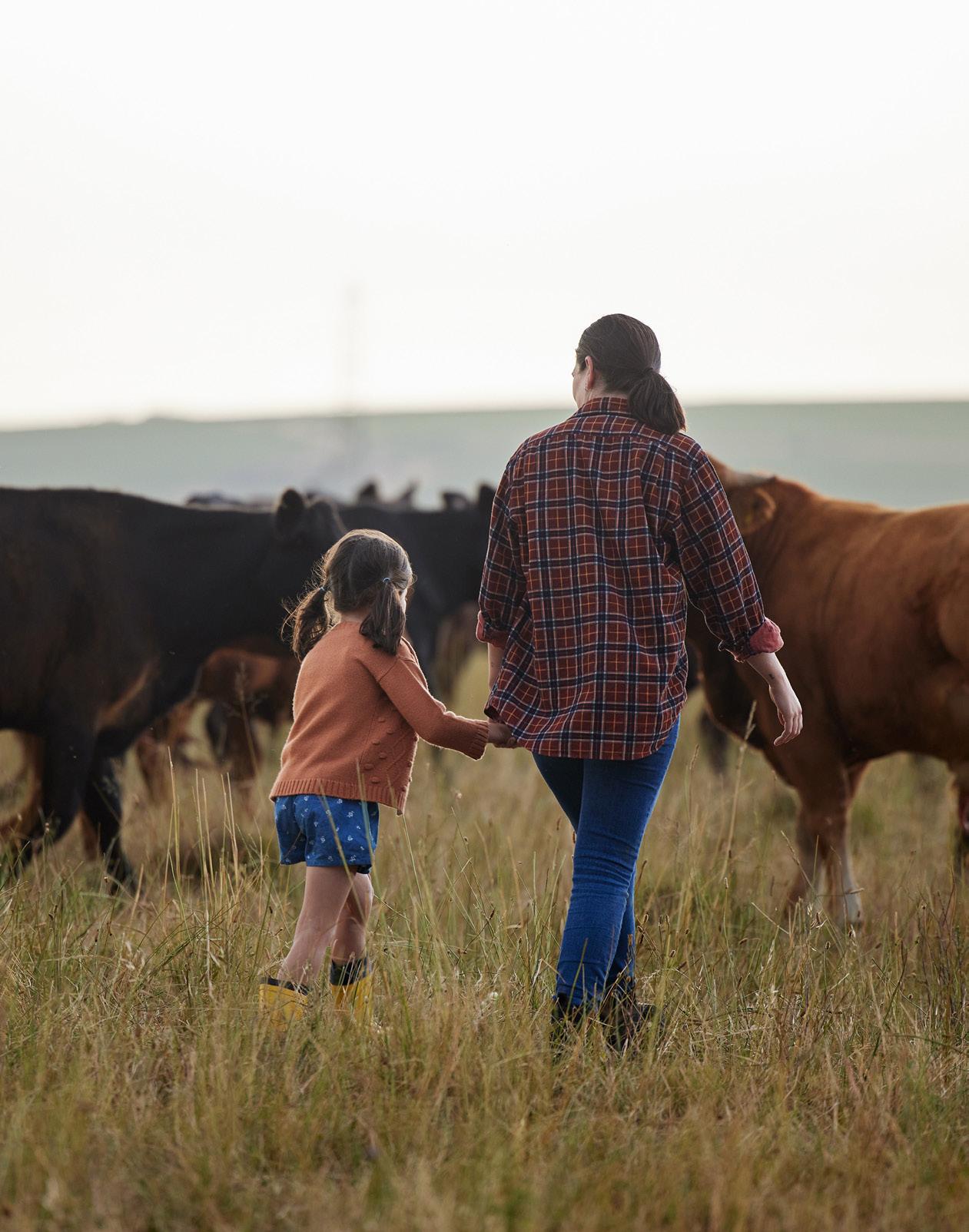 BY JESICA HICKS, BROKER, JOETTE SCHALLA, RANCH BROKER & IZZY LOWRY | FAY RANCHES
BY JESICA HICKS, BROKER, JOETTE SCHALLA, RANCH BROKER & IZZY LOWRY | FAY RANCHES
At Fay Ranches, we are proud of our agents, the culture, and the family that we have cultivated over the years. A big part of the team is the Women of Fay Ranches. These gals have worked hard to pave their way through the industry and come out on top. They continue to raise their families while working hard to help people find their dream property. We asked agent Jesica Hicks, agent Joette Schalla, and the daughter of agent Kimberly Lowry, Izzy Lowry, about their perspective on being a woman in the agricultural industry.
being responsible for our animals and learned about buying and selling the animals we raised and cared for. We learned money management and fundamental business strategies at a very young age. All of these experiences have proven to be priceless throughout my life.
WHAT DO YOU WANT OTHERS TO KNOW ABOUT LIFE IN RURAL COMMUNITIES?

WHAT ARE THE BENEFITS OF GROWING UP ON A RANCH? WHAT LESSONS DID YOU LEARN DURING THAT TIME?
Hicks : Growing up in a rural setting quite a ways out of town, with no nearby neighbors, we depended almost exclusively on ourselves for food, transportation, and entertainment. We actually lived off the grid when I was a kid, which is not as crazy as it sounds. We had a generator and propane, so we could fuel a stove, and we had a fireplace. At the time, I hated living in a small town, because we didn’t have a lot to do, so we relied on doing those chores, being outside, and using our imaginations. Now, as an adult, I’m very thankful for that.
Lowry : My favorite part about life on a ranch is being able to grow up and raise my show animals that I have enjoyed traveling around the nation with. With this, I have learned how important it is to set goals and then chase them by working day in and day out and learning new things from more experienced people that I can then use to work toward success. I have been blessed with the opportunity to build relationships with mentors around the country who have believed in me and made an investment to help me learn to improve my skills and reach my goals.
Schalla : My childhood was different from many of the kids I attended school with. I had responsibilities in feeding animals, checking/filling water, exercising horses, and tending to gardens and our living windbreaks. My brothers and I would find time to enjoy the great outdoors and play with the animals that we had to help care for. We tried to teach many of our animals to ride or drive. It was always an adventure, and very few of our schoolmates grew up in this special way. We had friends whom we would ride horses with, swim in the ponds, and spend time roping anything that would give us an opportunity. We learned many valuable life lessons through 4-H and Pony Club. We understood
Hicks : Self-sufficiency in rural communities can save you money and protect you from the proverbial ‘rainy day. It can also help protect the environment. With the need to reduce greenhouse gas emissions and conserve resources, it’s important that we be resilient, and are able to sustain ourselves within our communities. Mutual self-sufficiency increases trust between people. Many of us are ‘money rich,’ but ‘time poor,’ so we pay for others to do what we might otherwise do ourselves.
Lowry : Agriculture is the base of our industry as most of our food, clothes and other products come from the production of ag. Educating the public, or letting friends, schools, and interested individuals visit farms and ranches to better understand ag, may spike interest and could help with the appreciation of what farmers and ranchers do every day.
Schalla : Rural communities are fairly tight-knit in comparison to urban areas. Life in rural areas typically creates opportunities to help your neighbors. A well-known phrase is, “Good fences make good neighbors.”. This statement is accurate, especially in rural areas where these fences don’t just identify your property boundaries. People carpool to school, church, and social events to save time and fuel. Neighbors from miles away “trade help” during branding season and again when ranchers wean or ship their cattle. We share eggs and garden produce and even help each other find buyers for the animals we butcher and retail. The power of a small rural community is amazing, especially if one of its members is in distress or celebrating a milestone birthday or anniversary. Everyone comes together to help lessen the stress or heartache or cherish and celebrate the people who are part of our community.
I currently live in town and don’t even know some of my neighbors’ names, but I know every neighbor around our family’s ranch for at least 20 miles. I own a ranch in the rural area I grew up in, so I still attend all the functions I can within the White Rock community. The members of our rural community know that 2% of America’s population produces the food that feeds our entire population, so we all take pride in knowing that we are all doing our part to contribute. Being part of a rural community is very special.
800-238-8616 | WWW.FAYRANCHES.COM | 57
WHAT WERE YOUR FAVORITE TRADITIONS GROWING UP ON A RANCH?
Hicks : It’s not so much a tradition, but, as kids, we were outside a lot, and used our imaginations to entertain ourselves. We also had a go-kart and rode horses. There was a creek that ran through the property, and my dad created a pond, so we spent time swimming in the pond and trying to catch water skippers. My dad also built me and my brothers a tree fort; we would bring in wood, help dad with whatever projects he was working on, and my older brother had to fix fences. At the time, I hated living in a small town because we didn’t have a lot to do, so we relied on doing those chores, being outside, and using our imaginations. As an adult, I’m very thankful for that.
Lowry : As kids, we would make daily chores fun. While raising cattle, sheep, and hogs, each year we would have baby animals that needed extra attention. Almost every year we had a lamb or a piglet that would need to come into the house on a cold day, and that was fun for us as kids to help a baby animal survive and to spend time with it in front of the fire at the same time or to have to go to the barn to bottle feed a calf.
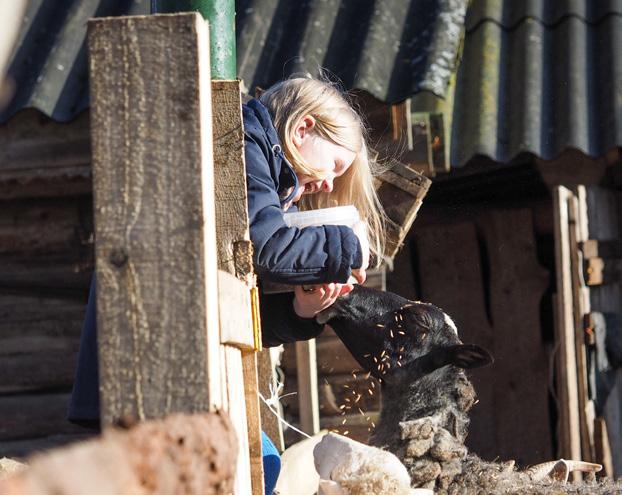
Before we were old enough to get our driver’s licenses, our parents would send us out to the field to drive through the cows when they were calving, and we would come back to give them a report of what we found. It was really cool because it gave us a sense of responsibility to do that by ourselves and it gave them a muchneeded break after a long night during calving season. We have so many happy memories together as kids spending time in the barn. Even today I find the barn is my happy place and I spend most of my free time there working with my animals.
Schalla : Spring branding is my favorite tradition. At our brandings, we help mom cook delicious meals for all the help, neighbors come from near and far to lend a hand, and we get
to show off our sorting and roping skills. As branding season progresses, we are blessed to see beautiful ranches, impressive cattle herds, and varying styles of branding and roping, creating a season I look forward to every year. Some ranches drag their calves to flankers, some to Nordforks, and some even head and heel their calves. There are families that process their calves across calf tables, but no one in our local community does. Every fall, our White Rock community has a Rocky Mountain Oyster fry to celebrate another year of hard work and achievement. We cook up the calf oysters harvested from several of the nearby ranches, and everyone brings their favorite potluck dish to accompany the main course. It is an annual event our entire community looks forward to.
WHAT IS THE SIGNIFICANCE OF THOSE TRADITIONS? WHY DO YOU FEEL THEY’RE IMPORTANT?
Hicks : With gas prices and grocery bills impacting budgets in a big way, the benefits of having egg-laying hens and a productive vegetable garden are obvious. Less obvious, but no less valuable, are lessons that can be learned by tending those chickens, sowing those seeds, and dealing with Nature’s cycles. For families with children, the intergenerational knowledge passed down through the seasons is priceless, as is working with neighbors—trading eggs and vegetables for meat and goat milk or helping mend a fence reinforces healthy interdependence rather than a dependency on centralized goods and services. If you’ve ever grown vegetables or made your own clothes, you know that self-sufficiency can be very rewarding; the sense of achievement can bolster self-esteem and self-confidence—important gifts to pass on to your children!
Lowry : Many of my peers lack the desire and drive to set and reach goals, and the motivation to try new things, but I see that those who want something with all their might will work for it and go get it. I personally see that people who work in agriculture or with livestock push themselves to grow and produce better quality crops and livestock. Putting in the work is not easy, so I commend those who are involved in agriculture and push themselves to do better and work harder because it takes a special person to be able to do this every day while facing many obstacles that are out of their control.
Schalla : I feel these traditions help maintain the bond of the community and significantly help to immerse the younger generations in our heritage and culture. Fewer and fewer young people want to continue forward with the lifestyle and careers of their parents and grandparents. My brothers and I have each continued with our own operations in agriculture. We hope the next generation has the same rewarding experiences we have so that they will continue helping produce food for our Nation and being stewards of the land.
58 | WWW.REPUBLICRANCHES.COM | 888-726-2481
WHAT ADVICE WOULD YOU GIVE A WOMAN WHO IS JUST STARTING OUT IN THE AGRICULTURE INDUSTRY?
Hicks : Be humble but have pride in your successes. Always be learning something new. When you get bucked off, get right back on!
Lowry : If I could offer any advice to women starting out in the agriculture industry, I would encourage them to never give up on their dream. Raising livestock and working in agriculture is an adventure and every day can present new challenges. As I was raised around cattle, hogs, and lambs, there is a lot I have learned growing up on a ranch from a very young age. It is important to set goals which is something that I have always done and then work every day doing the things necessary to reach them. I set goals to do well in cattle showmanship which is when the person showing a steer or heifer is judged on their ability to show their cattle. In 2020 I won Grand Champion showmanship at National Western Stock Show in Denver. Since then I have also won showmanship at several other national shows including Aksarben, NILE, and Arizona Nationals, and was Reserve Champion showman at National Western again in 2022. To be successful requires discipline and daily practice. I would tell a woman starting out in agriculture to work every day toward her goal, and she will be successful.

Schalla : My advice is to start with the basics, but don’t be afraid to dream big. There are so many opportunities to take education classes, learn through internships, or even take a base-level job at an agricultural operation, learning skills as your work your way into new areas over time. I grew up learning from firsthand experience, but over time I have learned even more about livestock and land management from ranches I have worked on, friends in agriculture, and even field days offered by the Natural Resource Conservation Service. The USDA has multiple divisions focused on improving the knowledge of farmers and ranchers. The USDA considers women disadvantaged farmers/ranchers, so when women apply for programs or loans through the USDA, they receive preference points or priority in funding. These benefits can help women achieve their goals and even allow them to surpass their expectations.
WHAT WOMEN PIONEERS IN AGRICULTURE DO YOU ADMIRE?
Hicks : My fellow Women of Fay Ranches. I’ve always admired Kebi Smith and Kimberly Lowry. I remember starting at Fay as my dad’s assistant and thinking, wow, these gals know their stuff! And Dixie Barry… I love her spirit, enthusiasm, and energy. All the gals of Fay are great. It’s not about competition, it’s about
helping and lifting each other up, and sharing our advice and successes because we want to continue paving the way for women in this industry.
Lowry : When I was little I worked with a cattle breeder named Kate Roberts whom I really admired and looked up to. Kate was raised on a cattle ranch and has developed an eye for good cattle and has built a cattle breeding operation and photography and marketing business on her experience raised on a ranch. Kate was one of the first cattle-women that I looked up to for her hard work and success. I learned a lot about cattle from her while showing steers that I purchased from her while working to build my own breeding program. She has become a force in the cattle industry committed to raising the very best cattle that can be successful in the ring and also in the breeding pen too. In 2021, I attended Cattleman’s Congress in Oklahoma City and had an opportunity to tour the facilities at Express Ranches, one of the premier cattle breeders and ranches in the nation. As I stood in their sale facility admiring the banners, trophies, and awards earned over decades of raising cattle, I did a 360-degree turn looking at the pictures of famous bulls that have left a strong mark on the cattle industry. Standing there I was in awe, and then I noticed some of the photos of the most influential and accomplished bulls were taken by my friend and mentor Kate Roberts. Kate has proven herself a strong force in an industry that has been dominated by men, and for that reason, in my mind, she is a female pioneer in agriculture.
Schalla : Temple Grandin is a woman I have always respected. She made her mark by sharing knowledge in animal behavior and advancing the way producers handle their livestock. Her designs of livestock working facilities have set the bar for efficiency. She has overcome many obstacles to become a prominent figure in agriculture, which is very commendable in an industry in which only 36% of agricultural operations are owned by women. She currently works in the Animal Sciences division of the College of Agricultural Sciences at Colorado State University.
800-238-8616 | WWW.FAYRANCHES.COM | 59
Izzy Lowry, photographed by Hailey Rae Photography
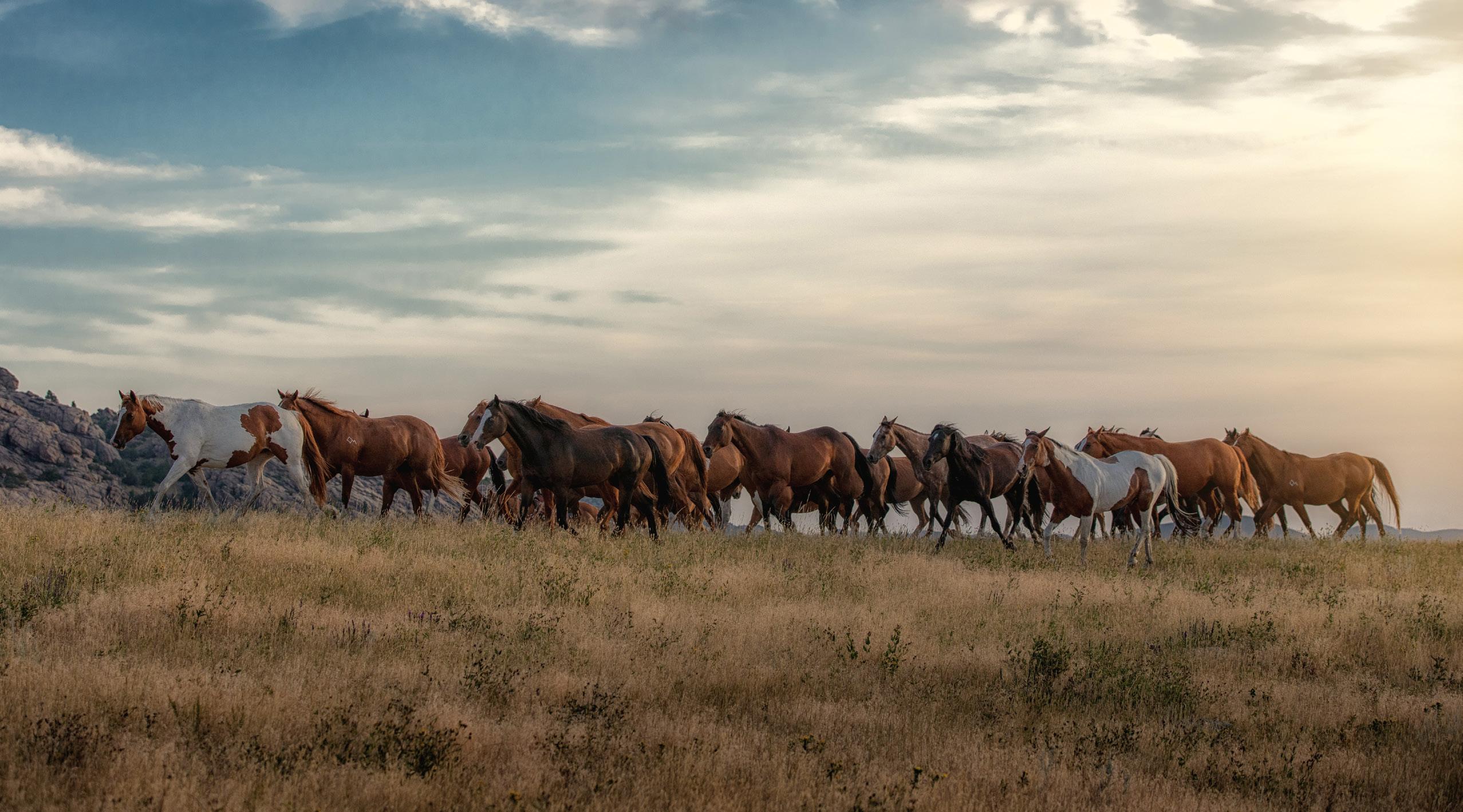

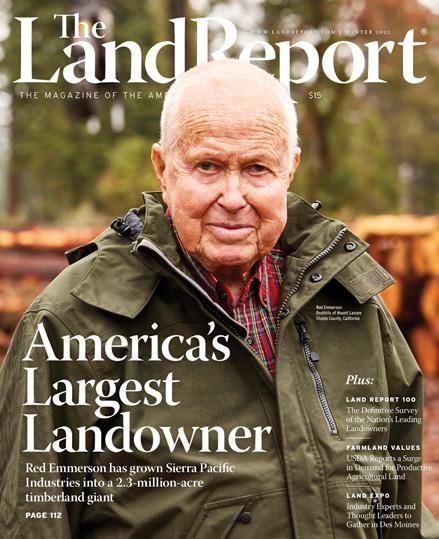
60 | WWW.REPUBLICRANCHES.COM | 888-726-2481
e Magazine of the American Landowner … As Well As ose Who Aspire to Join the Club.




800-238-8616 | WWW.FAYRANCHES.COM | 61 www.LandReport.com WWW.LANDREPORT.COM | SUMMER 20 21 THE MAGAZINE OF THE AMERICAN LANDOWNER $15 The AMERICAN ICON EXCLUSIVE EXCERPT BISON: PORTRAIT OF AN ICON SPORTING PROPERTIES Tour Elk Creek Ranch & Sedgefield Plantation + ROCKY MOUNTAINS SPECIAL SECTION
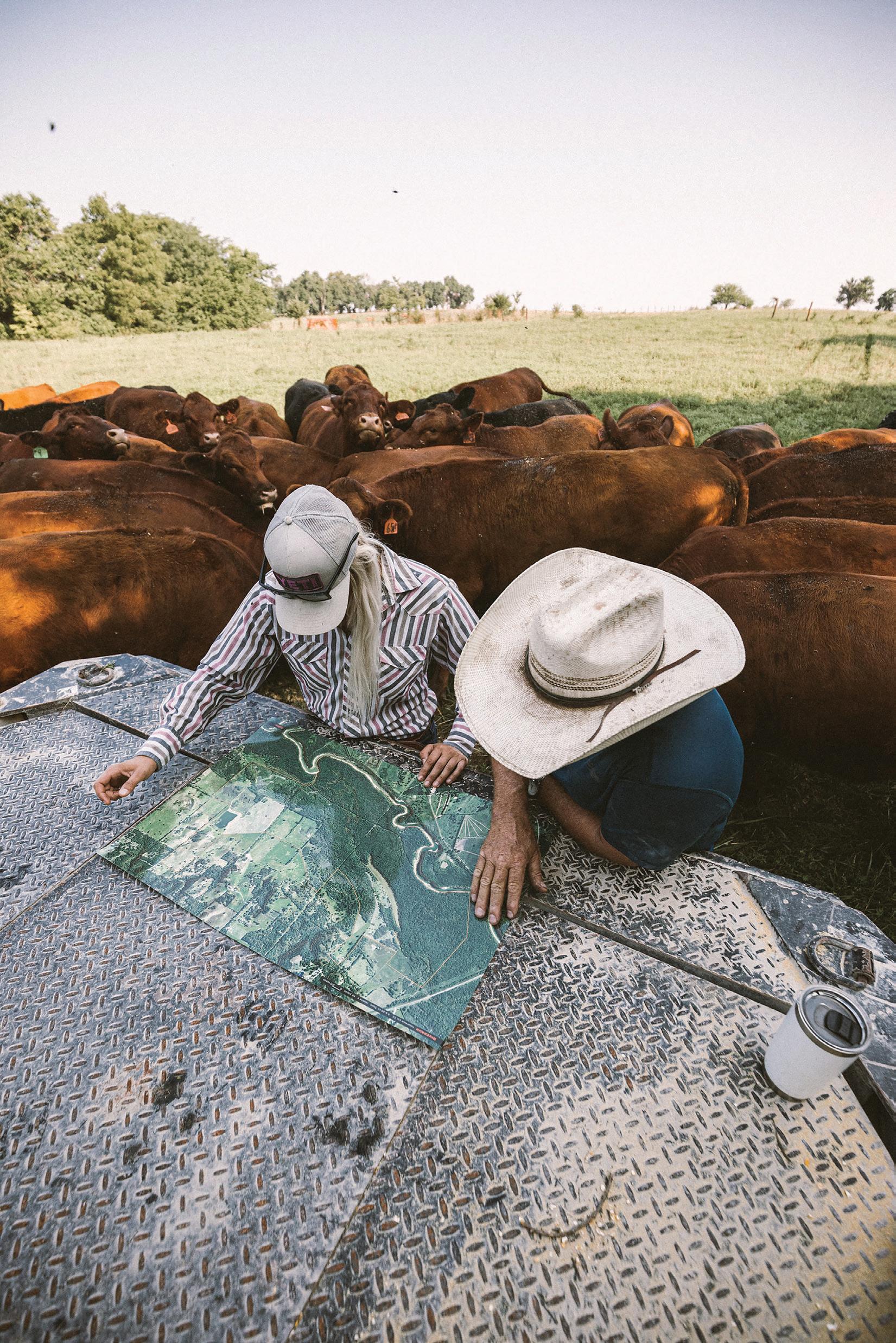
FOR THOSE PROUD OF THEIR LAND CUSTOM RANCH MAPS FAMILY-RUN SINCE 2009 ONLY AT www.HUNTERRA.COM
MONTANA


PROPERTY LOCATION GUIDE


64 | WWW.REPUBLICRANCHES.COM | 888-726-2481
MONTANA 1. arrow ranch 2. montana little valley ranch 3. jefferson springs ranch 4. golder ranch on rosebud creek 5. shields river lodge 6. four creeks sporting ranch 7. aspen canyon ranch 8. north fork willow creek ranch 9. rivers edge ranch 10. v timber creek ranch 11. velociraptor ranch 12. deep creek ranch 13. swanson’s apple orchard 14. spring family farm 15. stonehouse ranch 16. little rosie ranch 17. clear springs ranch 18. east gallatin river reserve 19. fox hill ranch 20. overlook at the sxs ranch 21. whiskey river ranch 22. schock ranch on the north fork 23. adkins farm on rock creek 24. barnes creek ranch 25. stagecoach road ranch 26. lower racetrack meadows 27. flint creek ranch 28. cooney ranch on red lodge creek 29. bull river paradise 30. riverbend angler cabins 31. big hole riverbend 32. summer cutoff retreat 33. veritas lodge 34. upper racetrack retreat 35. four bar five ranch 36. point of rocks retreat 37. 7 springs ranch 38. teton river ranch 39. bozeman pass ranch, tract 4 1 2 45 6 8 10 11 13 15 17 16 18 22 20 143 19 21 23 25 26 27 24 28 29 3031 9 32 33 34 35 36 37 38 39 7 12
FEATURED PROPERTY
ARROW RANCH
14,982
MT
Known as the “Land of 10,000 Haystacks”, the Upper Big Hole Valley, located in Montana’s Southwest corner, is renowned for quality hay, incredible scenery, and small-town charm. The Arrow Ranch is one of the most productive ranches in the Upper Big Hole Valley, both recreationally and agriculturally, where everything is measured in tone: hay, trout, and elk. With a conservation easement, the Arrow Ranch offers an opportunity for a fortunate land investor to embark on a special adventure.


800-238-8616 | WWW.FAYRANCHES.COM | 65
± Acres | $38,514,500 | Wisdom,
MONTANA 1
MONTANA LITTLE VALLEY RANCH
11,100 ± Acres | $23,295,000
Avon, MT
The Montana Little Valley Ranch is a historic mountain ranch in western Montana. Located in the scenic Avon Valley, about 50± miles from Helena, the core of the ranch’s 11,100± deeded acres and 9,956± leased acres are comprised of mountain meadows and timbered hills along the west side of the valley. The acreage includes flood irrigated pastures, native grasslands, rolling hills, timbered ridgelines, private lakes, riparian corridors, and healthy, well-managed forests. The ranch’s elevation ranges from approximately 4,000 to 6,800 feet above sea level.
JEFFERSON SPRINGS RANCH
1,797 ± Acres | $17,500,000 Whitehall, MT


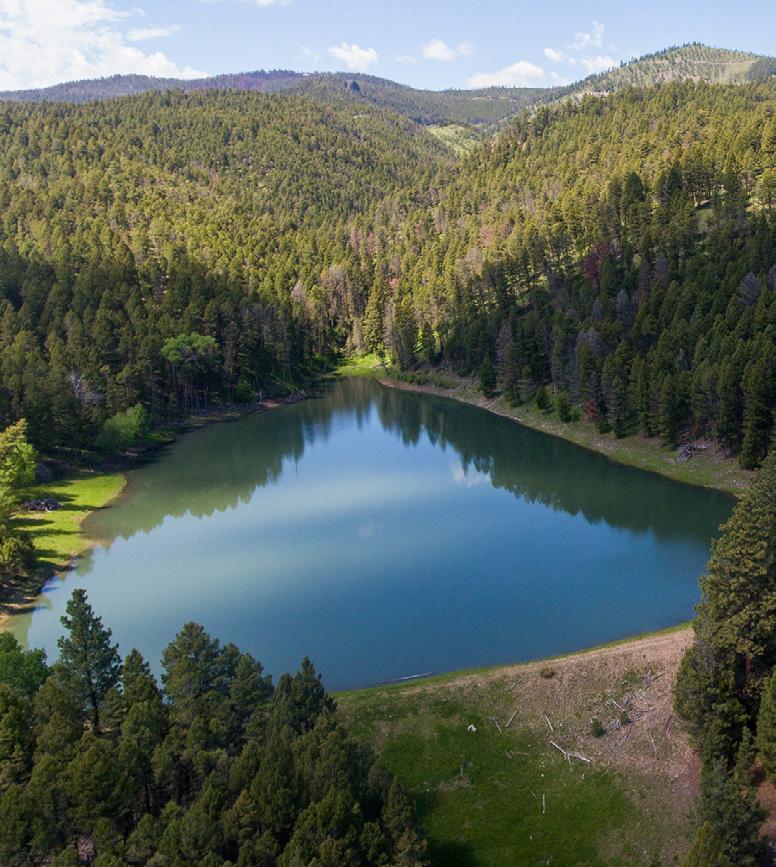
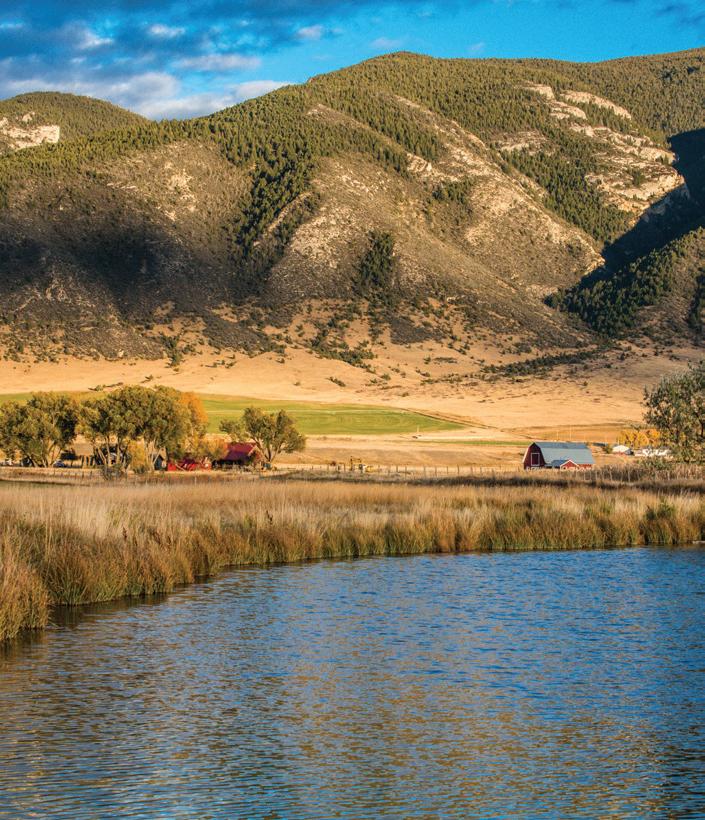

Boasting 1.6± miles of Jefferson River frontage to the east, the Tobacco Root Mountains and thousands of acres of contiguous public land make up the western boundary. Forested canyons, rolling hills, and river bottom provide habitat for a wide variety of wildlife. About 400± acres are under center pivot irrigation. Located an hour from Bozeman, land this size in the Jefferson River valley rarely comes to market.
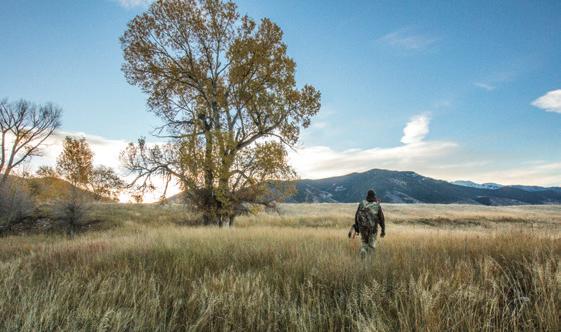
66 | WWW.REPUBLICRANCHES.COM | 888-726-2481
MONTANA 2 3
GOLDER RANCH ON ROSEBUD CREEK
12,942 ± Acres | $11,500,000 Colstrip, MT

Offered for the first time in 75 years, the historic Golder Ranch is situated along productive Rosebud Creek. It offers 12,942± deeded acres and 1,740± leased acres of untouched, majestic landscape featuring spring-fed deep draws, cliffs, and beautiful rock outcroppings with native prairie interspersed. Renowned for its excellent conservation efforts and stewardship, the Golder Ranch features outstanding grasslands for livestock grazing and hunting.

SHIELDS RIVER LODGE
283 ± Acres | $10,995,000 Clyde Park, MT
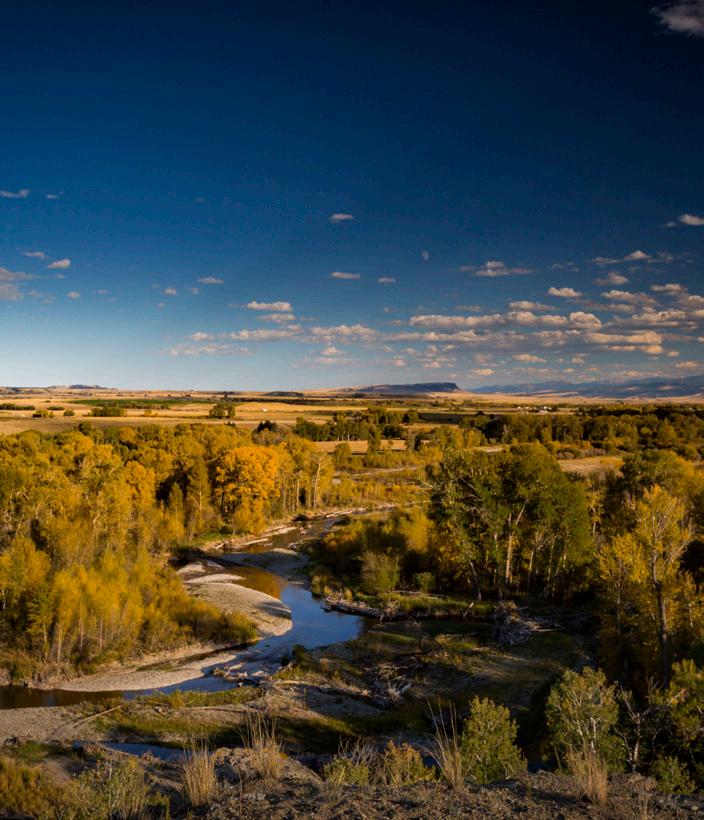



This property is nestled between the Bridger, Absaroka, and Crazy Mountains in the Shields River Valley. One mile of the Shields River, a guide favorite for fishable trout water, makes up the eastern boundary. Run as a fly fishing lodge for the past 2 years, the 9 bed, 10.5 bath compound is just outside Clyde Park, close to Livingston, and not far from Bozeman’s airport. This property is offered turnkey and is move-in ready.
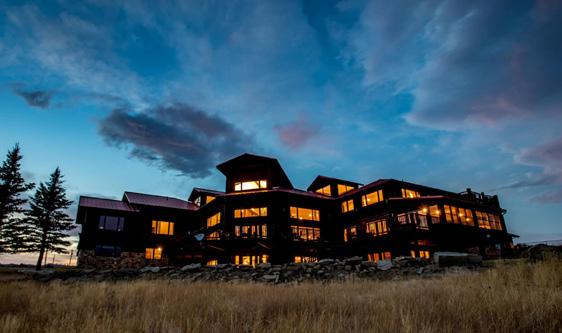
800-238-8616 | WWW.FAYRANCHES.COM | 67
MONTANA 4 5
FOUR CREEKS SPORTING RANCH
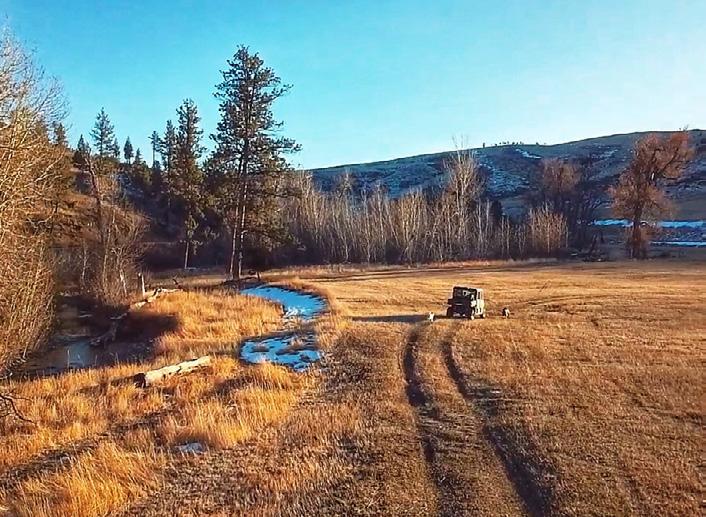
4,842 ± Acres | $10,750,000
Big Timber, MT
With over 10± miles of live, trout-filled water, and wildlife-rich terrain, Four Creeks Sporting Ranch creates a private outdoor sanctuary to enjoy year-round. Located south of Big Timber, MT, and adjoining millions of acres of beautiful public land, the ranch offers endless possibilities for recreational pursuits. The property has limited improvements and no conservation easements.

ASPEN CANYON RANCH
934 ± Acres | $10,000,000



Bozeman, MT

Aspen Canyon Ranch consists of six parcels totaling 934± acres and is in the Trail Creek area which places it ideally between Bozeman and the Paradise Valley. With amazing views of the Absarokee/Beartooth Mountains to the east and Chimney Rock and the Gallatin Mountains to the south – serenity and privacy radiate throughout the property. Rolling grass hills and pastures give way to aspen and willow-lined draws which lead up to timber-covered mountains.
NORTH FORK WILLOW CREEK RANCH
2,560 ± Acres | $7,900,000
Choteau, MT
This property is a scenic and productive multi-generation working cattle ranch within a short drive along wellmaintained county roads to the quaint agricultural and Western town of Choteau, Montana. This ranch also features a creekside historic home that has been updated for comfort and convenience plus a complete set of working facilities including barns and corrals to support current livestock operations.
68 | WWW.REPUBLICRANCHES.COM | 888-726-2481
MONTANA 6 7 8
RIVERS EDGE RANCH



32 ± Acres | $7,845,000 Melrose, MT
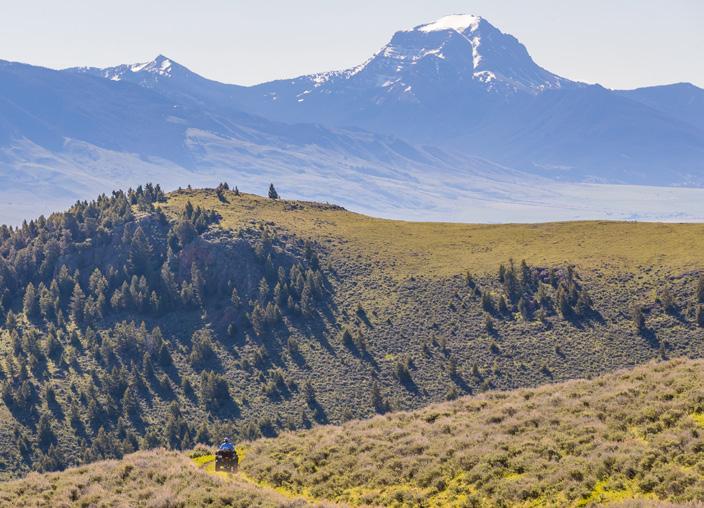
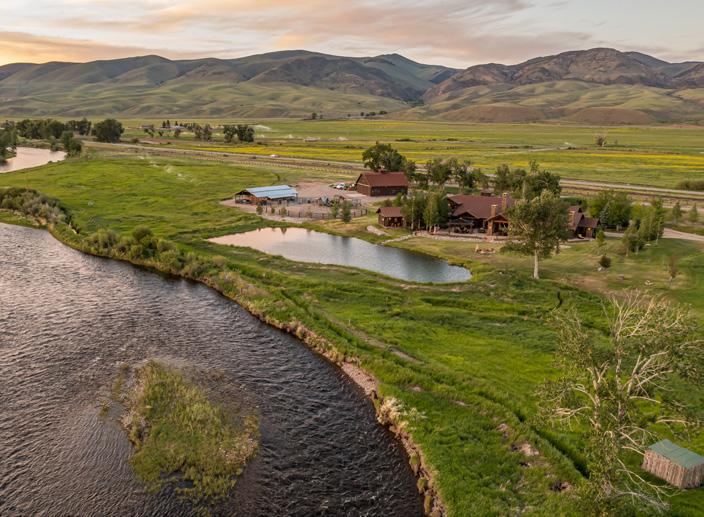
This property is irrigated with .5± miles of the Big Hole River and a stocked pond. Across the river, State land turns into BLM and National Forest. The property and public land are home to a variety of wildlife. The 9,322± SF, 4 bed, 4.5 bath home, a barn/workshop, 4-stall horse barn, gazebo, and greenhouse are a few minutes to Melrose, and 30± minutes to Wise River, as well as Butte and its airport.
V TIMBER CREEK RANCH
4,685 ± Acres | $6,999,999 Ennis, MT
About 10 minutes to Ennis, and only 3± miles to Virginia City, this property borders BLM and State land, providing thousands of acres of land to recreate on. The ranch boasts views of 7 mountain ranges, as well as wildlife ranging from bears and moose to eagles and elk. The ranch is very diverse, from grassy hillsides to spring-fed valleys.
VELOCIRAPTOR RANCH
4,873 ± Acres | $6,375,000 Billings, MT
Patented by the U.S. government and founded in 1912 by the family who owns it today, Velociraptor Ranch is truly reminiscent of the ‘Old West’. With great views of the eastern front of the Rockies and nestled in the foothills of the Pryor/Bighorn mountains, the rolling grasslands, dryland crops, breathtaking canyons, and year-round Cottonwood Creek.
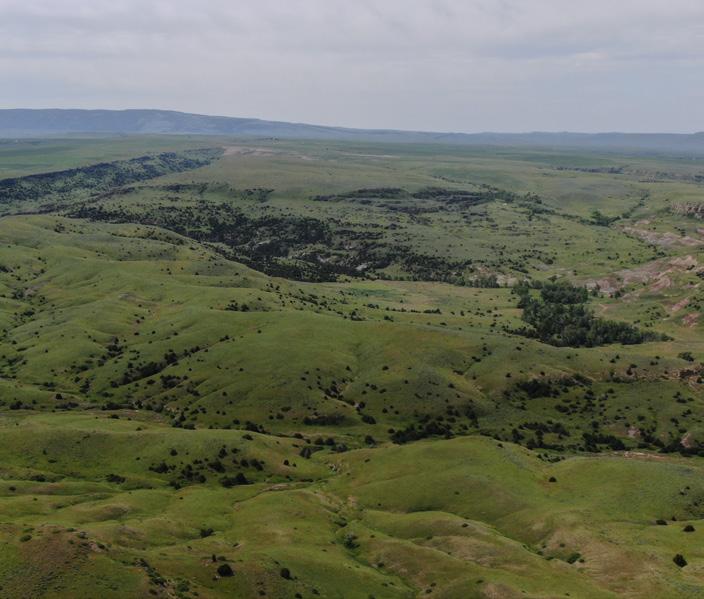
800-238-8616 | WWW.FAYRANCHES.COM | 69
MONTANA 9 10 11
DEEP CREEK RANCH
238 ± Acres | $5,900,000
Livingston, MT
Deep Creek Ranch is an extraordinary end-of-the-road property located at the foot of the Absaroka Mountain Range in the northeastern corner of Montana’s famed Paradise Valley. Woods, meadows, spruce and aspen groves, plentiful and varied wildlife, and snow-capped mountain peaks of 9,000 to 11,000-foot dominate this magnificent and visually private 238± acres.
SWANSON’S APPLE ORCHARD
436 ± Acres | $5,900,000



Corvallis, MT
Swanson’s Apple Orchard, located in the foothills of the Sapphire Mountain Range, spans approximately 426± acres of hay ground, pastures, and a productive apple orchard. The apple orchard covers approximately 30± acres. The 7,500± square foot warehouse provides ample space to store fruit, meet customers, package fruit for shipment, and load commercial trucks.
SPRING FAMILY FARM
313 ± Acres | $5,300,000
Belgrade, MT
Spring Family Farm is situated beneath the beautiful Bridger Mountains and offered for sale for the first time in four generations. Located just 20 minutes outside the university town of Bozeman, this 313± acre property combines beautiful views of five surrounding mountain ranges, excellent trout fishing on a private creek, abundant wildlife, and premium farm ground.

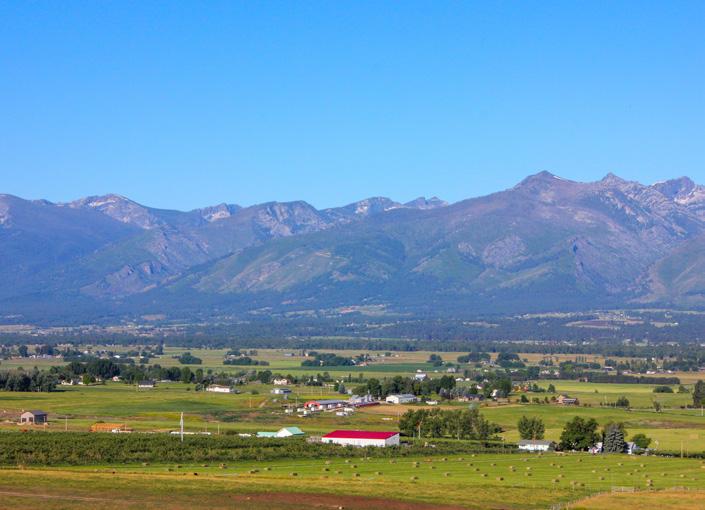

70 | WWW.REPUBLICRANCHES.COM | 888-726-2481
MONTANA 12 13 14
STONEHOUSE RANCH
400 ± Acres | $3,995,000 Reed Point, MT


Just 30± minutes to Big Timber and Columbus, this historic home welcomed travelers on the BozemanMiles City stage line. With dates carved in stone, this treasure dates to 1872. A manicured lawn gives way to pastures and prairies, a mile of spring creek, and 2 yearround springs. Elk, deer, antelope, and upland game abound. Outbuildings include a hanger, barn, corral, and shed.
LITTLE ROSIE RANCH
3,033 ± Acres | $3,200,000 Sand Springs, MT




This versatile ranch offers a getaway for those who enjoy privacy and the great outdoors. Whether you are in the market for grass, an avid hunter, or just appreciate a variety of wildlife, this ranch is a beautiful mix of deep canyons, badlands, and prairie wilderness with unlimited potential.
CLEAR SPRINGS RANCH
303 ± Acres | $3,039,570
Whitehall, MT
This property includes 1.1± miles of springs about 5 minutes from Whitehall. Views of the Tobacco Root and Highland Mountains surround the property. Wildlife habitat attracts white-tailed deer, turkey, pheasant, and waterfowl. The Jefferson River is just down the road. There is tremendous potential for a spring creek enhancement project.
800-238-8616 | WWW.FAYRANCHES.COM | 71
MONTANA 15 16 17
EAST GALLATIN RIVER RESERVE
34 ± Acres | $2,990,000
Belgrade, MT
The peaceful East Gallatin River winds through private acres that encompass the East Gallatin River Reserve, 20 minutes from Bozeman. With no conservation easement, this property is ready for the new owners to build their dream home on the river.

FOX HILL RANCH
2,980 ± Acres | $2,950,000 Harlowton, MT



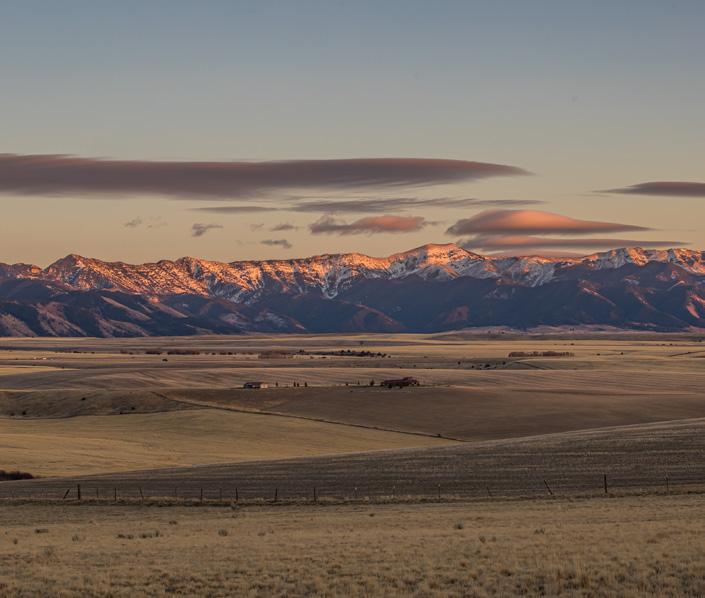

Fox Hill Ranch, located 7 miles from Harlowtown, includes a total of approximately 2,980± deeded acres. This is an ideal location for a savvy buyer who wishes to invest in Montana land, receive income from a potential grazing lease or run some cattle of your own and explore the development of a new wind project in the region.
OVERLOOK AT THE SXS RANCH
68 ± Acres | $2,650,000
Belgrade, MT
This is an opportunity to purchase land in the Gallatin Valley, along with live, fishable, year-round water. Dry Creek traverses through the property for 1,800± ft. Only 30± minutes to Bozeman and 15± minutes to Bozeman’s airport, this opportunity provides membership in the exclusive SxS Ranch, including shared recreational interest in 971± acres.
72 | WWW.REPUBLICRANCHES.COM | 888-726-2481
MONTANA 18 19 20
21
WHISKEY RIVER RANCH
3,604 ± Acres | $2,599,000
Melstone, MT
Located in Montana’s picturesque Musselshell River Valley, Whiskey River Ranch is made up of primarily agricultural land, boasting over three miles of the Musselshell River, and offers both lifestyle and livelihood elements. Improvements are sustainable to livestock and equestrian operations, with previous owners running horses year-round as well as leasing pastures for cattle.
SCHOCK RANCH ON THE NORTH FORK
124 ± Acres | $2,595,000
Townsend, MT
Schock Ranch on the North Fork is the opportunity to own a turn-key operational ranch, fine-tuned to provide ease of management and maximum enjoyment. Recreational pursuits on and around the ranch provide the ability to pursue some of the finest hunting and recreation in the area.
ADKINS FARM ON ROCK CREEK
100 ± Acres | $2,500,000 Joliet, MT




Adkins Farm on Rock Creek offers 100 ± acres of agricultural, commercial, and recreational opportunities. Adkins Farm is located 6 miles north of Joliet, Montana, and features cottonwood-rich riverbanks of Rock Creek for fishing and hunting enthusiasts.


800-238-8616 | WWW.FAYRANCHES.COM | 73
MONTANA
22 23
BARNES CREEK RANCH
320 ± Acres | $2,450,000
Hall, MT
The Barnes Creek Ranch is situated in a private valley setting with beautiful mountain views just minutes from the quaint agricultural community of Hall. The ranch features varied topography, including rolling meadows, creek bottomlands, and timbered draws, all with the backdrop of the nearby Flint Creek Mountain Range.
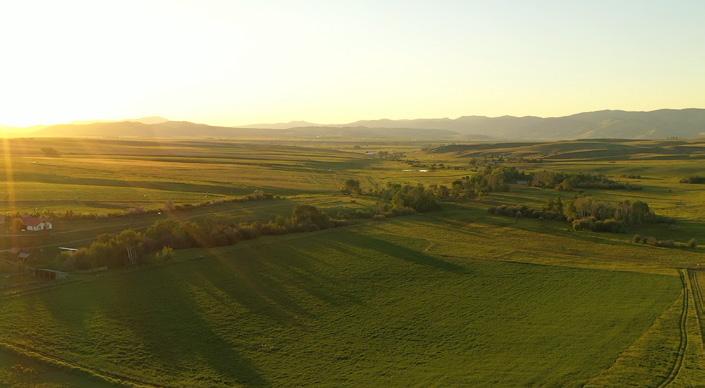
STAGECOACH ROAD RANCH
315 ± Acres | $2,350,000
Helena, MT
The Stagecoach Road Ranch is situated in a private mountain setting just minutes from Helena. In a region rich with history, the ranch includes an old stagecoach road that slices across a high meadow on the ranch. The ranch features a variety of topography, including mountain meadows, timbered draws, and lush stands of willows and aspens.
LOWER RACETRACK MEADOWS
153 ± Acres | $2,250,000
Deer Lodge, MT
This 153± acre offering lies in the western half of the Deer Lodge Valley. It consists of beautiful bottom ground with a pond, sub-irrigated fields, and tree-lined riparian areas. Racetrack Creek braids through the property providing lush corridors for wildlife to thrive, and the tree-lined creek bottom provides the ultimate privacy.


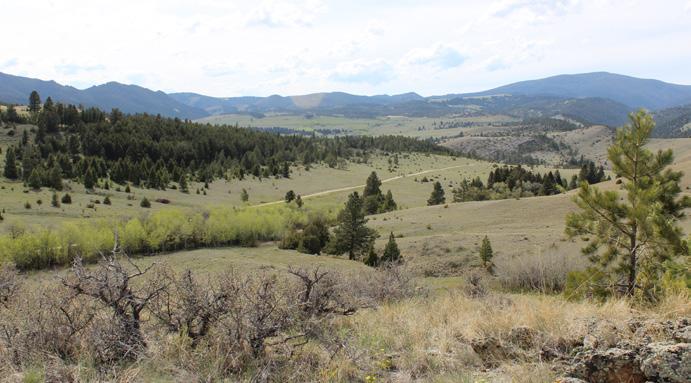
FLINT CREEK RANCH
196 ± Acres | $2,200,000
MT
Flint Creek Ranch is comprised of lush sub-irrigated meadows, rich riparian bottomland, and beautiful Flint Creek Mountain Range panoramic views. Flint Creek, one of the best-kept fishing secrets in Montana, traverses through the ranch for 1± miles with improved streambanks to enrich the fishing habitat.
888-726-2481




74 | WWW.REPUBLICRANCHES.COM |
MONTANA
Drummond,
24 25 26 27
COONEY RANCH ON RED LODGE CREEK
200 ± Acres | $1,950,000
Roberts, MT
Cooney Ranch is a beautiful 200± acre ranch located outside Roberts, Montana. As the first private ranch below the Cooney State Park, the farm provides open water yearround via the outlet of Cooney Reservoir on Red Lodge Creek.

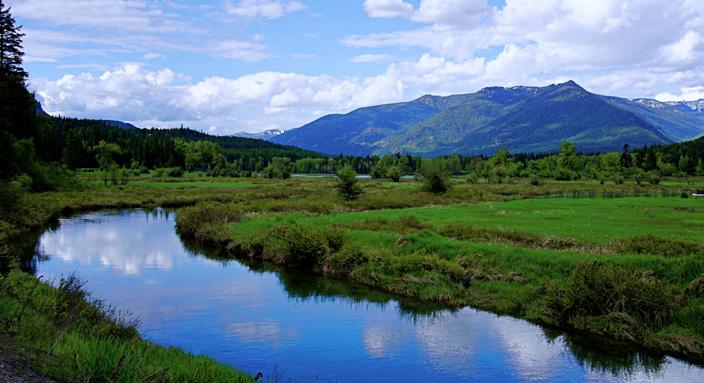
BULL RIVER PARADISE
146 ± Acres | $1,749,900
Noxon, MT
Enjoy 146± acres of grassy meadows and green timber on the banks of the Bull River. Abundant wildlife, waterfowl, and Bull River Trout make this property very special with the iconic Montana landscape is on full display. Libby, Montana is approximately 45 minutes from the ranch and offers a nice variety of shopping options and dining.
RIVERBEND ANGLER CABINS
40 ± Acres | $1,700,000




Fort Smith, MT
Riverbend Angler Cabins look out over the first mile of the Big Horn River, one of the most famous tailwater fisheries for trout fishing in the lower 48. These two custom-built cabins on 40± acres of land and a quarter mile of river frontage provide a beautiful place to relax and enjoy the landscape.
BIG HOLE RIVERBEND
30 ± Acres | $1,690,000 Divide, MT
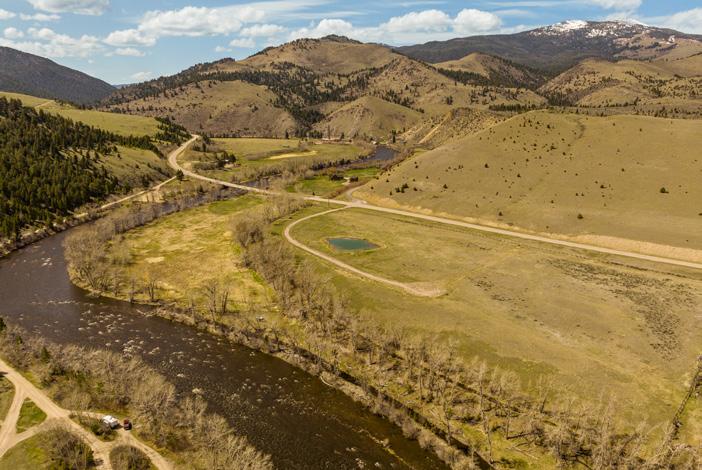
This property boasts .5± miles of Big Hole River frontage. In 5 parcels, the property makes up an approved subdivision that could also be a private riverfront retreat. A variety of wildlife call the surrounding public land home. This property is 15± minutes to Wise River and its airstrip, and 20± minutes to Butte and its airport.

800-238-8616 | WWW.FAYRANCHES.COM | 75 MONTANA
28 29 30 31
SUMMER CUTOFF RETREAT
5 ± Acres | $1,495,000
Bozeman, MT
Just 10± minutes from downtown Bozeman, this perimeterfenced property features a 3,722± SF, 3 bed, 4 bath home, a large 40’ x 75’ shop, and 5 fenced pastures. No covenants, restrictions, or zoning make this a blank canvas.
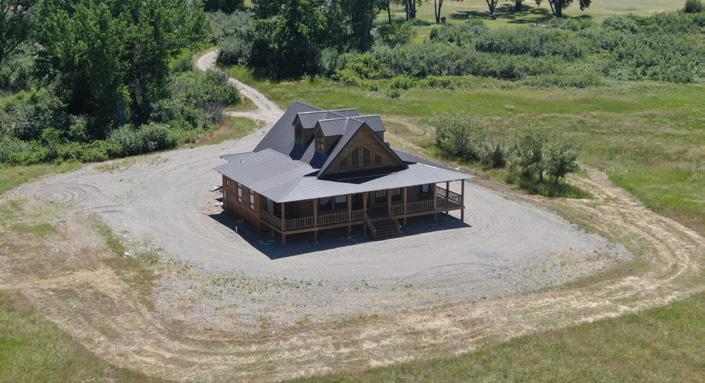
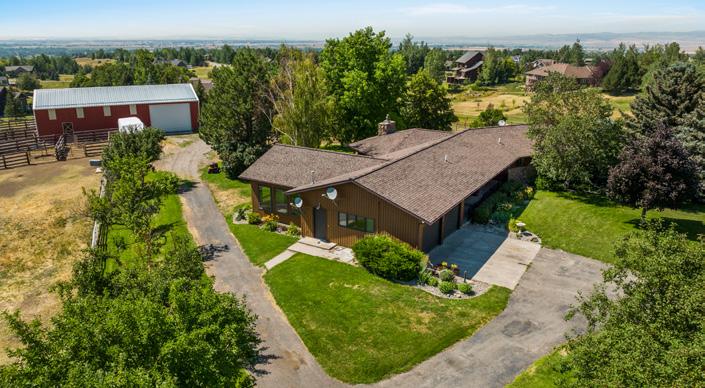
VERITAS LODGE
47 ± Acres | $1,300,000
Fort Smith, MT
Veritas Lodge sits just one mile downstream of the Yellowtail Dam, on 47± riverfront acres of one of the most iconic fly fishing tailwaters in the lower 48. The property has over one-quarter mile of frontage on the river, a gently rolling topography of chokecherry and buffalo berry bushes, willows and cottonwoods, a spring, and several small coulees.
UPPER RACETRACK RETREAT
121 ± Acres | $1,250,000
Deer Lodge, MT
The Upper Racetrack Retreat is situated in the rolling foothills of the Flint Creek Range along the western edge of the Deer Lodge Valley. This valley is the main thoroughfare between the booming towns of Bozeman and Missoula. The property itself consists of approximately 121± deeded acres.

FOUR BAR FIVE RANCH
960 ± Acres | $1,127,000
Biddle, MT
Offering 960± acres of unspoiled eastern Montana paradise, the Four Bar Five Ranch is the gem of eastern Montana. Adjacent to State and Federal land, this property features wide open spaces and picturesque prairies and is being offered to the market for the first time.

888-726-2481




76 | WWW.REPUBLICRANCHES.COM |
MONTANA
32 33 34 35
POINT OF ROCKS RETREAT
60 ± Acres | $1,100,000




Whitehall, MT
This property includes pivot and wheel line irrigation and 1,930± feet of Parrot Ditch. The irrigated land is suitable for a variety of wildlife. The 2,400± SF, 3 bed home is about an hour from Bozeman, and 10± minutes from Twin Bridges.
7 SPRINGS RANCH
120 ± Acres | $995,000 Sheridan, MT

This property sits between Twin Bridges and Sheridan in the Ruby River Valley, known for its scenic beauty, four blue-ribbon rivers, and five mountain ranges. Several spring-fed ponds support a substantial population of white-tailed deer, as well as waterfowl and pheasant. Build sites overlook the lower riparian area.
TETON RIVER RANCH
199 ± Acres | $995,000
Loma, MT
Contiguous to public land, this property boasts .5± miles of the Teton River. The Missouri and Marias Rivers are a short walk away and can be seen from Vimy Ridge on the property. Ample wildlife call this area home. The 2 bed, 1 bath cabin is 10± minutes from Fort Benton and 40± minutes from Great Falls.
BOZEMAN PASS RANCH, TRACT 4
161 ± Acres | $949,000 Livingston, MT
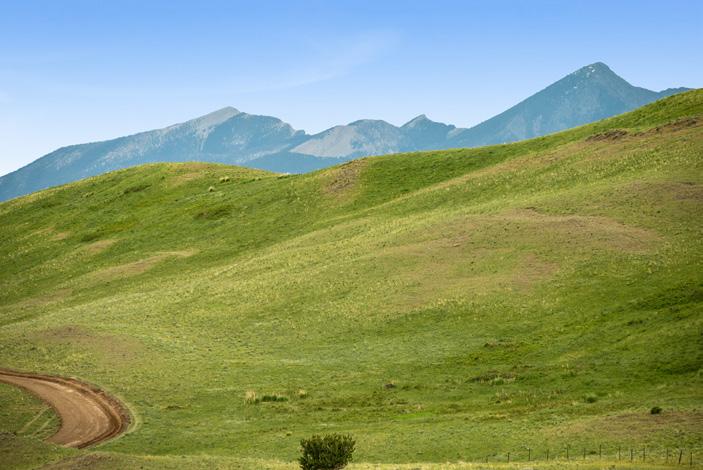
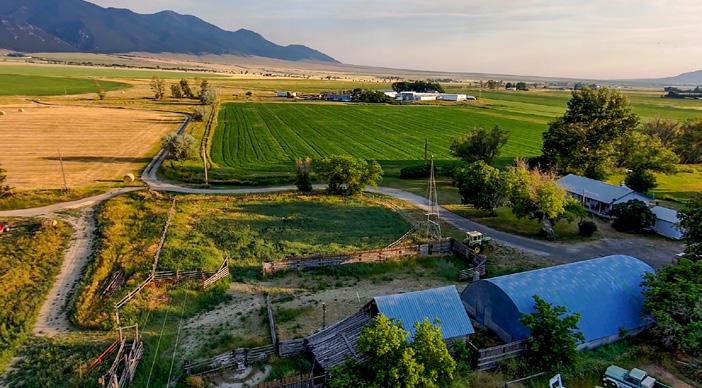
This property is near Bozeman, Livingston, the Yellowstone River, and Big Sky. Surrounded by the Absaroka, Bridger, and Crazy Mountains, Tract 4 is improved and ready for building with a newly constructed private lane and electric. This property presents a rare opportunity to live in one of the most desirable areas of Montana.
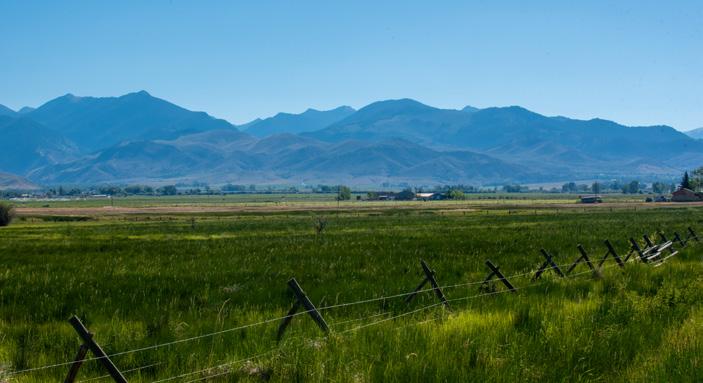
800-238-8616 | WWW.FAYRANCHES.COM | 77 MONTANA
36 37 38 39
SOUTH DAKOTA


SPEARFISH RANCHETTE HORSE PROPERTY
57 ± Acres | $1,950,000.00 Spearfish, SD

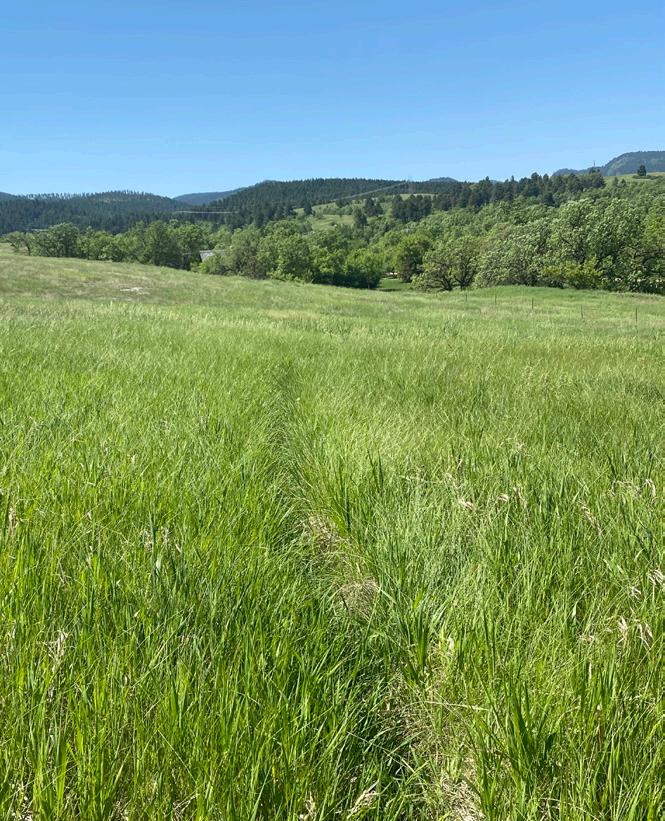
The Spearfish Ranchette Horse Property offers 57± acres adjacent to the city limits of Spearfish, South Dakota. Here is your rare opportunity to purchase an exceptional tract of vacant land close to one of the most desirable communities to live, work, and play in. This property offers excellent blacktop access and scenic panoramic views of the Northern Black Hills. The 57± conveniently located acres are currently platted into three individual tracts.

WYOMING
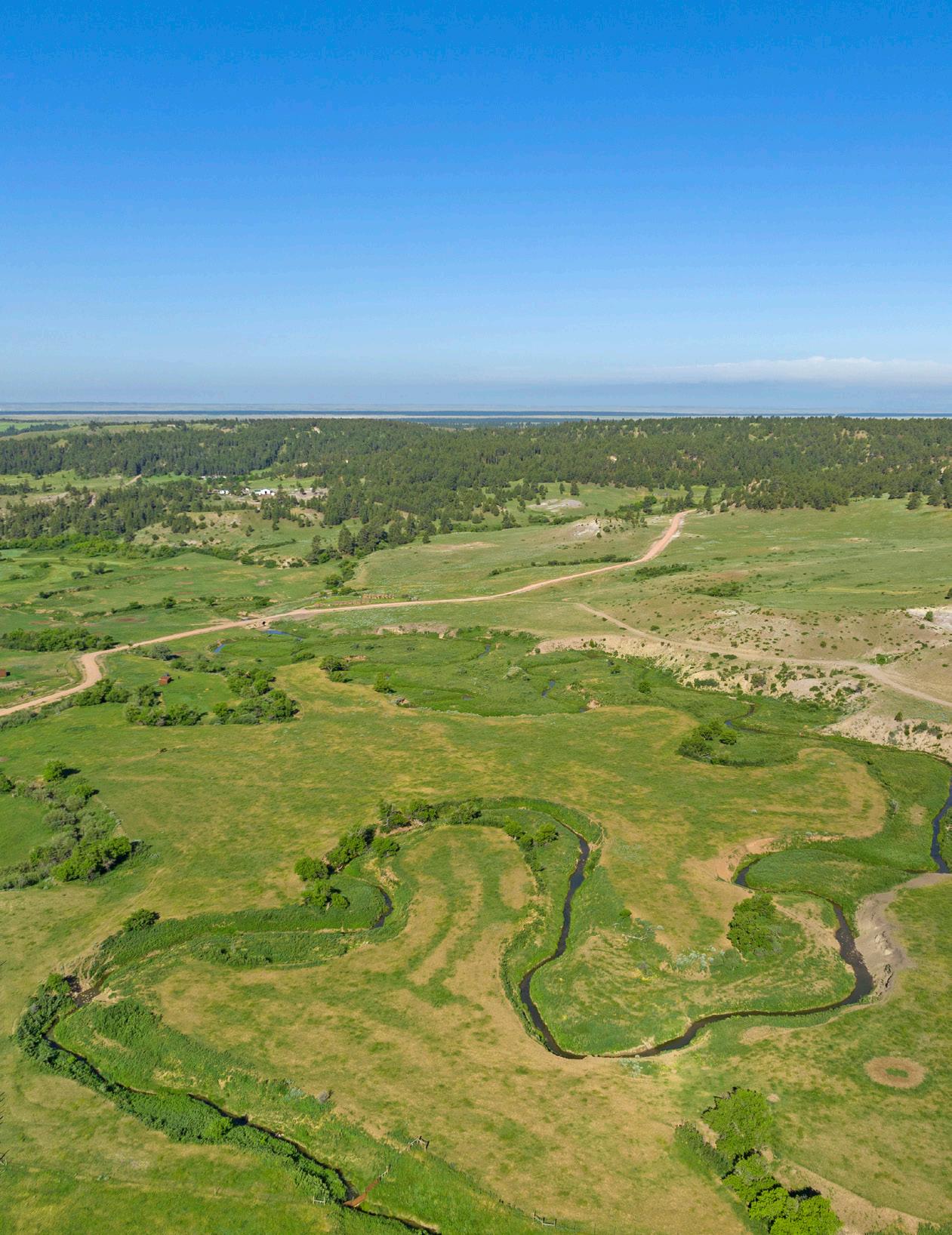
PROPERTY LOCATION GUIDE


80 | WWW.REPUBLICRANCHES.COM | 888-726-2481 WYOMING
1. high divide ranch on kara creek 2. ef ranch 3. cactus ranch 1 2 3
HIGH DIVIDE RANCH ON

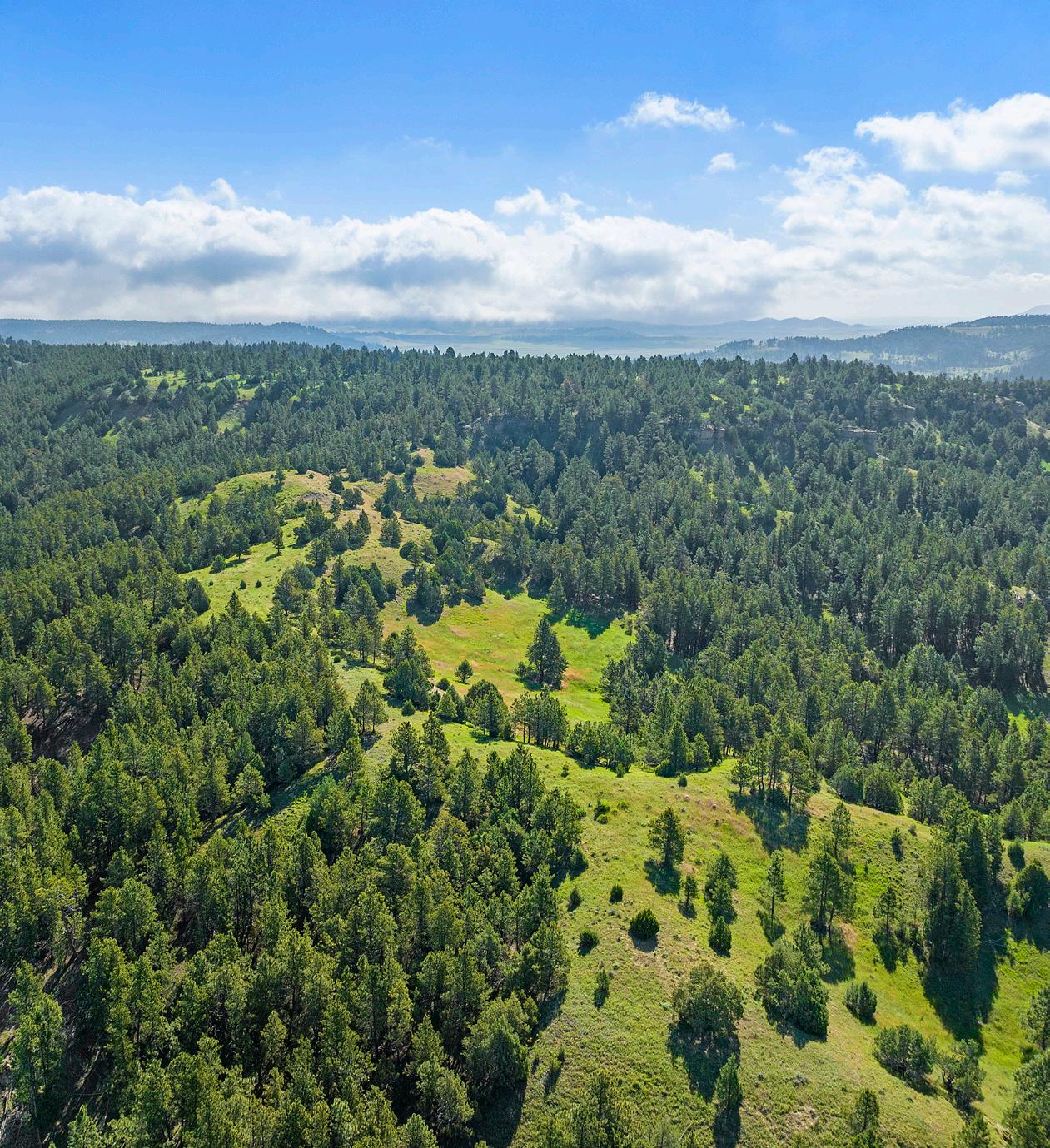
800-238-8616 | WWW.FAYRANCHES.COM | 81
KARA CREEK 1,979 ± Acres | $9,950,000 | Sundance, WY The High Divide Ranch on Kara Creek offers breathtaking views of Inyan Kara and the Bear Lodge Mountains. This recreational paradise offers an abundance of opportunities to enjoy the great outdoors or run a smaller agricultural or equestrian operation. A newly constructed timber frame home features Amish precision craftsmanship encompassing over 8,200+ square feet of living space, including a 1,200 square foot attached heated garage overlooking the plateau at an elevation of 4,812 feet above sea level boasts panoramic views. This private and easy-access estate is a year-round recreational escape for any outdoor enthusiast. FEATURED PROPERTY WYOMING 1
EF RANCH
200 ± Acres | $1,490,000 Rozet, WY


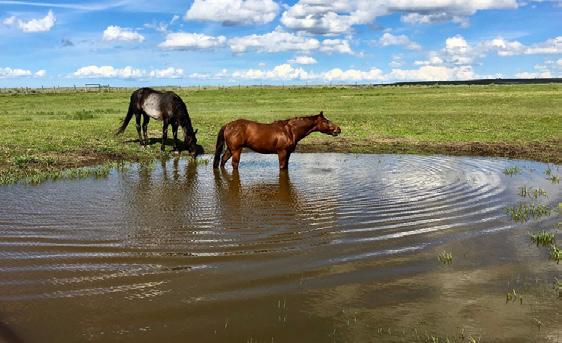
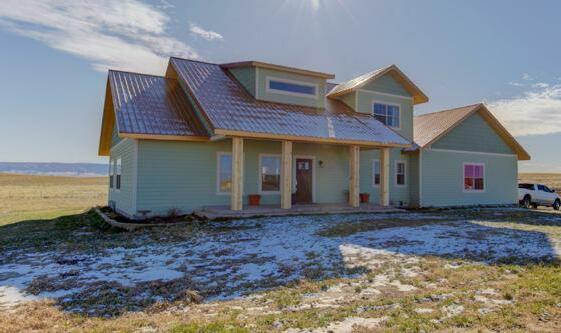
The EF Ranch is located on the northern edge of the Thunder Basin National Grass Lands, where the endless horizon gets swallowed by the sea of open blue sky. Approximately 20 miles from the full-service city of Gillette, Wyoming, this 200± acre property is a quintessential Gentleman’s Ranch. Boasting horse facilities, cattle working facilities, a barn, a 4,000 Square Foot insulated and heated shop, and a 2,500 foot grass landing strip with hanger space to park your plane.
CACTUS RANCH
190 ± Acres | $930,000 Evansville, WY

The Cactus Ranch features a modern, highly energyefficient home and 190.07± acres only minutes from Casper, Wyoming. Located about 30 minutes from Casper International Airport and only 15 minutes to the amenities of downtown Casper, this modern home and its ranchlands offer privacy and views of Casper Mountain amidst Wyoming’s beautiful prairies and under it’s blue sky. The custom 4,588± square foot, four-bedroom, 4 1/2 bathroom home is built with energy efficiency and comfort in mind.

82 | WWW.REPUBLICRANCHES.COM | 888-726-2481
WYOMING 2 3
IDAHO


PROPERTY LOCATION GUIDE


little eight mile
sanctuary on third
lava hot springs
84 | WWW.REPUBLICRANCHES.COM | 888-726-2481 IDAHO
ranch
fork
ranch 6 5 3 1 7 2 4 8
LITTLE EIGHT MILE RANCH ON THE LEMHI RIVER
8,163 ± Acres | $20,995,000 | Leadore, ID

Nestled at the base of the continental divide in north-central Idaho, this ranch is one of the most scenic and prolific sporting ranches in the Rocky Mountain West. Comprised of 8,163± deeded acres and 65,486± leased acres, totaling 73,649± acres, the ranch is expansive, featuring 9.25± miles of the Lemhi River, a private, wild trout fishery, plus countless miles of spring creeks and mountain streams. This is a true river-to-mountain offering with more miles of fishable trout water than any ranch we know of on the market today.

800-238-8616 | WWW.FAYRANCHES.COM | 85
FEATURED PROPERTY IDAHO 1
D BAR C RANCH
600 ± Acres | $ 6,500,000


Bancroft, ID
D Bar C Ranch is tucked away at the foot of the Soda Springs hills in Bancroft, Idaho, featuring a lovely 3,000 square foot, five bedroom, two bath log home. The yard is surrounded by mature trees that provide shade and grant just the right amount of privacy. D Bar C Ranch is a 600± acre paradise with four flowing springs, three ponds, and farm ground and pasture
CABIN CREEK RANCH
1,720 ± Acres | $5,975,000
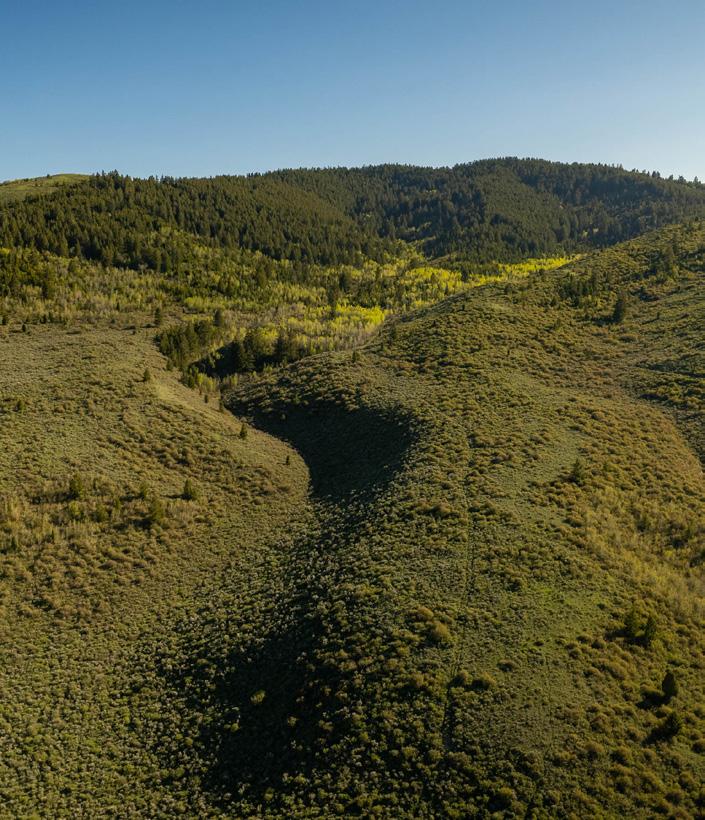
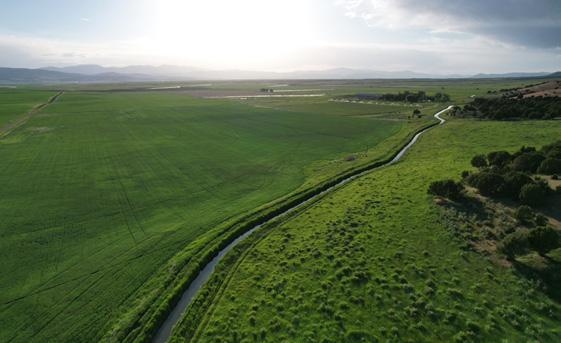

Montpelier, ID
Cabin Creek Ranch is nestled in the heart of the Bear River Valley, just minutes from the beauty and recreation of Bear Lake. Mountains on all sides surround Cabin Creek Ranch, with the Bear River running through the eastern boundary of the ranch. Access is off of a county-maintained road that runs along the ranch’s eastern border. The habitat is widely abundant with springs, running water, and grass meadows in every direction.
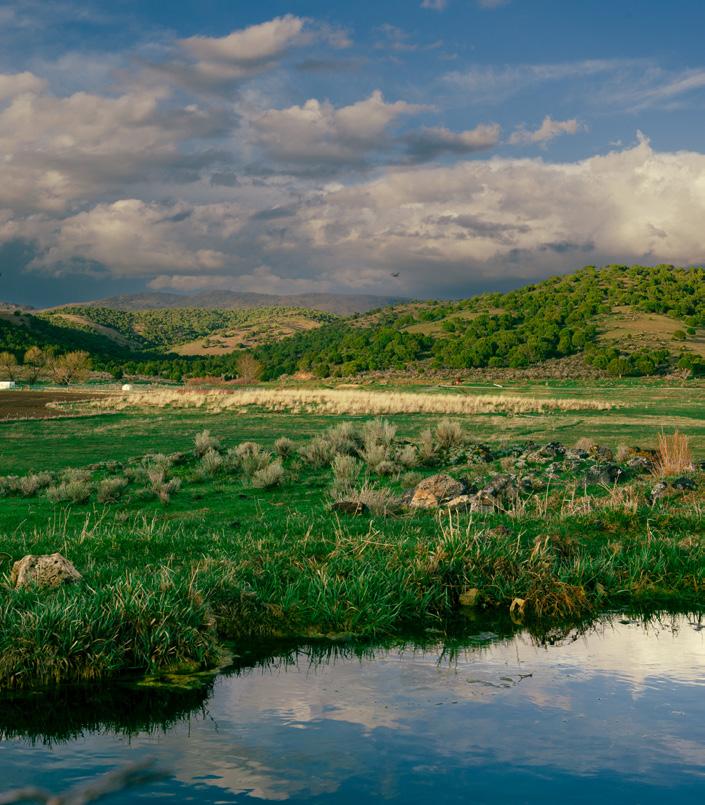
86 | WWW.REPUBLICRANCHES.COM | 888-726-2481
IDAHO 2 3
SHILO RANCH

530 ± Acres | $3,980,000 Bancroft, ID
The Shilo Ranch is nestled in the heart of southeastern Idaho in the gem valley with beautiful views and serene surroundings. The ranch is comprised of 530± fully fenced acres, three homes, outbuildings, a shop, grain silos, corrals, and equipment/hay storage. There are also plenty of shares of water from the Toponce canal, ditch, and groundwater rights.
COW CREEK RANCH
1,796 ± Acres | $3,500,000 Marsing, ID
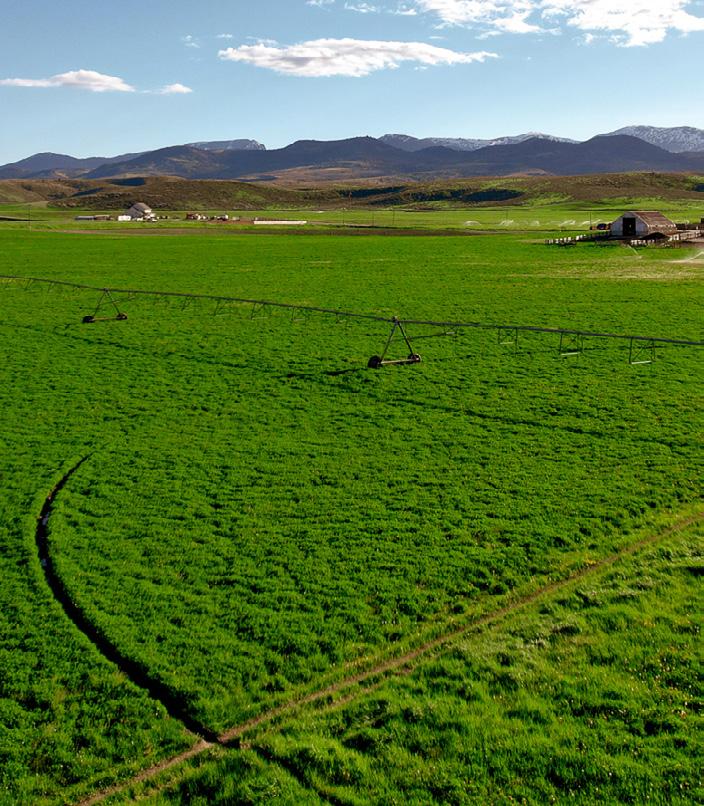


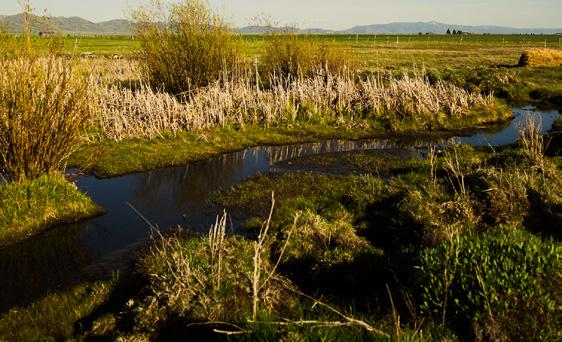
The Cow Creek Ranch, located in the Owyhee Mountains, is comprised of 1,796± deeded acres with another 5,000± acres BLM lease land adjacent to the home place. There are 192± acres of irrigation rights from Cow Creek, which flows through the middle of the ranch along with rights out of Jackson Creek. The creeks create ideal wildlife habitat for big game and upland birds with thousands of acres to hunt and explore.
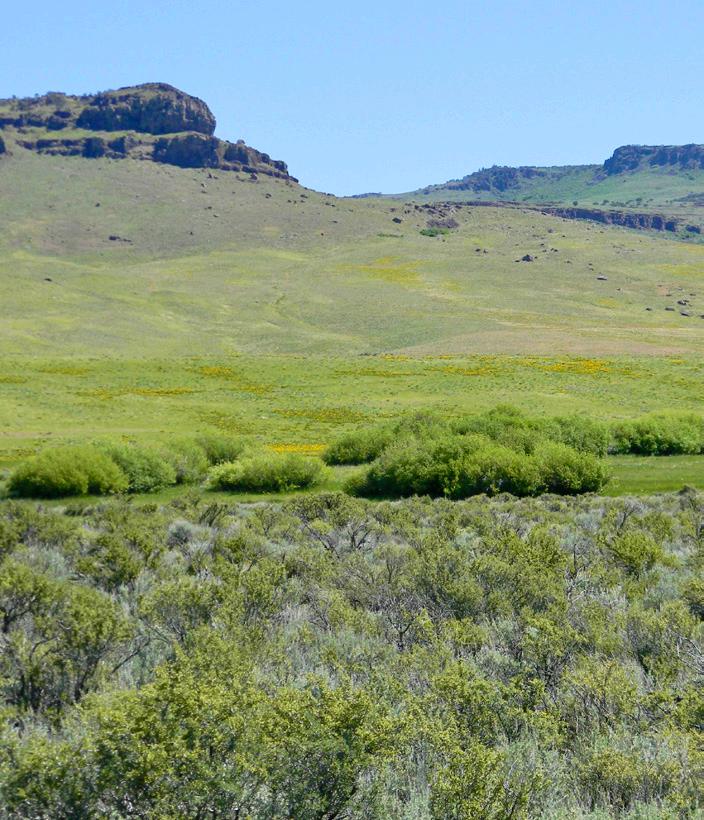
800-238-8616 | WWW.FAYRANCHES.COM | 87
IDAHO 4 5
SANCTUARY ON THIRD FORK
480 ± Acres | $2,495,000 Ola, ID
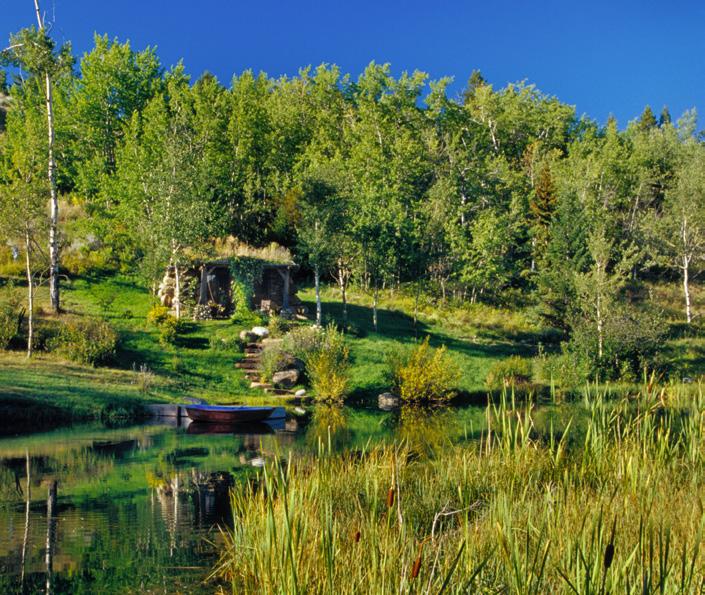
Sanctuary on Third Fork is positioned just south of the Boise National Forest on NF-16 forest road. The property has a clear mountain trout stream that runs the length of the lush meadows, flowing throughout the year. Elevation rises from 3,600 to 4,600 feet providing excellent wildlife habitat. Many pockets and ledges exist for building a dream retreat.
IDAHOMESTEAD



166 ± Acres | $1,775,000 Cambridge, ID

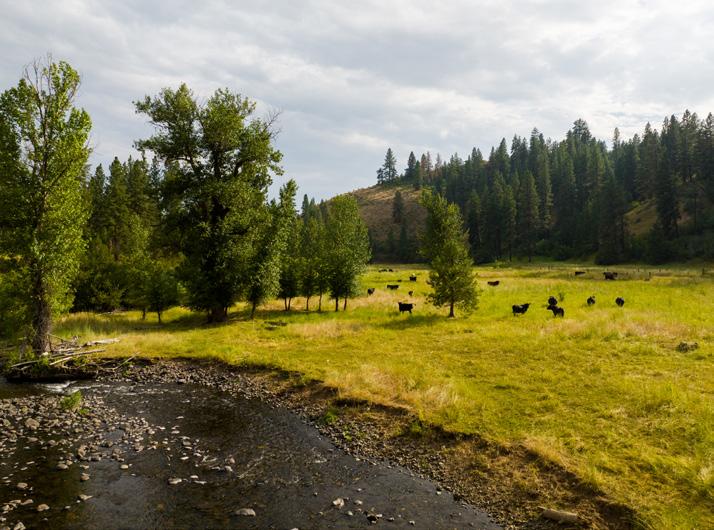
The Idahomestead provides a custom 2017-built home with a spacious wrap-around covered porch to take in all the mountain views, wildlife, and the sound of the yearround creek. The home feels like a cabin with all the wood elements and rustic features. The Idahomestead is close enough to civilization but tucked away from the world at the end of a dead end gravel road nestled in the Cuddy Mountains.
LAVA HOT SPRINGS RANCH
970 ± Acres | $1,325,000
Lava Hot Springs, ID
Lava Hot Springs Ranch is a 970± acre ranch split in two parcels, divided by state ground. Lava Hot Springs is located on the west side of the Baldy Mountain / Windy Ridge and only three miles south of the Lava Hot Springs Recreation Area. It offers endless recreational opportunities with diverse habitat and grazing land.
88 | WWW.REPUBLICRANCHES.COM | 888-726-2481
IDAHO 6 7 8
PACIFIC NORTHWEST



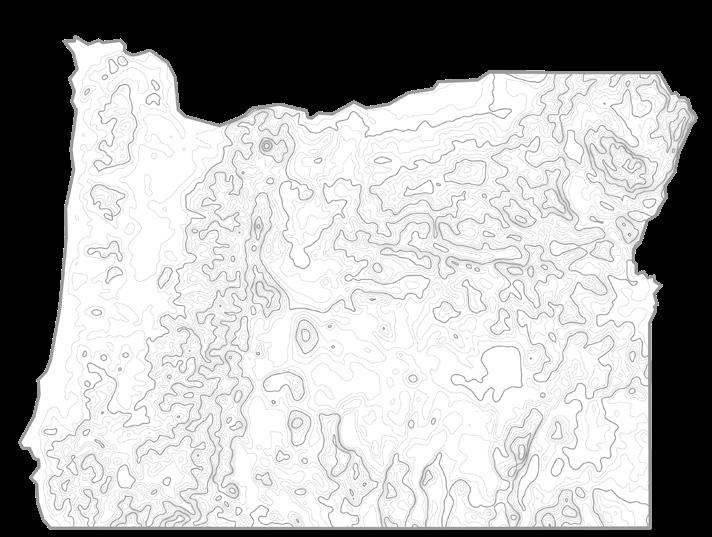
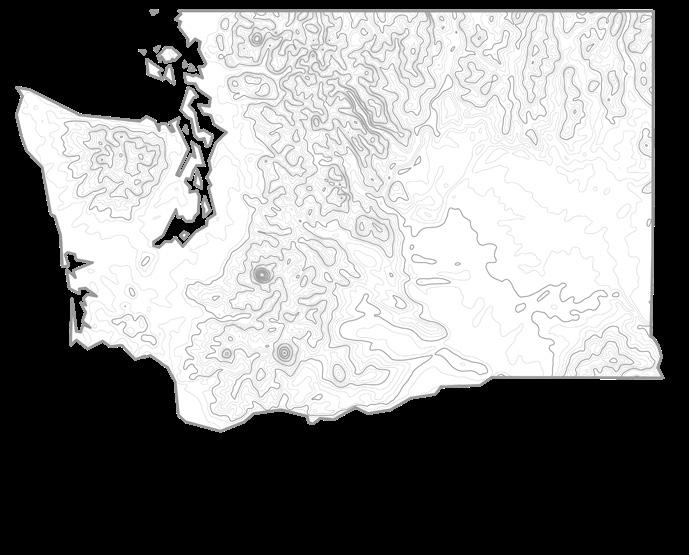

90 | WWW.REPUBLICRANCHES.COM | 888-726-2481 PACIFIC NORTHWEST PROPERTY LOCATION GUIDE 1. mountain view ranch 2. stearns land company 3. the legend of cove creek ranch 4. deming ranch 5. bar pl ranch 6. bk ranch 7. campbell crossing ranch 8. pitcher ranch 9. mckenzie hills ranch 10. flying b bar ranch 11. saddle up 12. spring creek ranch 13. cascade mountain view farm 14. moser ranch 15. crooked river rim farm 16. redhawk ranch 17. cowgirl’s dream 18. wood creek ranch 19. stillwater ranch 20. bozarth ranch 21. john day breaks pasture 22. french creek ranch 23. a cool country jewel 24. bar shoe ranch 25. terrebonne equestrian estate 26. dry canyon farm 27. cow bell ranch 28. birch creek ranch 29. pine mountain ranch 30. three sisters view ranch 31. white rock hobby farm 32. cascade view farmhouse 33. grimes farm 34. saddle up pivot 35. jordan valley ranchette 36. devil’s bluff ranch 3 12 46 7 8 9 10 14 18 19 21 22 28 35 36 29 24 16 11, 17, 34 25 15 13 26 33 23 1 32 2 27, 30 5, 20 crook, deschutes & jefferson counties 31
MOUNTAIN VIEW RANCH
in one of the most highly desired Central
Mountain View Ranch is a first-class equestrian property, cattle ranch, and hay operation. The amazing 81,600±

foot equestrian facility is complete with 117 horse stalls, two indoor arenas, an office, three large tack rooms, spectator judging areas, a studio apartment, restrooms, built-in waterers, stainless steel stall fronts, concrete alleyways, and two wash rack facilities. This ranch boosts excellent irrigated hay lands, with 311.3± acres of owned and leased water rights via two large half pivots and one full pivot.

800-238-8616 | WWW.FAYRANCHES.COM | 91
897 ± Acres | $6,999,000 | Powell Butte, OR Located
Oregon locations,
square
FEATURED PROPERTY PACIFIC NORTHWEST 1
STEARNS LAND COMPANY
1,834 ± Acres | $6,794,000


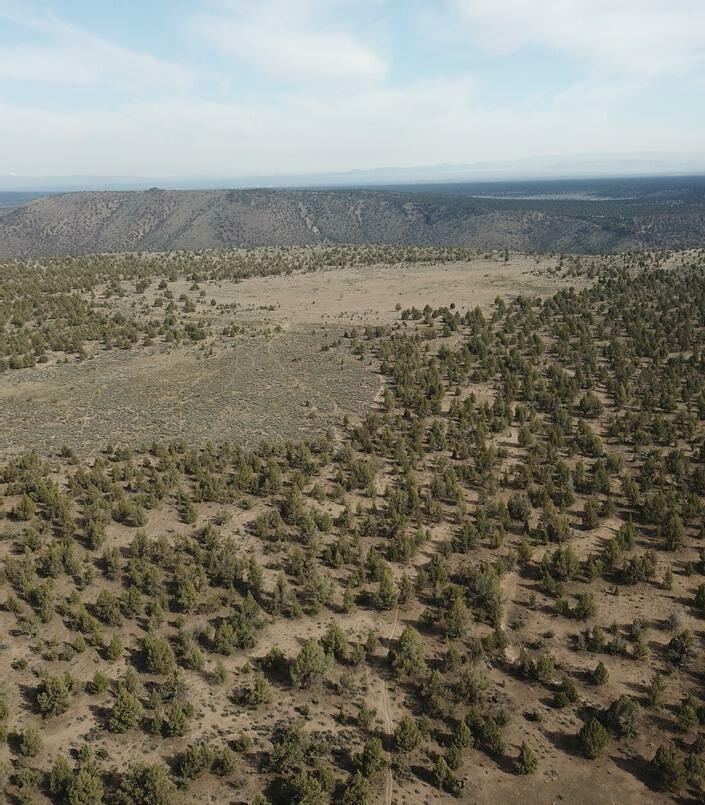

Prineville, OR
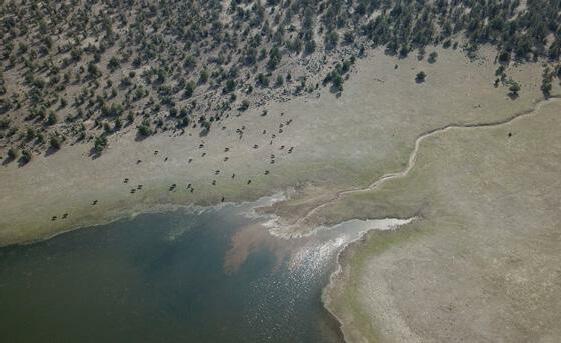
Stearns Land Company offers three tracts of land, with a total of 1,834± acres, that has been zoned residential. Located 15 minutes from downtown Prineville, 50 minutes from Bend, 35 minutes from the Redmond airport, and about two and a half hours from Portland, you can enjoy the benefits of country living without having to sacrifice the conveniences of living in a larger metropolitan area. Stearns Land Company is an excellent project choice for someone looking to build their dream home.
THE LEGEND OF COVE CREEK RANCH
1,948 ± Acres | $6,490,000
Ashland, OR
The Legend of Cove Creek Ranch is a ranch rich in history and endless beauty. This ranch offers some of the best qualities you look for in an amazing ranch: timber, live water, privacy, amazing views, incredible hunting, and fishing, plus a great location.

92 | WWW.REPUBLICRANCHES.COM | 888-726-2481
PA CI FIC NORTHWEST 2 3
DEMING RANCH
6,527 ± Acres | $6,200,000 Bly, OR

Deming Ranch has 6,527± deeded acres, 4,500± acres of United States Forest Service (USFS), and Bureau of Land Management (BLM) grazing permits for over 11,000± acres. Just outside of Bly, Oregon, along the Sprague River, the ranch offers over 1,000± acres of irrigated meadows, pastures, and hay ground. With Deming Creek running through the property and a large portion of Campbell Reservoir situated on the ranch, this live water makes this a dynamic property.
BAR PL RANCH


270 ± Acres | $5,700,000 Powell Butte, OR


Bar PL Ranch is centrally located in the highly desired farming community of Powell Butte in Central Oregon. With a combined total of 270± deeded acres on four parcels, this ranch includes 248± acres of Central Oregon Irrigation District irrigation. Located only a few minutes drive from the Redmond Airport, and a short drive to downtown Bend, Oregon, the location couldn’t be more convenient. Bar PL Ranch offers multiple income opportunities and all the necessary improvements for a farm or ranch.

800-238-8616 | WWW.FAYRANCHES.COM | 93
4 5 PACIFIC NORTHWE ST
BK RANCH
3,298 ± Acres | $5,250,000
Bly, OR



The BK Ranch offers sub-irrigated meadows, high desert range, pivots watering grass fields, large pine trees, flood irrigated pastures, a private reservoir with waterfowl, and is surrounded by beautiful mountain views. This very functional cattle operation consists of 3,298± deeded acres, 2,200± acres irrigated, a 5 bedroom/4 bath ranch home, additional housing for staff, or guests, a 50± acre reservoir, a very efficient and durable set of cattle pens, and multiple barns.
CAMPBELL CROSSING RANCH
2,328 ± Acres | $4,750,000

Kimberly, OR
Campbell Crossing Ranch boasts 1.9± miles of North Fork John Day River frontage, with 1.45± miles of Rudio Creek. The ranch also borders thousands of acres of Bureau of Land Management (BLM) lands. The high elevation provides opportunities for fishing and hunting multiple species in a lush landscape. The property features a modern, updated farmhouse features four bedrooms and two baths and a 2 car detached garage.
PITCHER RANCH
2,916 ± Acres | $4,750,000
Silver Lake, WA
Located 7± miles southwest of Silver Lake, Oregon, just a short, scenic 1-hour 23-minute drive from Bend, Oregon, Pitcher Ranch is comprised of 2,916.09± acres of riparian meadows, rimrock cliffs and outcrops, sagebrush flats, juniper-dominated uplands, aspen groves, and ponderosa pine forests. This beautiful ranch is almost entirely surrounded by Bureau of Land Management (BLM) or Forest Service lands.


94 | WWW.REPUBLICRANCHES.COM | 888-726-2481
PACIFIC NORTHWEST 6 7 8
MCKENZIE HILLS RANCH
191 ± Acres | $4,500,000 Springfield, OR
The McKenzie Hills Ranch is a premier family compound tucked away in the Willamette National Forest just a stone’s throw from the McKenzie River, located in Springfield Oregon. This estate consists of two parcels totaling 190 acres, a rock quarry, 20ft deep 1.5-acre pond, professional 5 stand trap shooting facility, 2 barn/shops, studio, and a beautiful 4000± sqft home with outdoor swimming pool.
FLYING B BAR RANCH



165 ± Acres | $4,200,000 Selma, OR
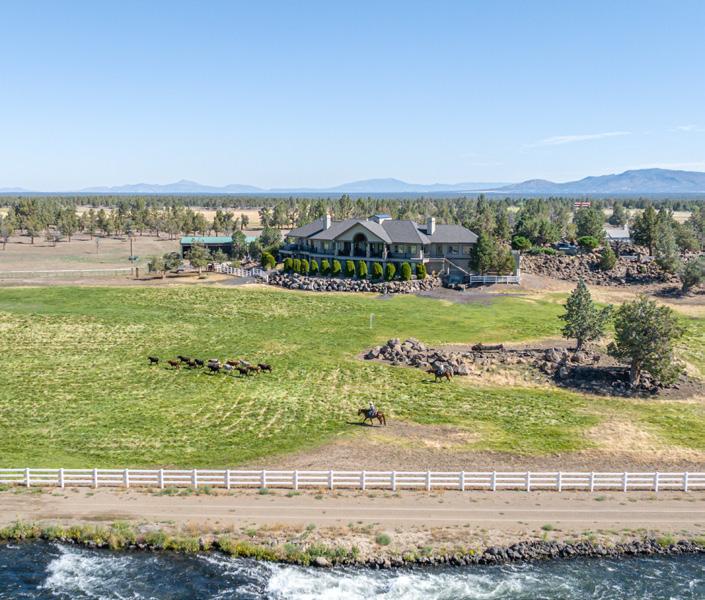


The Flying B Bar Ranch is located on the lower valley floor of McMullen Creek, in the southern part of the Siskiyou National Forest. Originally homesteaded as a 1000-acre cattle ranch in the 1800s, the transformation over the years has turned this ranch into a diverse 165± acre, lush, self-sufficient property. Flying B Bar Ranch contains three contiguous parcels with two residences and several outbuildings.
SADDLE UP
74 ± Acres | $3,750,000 Bend, OR
Saddle Up features a 5,261 square foot custom home, large indoor riding arena, outdoor riding arena, horse barn with a large updated apartment, two shops, a second buildable parcel, and Cascade Mountain views. The property includes 40.5 acres of COID irrigation, creating multiple income opportunities.
800-238-8616 | WWW.FAYRANCHES.COM | 95 PACIFIC NORTHWEST
9 10 11
SPRING CREEK RANCH
805 ± Acres | $3,250,000 Beatty, OR
This ranch is a great family-sized commercial cattle operation right in the middle of Oregon’s best cattle country. Extremely efficient, this 805± acre ranch features 550± acres of irrigation, served by two large, documented wells. Owners will enjoy a well-built 3,559± square foot, Victorian-style home with nice landscaping, overlooking gorgeous meadows, Spring Creek, and a large stocked pond.
CASCADE MOUNTAIN VIEW FARM
417 ± Acres | $2,970,000 Madras, OR

This productive 417± acre farm is adjacent to the small community of Metolius. The farm’s rich, loamy soils coupled with 392± acres of irrigation water rights delivered by the North Unit Irrigation District enables the production of all crops. Irrigation distribution is aided predominately by Linear and Center-Pivot systems. Put your finishing touches on the fantastic 17,395± square foot shop.
MOSER RANCH
1,113 ± Acres | $2,950,000 Fields, OR



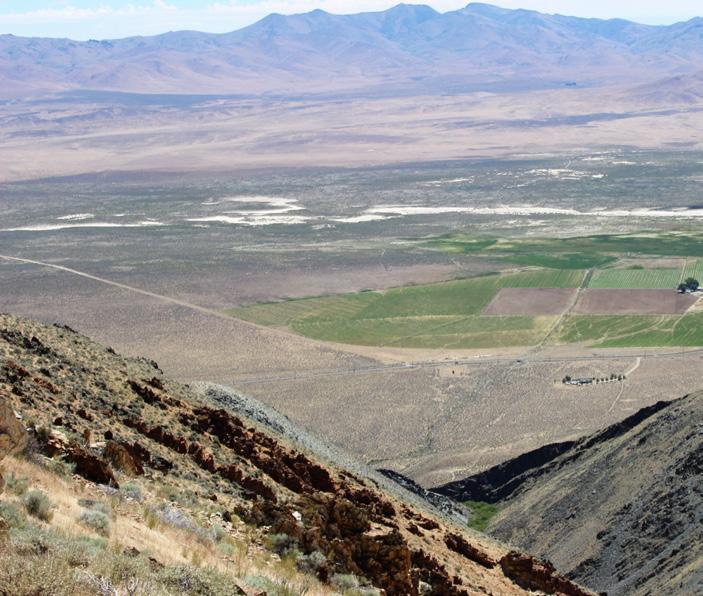
The Moser Ranch is an old-time Nevada/Oregon desert ranch that lies next to Denio, Nevada. The deeded land and the BLM permit are in both states. The irrigated ground has water rights from Denio creek for early spring and amazing wells for the remainder of the year. The Cow Lakes shares allow for another 200 plus cows and the ranch can put up enough hay for 450+ cows.

96 | WWW.REPUBLICRANCHES.COM | 888-726-2481 PACIFIC NORTHWEST
12 13 14
CROOKED RIVER RIM FARM
456 ± Acres | $2,800,000 Culver, OR



Step right into established agricultural production while enjoying private views of a Central Oregon treasure. The sun rises over gravity-fed irrigated farmland, planted in a multitude of crops, often showcasing muley bucks wading through the hay fields.

REDHAWK RANCH
53 ± Acres | $2,795,000 Bend, OR
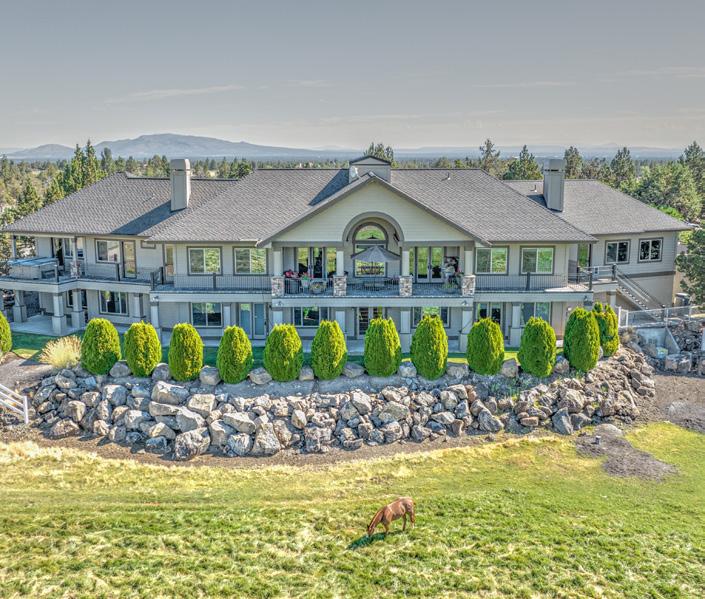
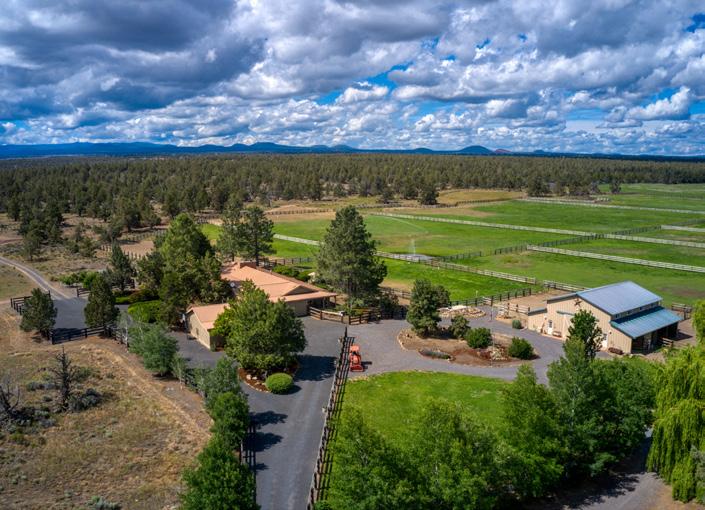
The Redhawk Ranch features lush, irrigated meadows, a house and horse barn, a riding arena, and mountain view. With irrigated pastures, an irrigated circle for hay production, and access to adjacent Bureau of Land Management (BLM) lands, it opens to many acres of public land. Red Hawk Ranch offers a 3,550 square foot custombuilt home with a horse barn, bunk house, and riding arena.
COWGIRL’S DREAM
37 ± Acres | $2,750,000 Bend, OR
This property features a 5,261 square feet home with four bedrooms, 3.5 bathrooms, a wine cellar, gym, bar room, and more. The equestrian facilities include an indoor arena, a 96’ x 200’ outdoor arena. In addition, the property includes two shops, plenty of hay storage, and 8± acres of COID irrigation. The home with horse facilities sits on a 34± acre parcel that can be sold separately from the pivot, which is also 34± acres and can be purchased separately.
800-238-8616 | WWW.FAYRANCHES.COM | 97 PACIFIC NORTHWEST
15 16 17
WOOD CREEK RANCH
1,328 ± Acres | $2,640,000
Hereford, OR
Located in a quiet, traditional ranching community, this is a compact, productive ranch with stored irrigation water from the Unity Reservoir. Wild meadows and alfalfa are irrigated by gated pipe, flood and wheel lines. A forest permit for 185 cows is available from June to October 15.

STILLWATER RANCH
79 ± Acres | $2,458,000 Goldendale, WA
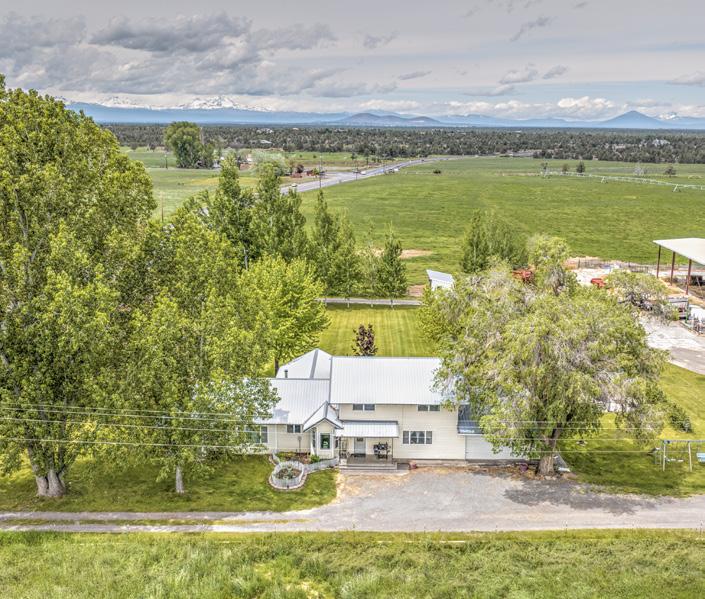

Stillwater Ranch consists of four separate lots, of 79.57± acres with the Little Klickitat River running through the entire property width. The spectacular 6,934 square foot lodge is two levels and is a custom-designed, large, beamed resort-style building. In addition to the original homestead that remains on the property, there are also multiple outbuildings.
BOZARTH RANCH
114 ± Acres | $2,400,000



Powell Butte, OR
Bozarth Ranch is an amazing ranch/farm that features a nice 3,204± square foot home with five bedrooms and three bathrooms. This 114± acre property, located in Central Oregon, includes 108± acres of irrigation through the Central Oregon Irrigation District. This farm/ranch is already set up as an excellent hay and cattle ranch and is ready for a new operator.
98 | WWW.REPUBLICRANCHES.COM | 888-726-2481 PACIFIC NORTHWEST
18 19 20
JOHN DAY BREAKS PASTURE




4,354 ± Acres | $2,375,000
Antelope, OR
This property has 4,354.69± contiguous, deeded acres, plus 557± acres of BLM lands fenced-in. Enjoy tremendous views of the John Day River Canyon transected by five draws that provide seasonal drainage, and springs provide good water and cover for livestock and wildlife alike.
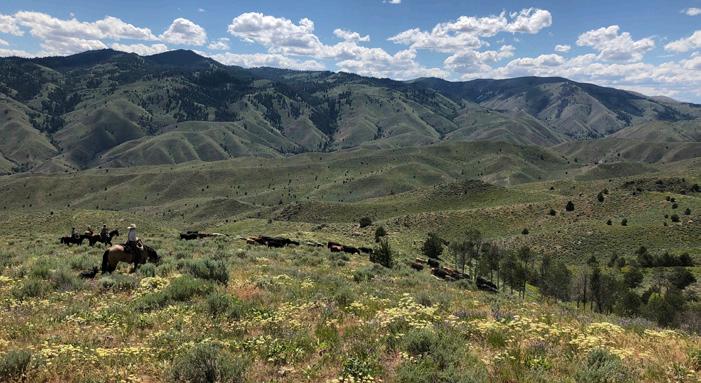
FRENCH CREEK RANCH
3,590 ± Acres | $2,350,000
Durkee, OR
French Creek Ranch has ideal summer grazing with 3,590± acres of deeded land along with additional BLM leased acres; the ranch will support over 200 pair of cattle. A topography contains northern and southern slopes that include drainages of aspen and juniper pine with good water throughout the range.
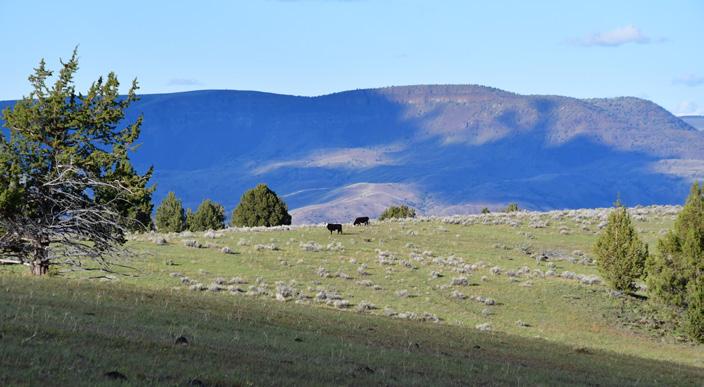
A COOL COUNTRY JEWEL
31 ± Acres | $2,100,000

Prineville, OR
This ranch has an amazing and convenient location that offers a quiet country setting yet is located just minutes from downtown Prineville, and less than an hour to Bend, Oregon. The nearly new 3,491± square foot, single-level custom home, built in 2018, overlooks the Crooked River Valley, farm fields, and wide open pastures below.

BAR SHOE RANCH
39 ± Acres | $2,100,000
Bend, OR
This Central Oregon small ranch and horse property, located just east of downtown Bend, Oregon, is an outstanding country estate. Bar Shoe Ranch currently serves as an excellent horse property and small hay operation, but it is also the perfect setting for any horse lover, novice farmer, or small cattle operator.
800-238-8616 | WWW.FAYRANCHES.COM | 99
PACIFIC NORTHWEST 22 23 24 21
TERREBONNE EQUESTRIAN ESTATE
84 ± Acres | $1,999,000
Terrebonne, OR
This property consists of a 3000± square foot custombuilt house overlooking the Crooked River Grasslands and Cascade Mountains, with a top-notch horse facility. 84.14± acres bordering 1000± acres of BLM land are available to enjoy.
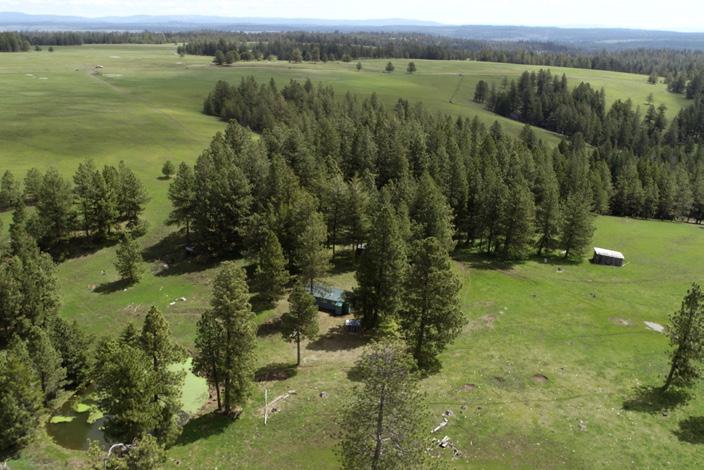
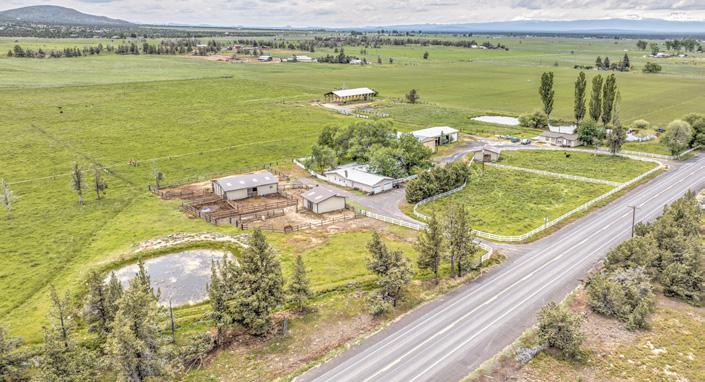


DRY CANYON FARM




805 ± Acres | $1,900,000
Madras, OR
Sitting above the quiet farming town of Madras, Oregon is Dry Canyon Farm. At the foot of the Cascades, this canvas that has yet to be painted but still offers 805.92± deeded acres 232.9± acres of North Unit Irrigation, two half pivots, Cascade Mountain views bordering Dry Canton and public lands
COW BELL RANCH
77 ± Acres | $1,900,000
Powell Butte, OR
Cow Bell Ranch offers 77.6± acres of excellent farm/ranch land, with two homes, 66.98± acres of Central Oregon Irrigation District (COID) water, and all the necessary improvements to run an excellent small cattle or hay operation. This small ranch has a lot to offer a new owner with rental income opportunities and excellent hay production.
BIRCH CREEK RANCH
1,892 ± Acres | $1,850,000
Pilot Rock, OR
This beautiful Northeastern Oregon ranch offers everything from vast views of the Wallowa Mountains to hunting deer and elk and exceptional summer grazing for cattle. The Birch Creek Ranch consists of 1,892± deeded acres and is located south of the town of Pilot Rock, Oregon. A topography mix of south slope and north slope timber offers an exceptional balance of grasses for optimal cattle conditions.
| 888-726-2481
100 | WWW.REPUBLICRANCHES.COM
PACIFIC NORTHWEST 26 27 28 25
PINE MOUNTAIN RANCH
440 ± Acres | $1,795,000 Bend, OR

Pine Mountain Ranch is 440± acres of deeded private land that adjoins thousands of acres of public land with private access to Pine Mountain. Located 30 minutes outside of Bend, this great getaway ranch can satisfy a number of uses. Initially set up for horses and with the equestrian enthusiast in mind, the 10,000± square foot indoor arena also includes an apartment.
THREE SISTERS VIEW RANCH
77 ± Acres | $1,700,000




Powell Butte, OR
This is a well-managed 77.9± acre farm/ranch with 73± of irrigation through the Central Oregon Irrigation District. The stick-built home also includes a detached garage and a separate shop. It is perimeter fenced and cross-fenced for easy pasture rotations.

WHITE ROCK HOBBY FARM
8 ± Acres | $1,499,000 Bend, OR
The perfect small hobby farm with huge Cascade Mountain views and all the amenities to enjoy Central Oregon country living. Of the 8.5 ± acres, 4.4± acres are irrigated with TUID water rights and currently in hay production.
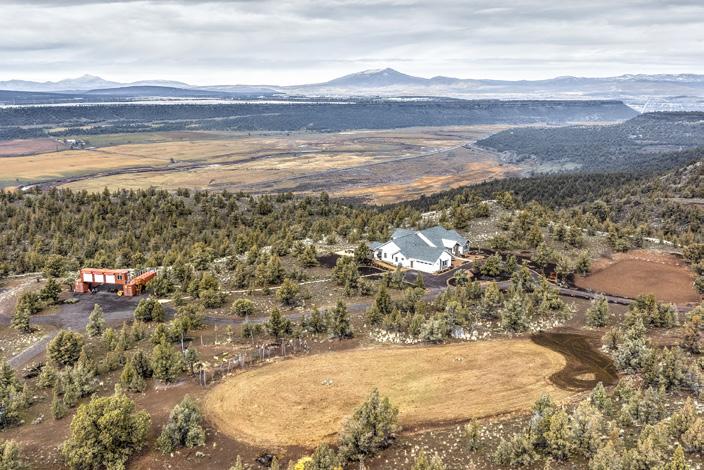

CASCADE VIEW FARMHOUSE
60 ± Acres | $1,325,000
Prineville, OR
This custom-built farmhouse provides gorgeous views of the Cascade Mountains, the Crooked River Valley, Stearns Butte, and surrounding landscapes. The 3,729± square foot open floorplan features timber frame accents and beams, two master suites on opposite ends of the house, two additional bedrooms, a bar, and more.
800-238-8616 | WWW.FAYRANCHES.COM | 101
PACIFIC NORTHWEST29 30 31 32
GRIMES FARM
77 ± Acres | $1,295,000
Prineville, OR
This 77± acre small farm features a custom-built 2,040± square foot home, and a 1,520± square foot shop. The Grimes Farm is almost completely irrigated, with 77± acres of irrigation. Currently, there is a stand of alfalfa in one field and historically planted teff grass in the other field that is ready for the new owner to choose the next crop.
SADDLE UP PIVOT
37 ± Acres | $1,250,000
Bend, OR
This buildable parcel in East Bend is the perfect blank canvas to build. The power and well are already in place. Additional improvements include a three-tower pivot and a 12,800 square foot hay shed. This property is located just a few minutes outside of Bend and near everything Central Oregon.
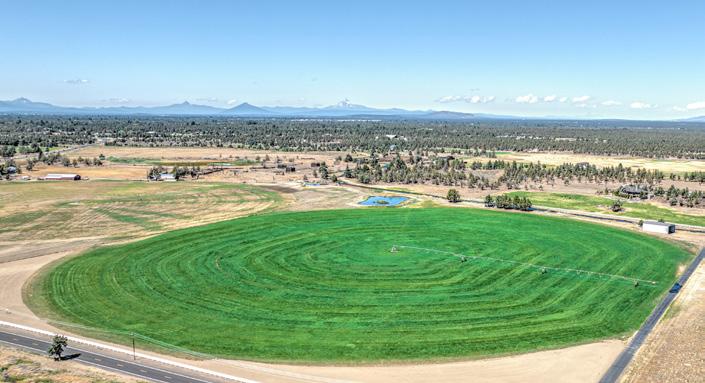

JORDAN VALLEY RANCHETTE
30 ± Acres | $1,200,000

Jordan Valley, OR
This ranchette showcases top-of-the-hill views overlooking the valley floor and the surrounding mountain ranges. The custom-built southwestern ranch-style home sits on 30± acres and was built for entertainment. The southern 22± acre parcel remains unimproved except for perimeter fencing.

DEVIL’S BLUFF RANCH
64 ± Acres | $925,000
Pe Ell, WA
Nestled amid the rolling hills and valleys of Southwest Washington, Devil’s Bluff Ranch is located just outside the city limits of Pe Ell in Lewis County. The property consists of 64± acres of a combination of wooded areas and open spaces and 2,200± feet of high and low bank Chehalis River frontage. This unique property offers privacy and open spaces ideal for those desiring a self-sufficient lifestyle.
888-726-2481




102 | WWW.REPUBLICRANCHES.COM |
PACIFIC NORTHWEST
34 35 36 33
ALASKA


PROPERTY

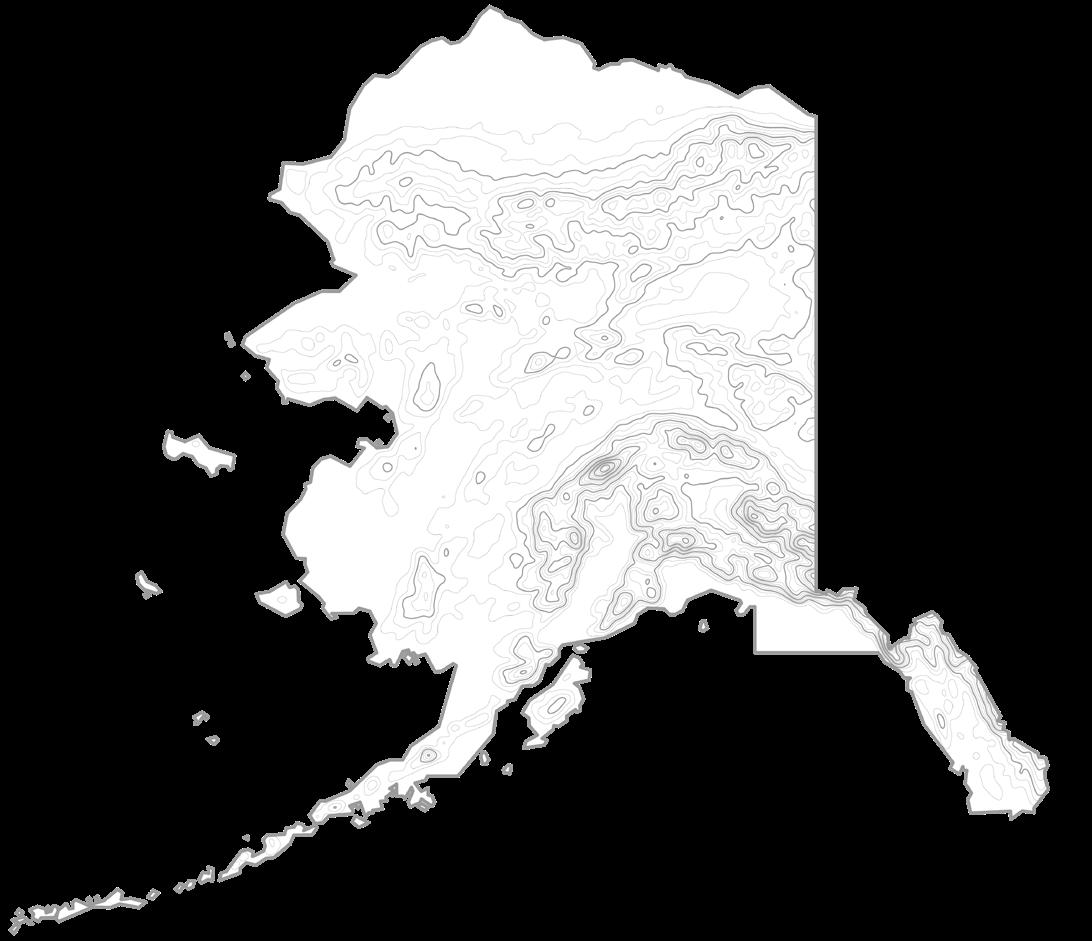
104 | WWW.REPUBLICRANCHES.COM | 888-726-2481
LOCATION 5. mcdougall lodge llc 6. high vista 7. wood river lodge 8. aniak 1 4 2 3 5 6 7 8 ALASKA
FEATURED PROPERTY

PASSAGE ISLAND

800-238-8616 | WWW.FAYRANCHES.COM | 105
44 ± Acres | $16,000,000 | Seldovia, AK Located 22 nautical miles southwest of the Homer Spit, Passage Island measures just over 44 acres with nearly 7,000 feet of water frontage. Reachable by float plane, boat, or helicopter at low tide, this private island offers a one-of-a-kind Alaska landowner experience. Located in the protected inlet of Port Graham, Passage Island is surrounded by miles and miles of beaches and pristine blue water.
ALASKA 1
SCHULTZ FARMS
5,592


Acres
Junction,
The Schultz Farms property is located just east of Delta Junction, where the base of the operation is situated on a hard surface road with 3-phase power available. Updated double-wall fuel storage was added last year. The perimeter is fenced, and field roads have been added to help with moving fully loaded trucks in and out. The property has a well-equipped heated shop with office space, a metal Quonset building, an insulated shop building, and more.

ALASKA’S GOLD CREEK LODGE
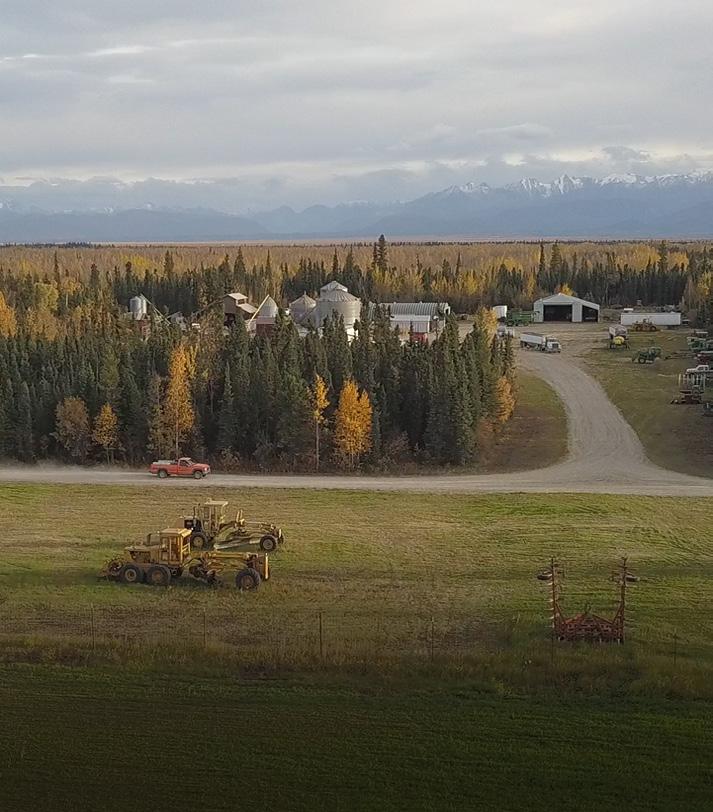
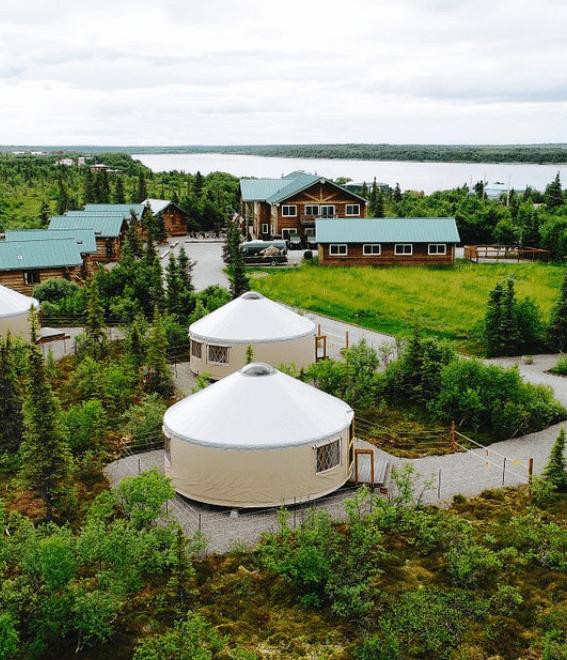

16
Acres
Salmon,
Alaska’s Gold Creek Lodge is a world-class eco-adventure and fishing lodge situated on the banks of the worldfamous Naknek River. Just outside of King Salmon, Alaska, the lodge operates seasonally from May 1 to October 1. The lodge is also the entrance to Katmai National Park and is located on the southwestern peninsula approximately 280 miles from Anchorage, within the Bristol Bay watershed.
106 | WWW.REPUBLICRANCHES.COM | 888-726-2481
±
| $5,900,000 King
AK
±
| $6,750,000 Delta
AK
ALASKA 2 3
FIDALGO BAY


229 ± Acres | $5,885,300 Valdez, AK
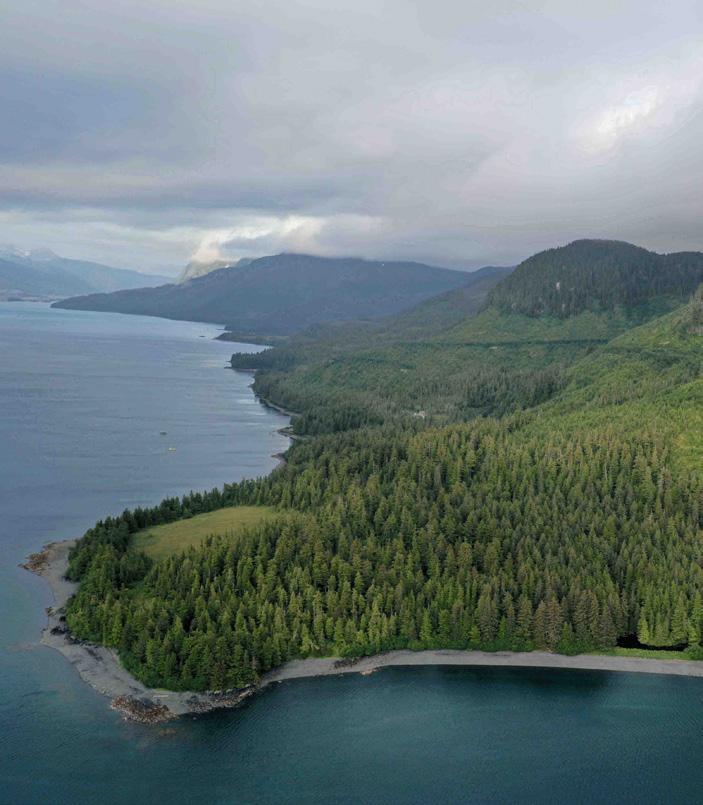
Enjoy this unique property on one of the largest parcels of privately owned land on Prince William Sound. Accessible by boat or aircraft the area caters to adventure seekers, anglers, hunters, and admirers of the deep wilderness. Surrounded by the Chugach National Forest, one can enjoy the tranquility, serenity, and abundance that Fidalgo Bay offers.
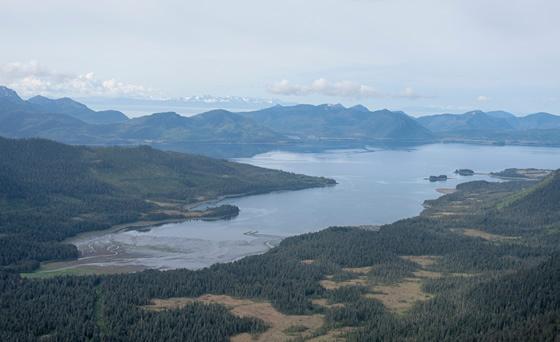
MCDOUGALL LODGE LLC
50 ± Acres | $2,755,000 Wasilla, AK

McDougall Lodge is currently run/operated as a first-class overnight remote sport-fishing lodge facility, specializing in salmon and trout fishing trips. The total building area is approximately 10,356 square feet, with a capacity of 28 guests and 16 staff/crew. Located near Mile 35 of the Yentna River, McDougall Lodge is approximately one mile downstream from the mouth of Lake Creek.

800-238-8616 | WWW.FAYRANCHES.COM | 107
ALASKA 4 5
HIGH VISTA
160 ± Acres | $2,750,000 Nikiski, AK
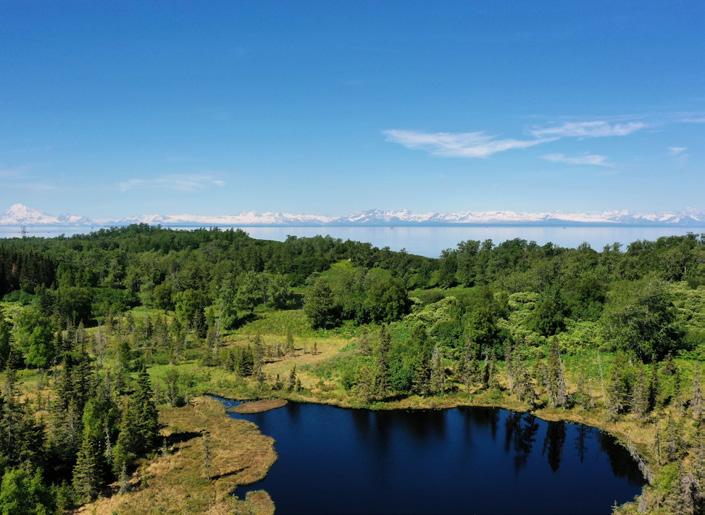
High Vista is 160± acres of large tract land located just outside of Nikiski, Alaska. Perched above Cook Inlet it has expansive views overlooking the Inlet, snowcapped volcanoes, and miles of gravel and boulder beaches. It has a diverse landscape of deciduous trees, lakes, ponds, marsh, and moose friendly meadows, with a natural tapestry of flora and elderberry.
WOOD RIVER LODGE
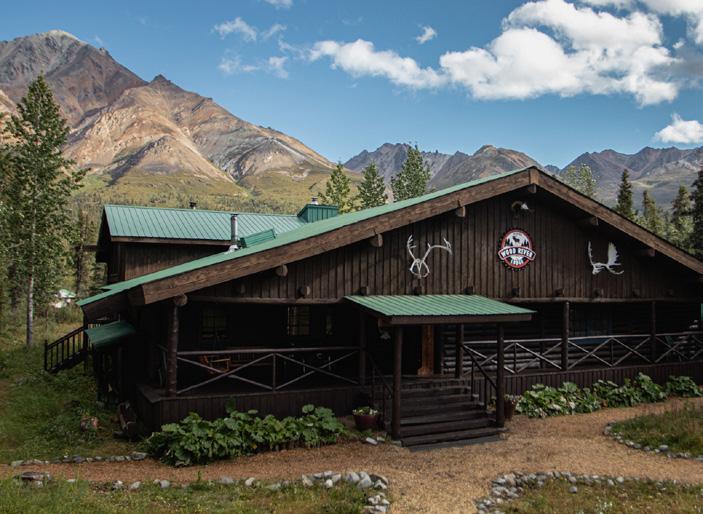
20 ± Acres | $2,500,000 Healy, AK



Dating back to 1898, Wood River Lodge has a rich history and features over 30 structures. Buildings include the main lodge, multiple cabins, game room, sauna, lounge, movie theater, and more. Nestled between Mt. Anderson and the Wood River, the lodge is approximately 28 air miles east of Denali National park and accessible by a 33-mile trail or bush plane.
ANIAK
125 ± Acres | $1,100,000 Aniak, AK
Located just outside Aniak this 125± acre property is at the confluence of the Kuskokwim and Aniak River. Surrounded by approximately a mile and a half of water frontage the property is minutes from the Aniak airport that offers daily flights to Anchorage. The property is virtually flat and has a diverse landscape of elderberry, blueberries, fireweed, spruce, and birch trees.
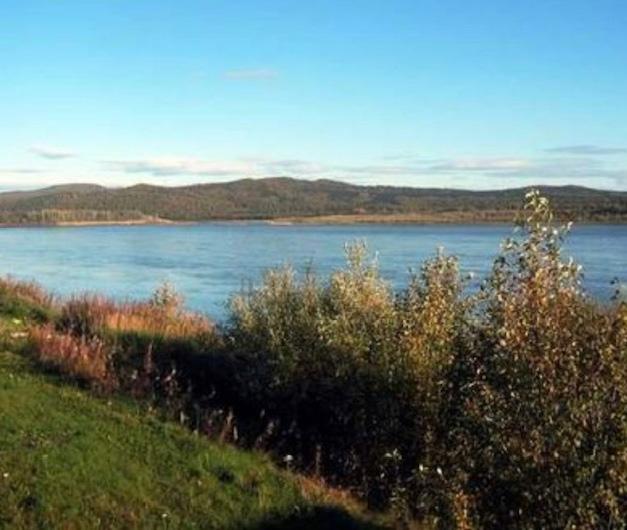
108 | WWW.REPUBLICRANCHES.COM | 888-726-2481 ALASKA
6 7 8
COLORADO
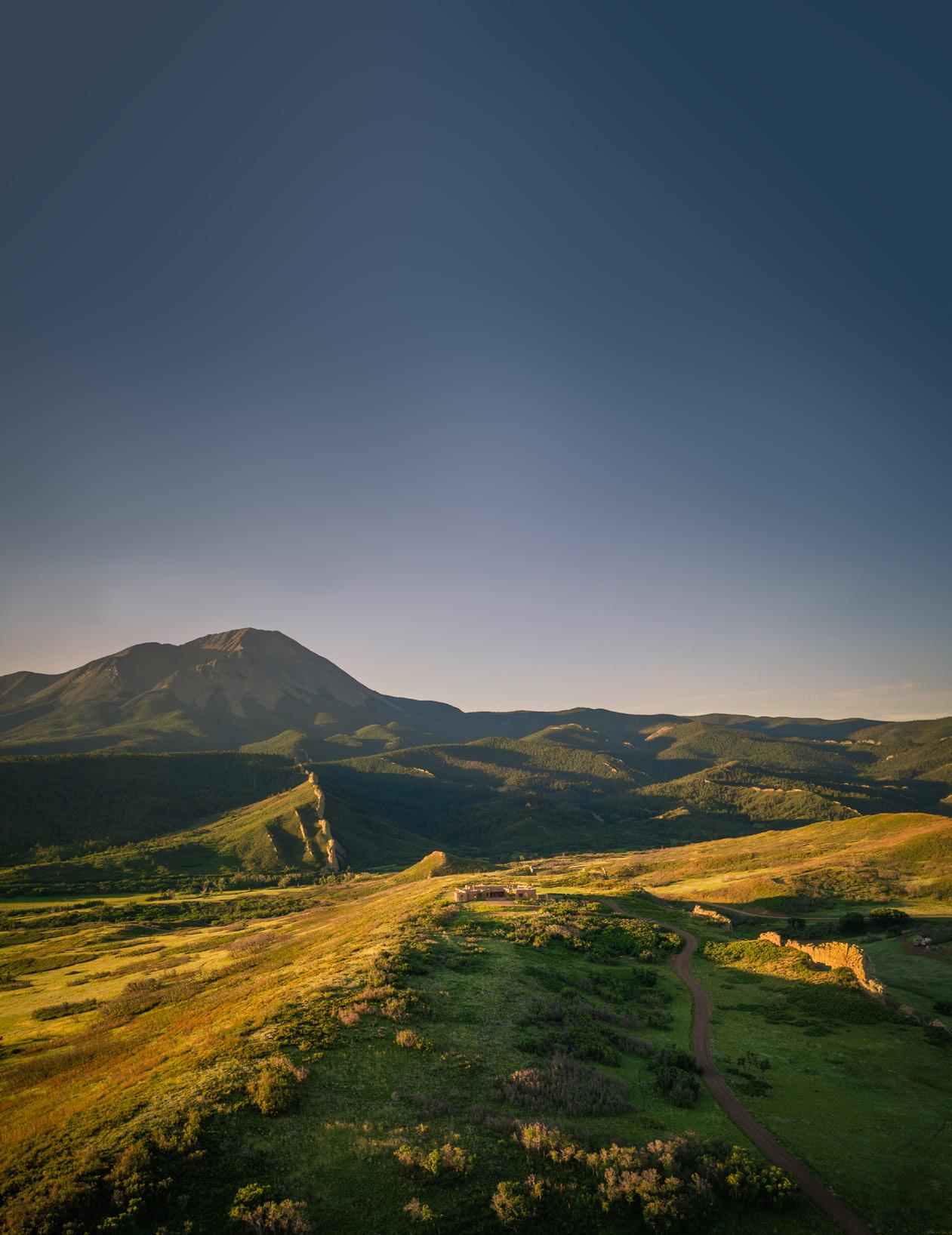


110 | WWW.REPUBLICRANCHES.COM | 888-726-2481 COLORADO PROPERTY LOCATION GUIDE 1. ragged mountain ranch 2. brumley aspen waters 3. goble creek ranch 4. four shooting stars ranch 5. the river ranch 6. bear creek ranch 7. ventana al cielo 8. culebra creek angler’s retreat 9. south valley meadows 10. klein road ranch 11. rio grande del norte ranch 12. stone creek ranch 13. cherry street riverside 9 3 8 6 5 4 1 2 13 7 12 11 10
FEATURED PROPERTY

RAGGED MOUNTAIN RANCH
Mountain Ranch is the quintessential Colorado mountain ranch located on McClure. With extensive National Forest border, water rights, seasonal creeks, irrigated hay fields, dark timber, aspen groves, several elegantly restored ranch cabins, and proximity to world-class resorts, this is a rare property. Featuring stunning views of Ragged Mountain and Chair Mountain, the buildings and property are defined by character and history. With exceptional hunting on the property, the owners can apply for tags through the Landowner Preference Program. There is also an option to buy 2,900± acres in the heart of the property, known as ‘Ragged Mountain East’.
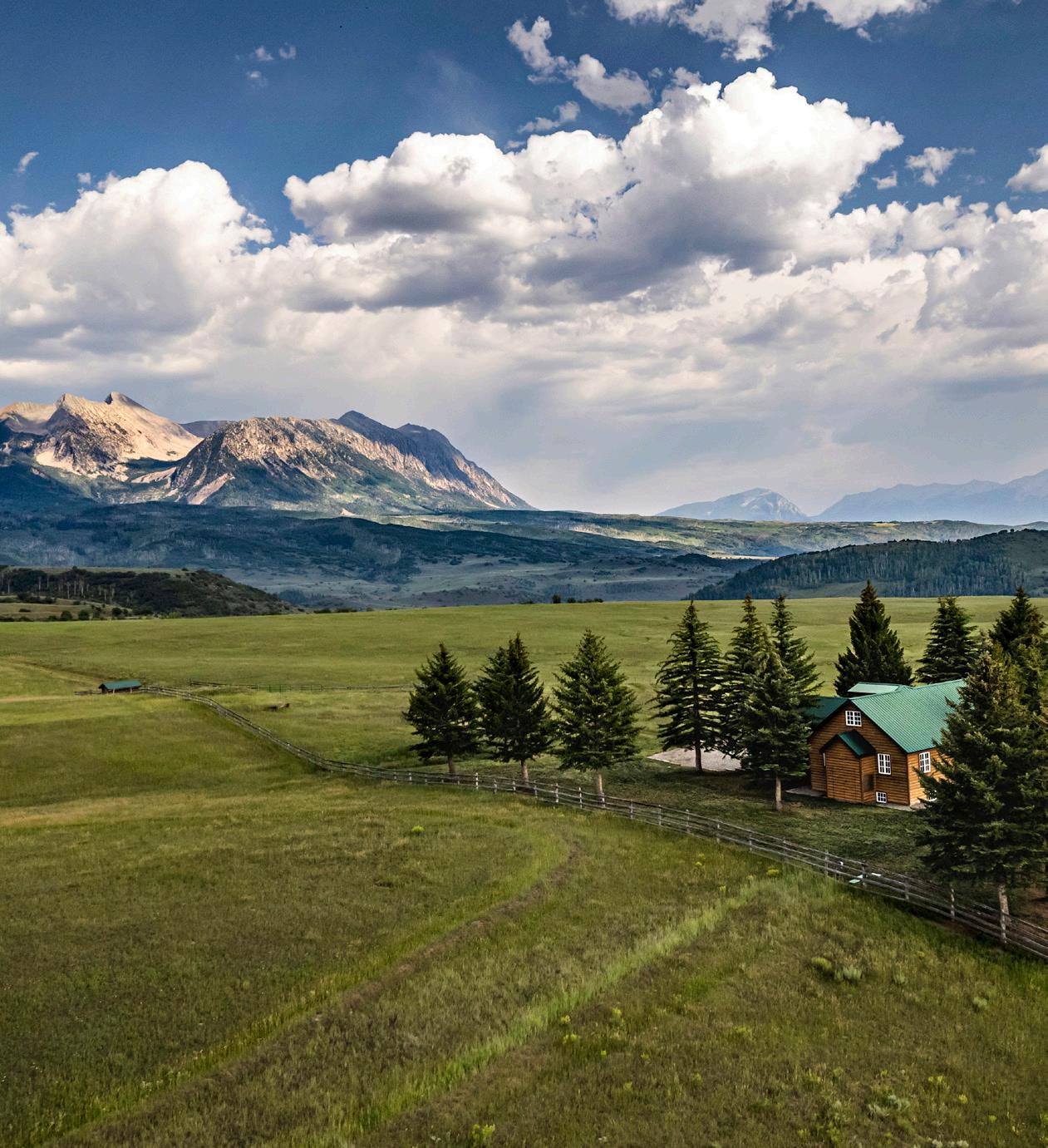
800-238-8616 | WWW.FAYRANCHES.COM | 111
6,483 ± Acres | $45,389,000 | Somerset, CO Ragged
COLORADO 1
BRUMLEY ASPEN WATERS
4,200 ± Acres | $14,425,000


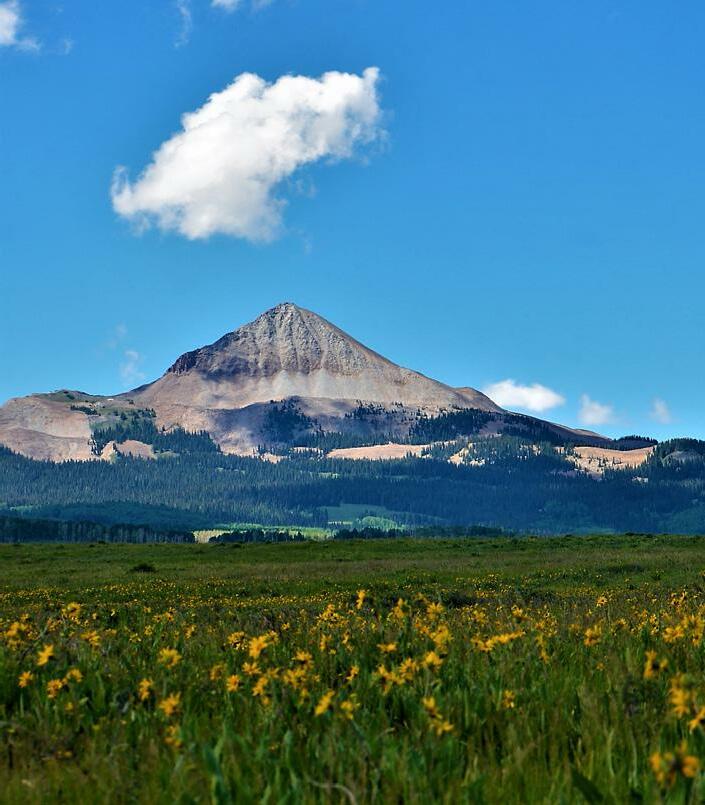

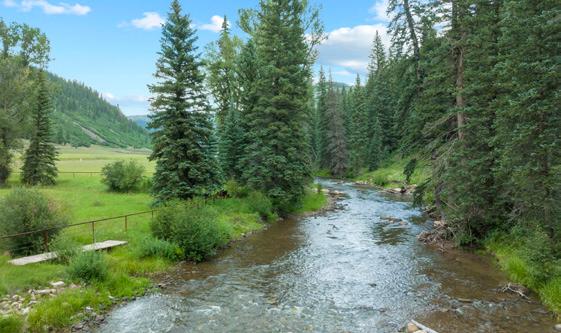
Dunton, CO
The meadows of Brumley Aspen Waters Ranch rise gently from the shores of Groundhog Reservoir to dense aspen and dark timber forests, enjoying a 3.5-mile boundary with thousands of acres of San Juan National Forest. The abundance of water, massive aspen groves, dark timber, plentiful elk herds, quality grazing, and beautiful scenic views make the ranch unique. The ranch backdrop features two iconic Colorado mountains, Lone Cone Peak and Groundhog Mountain, both over 12,000 feet in elevation.
GOBLE CREEK RANCH

64 ± Acres | $6,900,000
Rico, CO
Goble Creek Ranch is located 25 minutes from the charming southwestern Colorado town of Dolores, near the enchanting Four Corners area, and has everything one could want in a Colorado mountain river ranch. The ranch boasts approximately four-tenths of a mile of both sides of the West Fork of the Dolores River.
112 | WWW.REPUBLICRANCHES.COM | 888-726-2481
COLORADO 2 3
FOUR SHOOTING STARS RANCH
653 ± Acres | $6,395,000
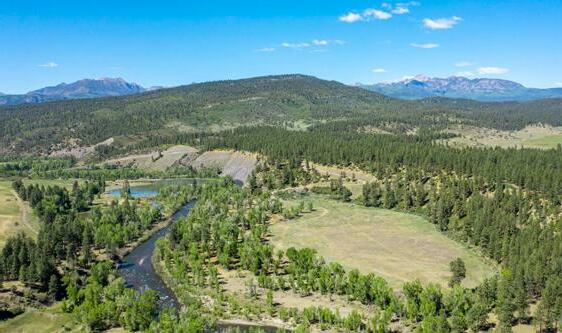

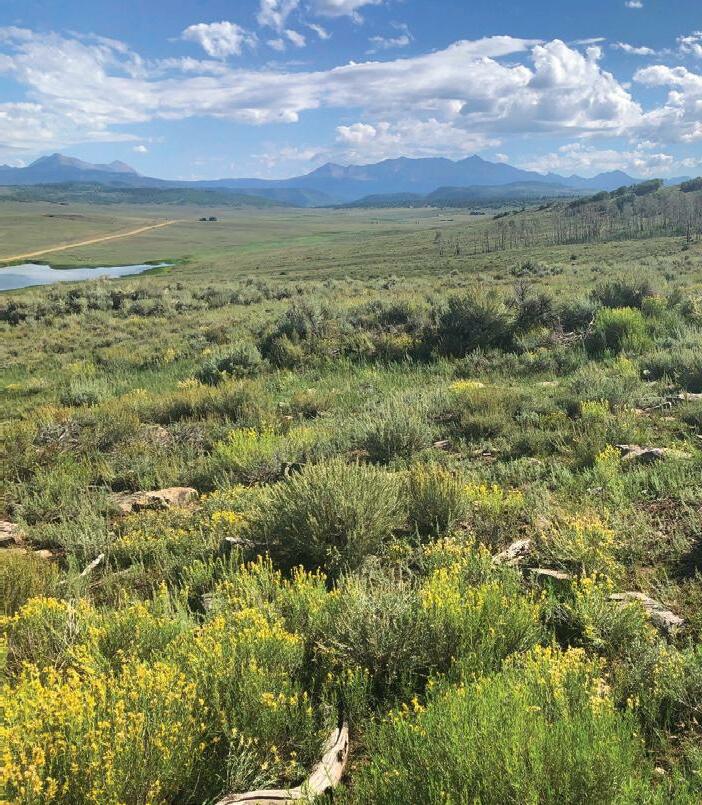
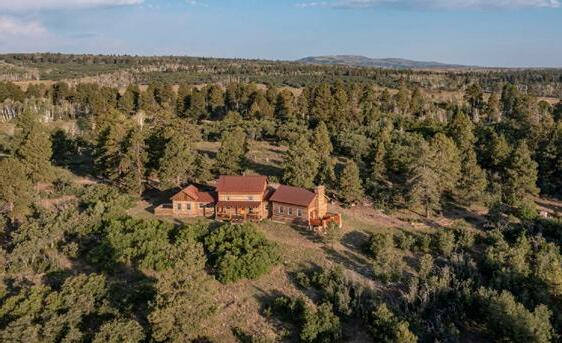
Placerville, CO
Four Shooting Stars Ranch spreads over 653± acres. It includes a 5-1/2± acre spring-fed pond and an off-grid, unique oversized custom cabin built with historic timbers from a bygone West Virginian church and an antique country cabin. The land is varied, with rolling terrain, large grazing pastures, smaller meadows surrounded by aspens, ponderosa pines, gamble oaks, all distributed in densely forested areas.
THE RIVER RANCH
116 ± Acres | $5,900,000


Pagosa Springs, CO
Dropping down from the Continental Divide along the south side of Colorado’s Wolf Creek Pass, you will find The River Ranch of Pagosa Springs, Colorado. Nestled amongst the rugged and expansive landscape of the South San Juan Wilderness Area, The River Ranch offers an angler’s paradise with the convenience and excitement of a refreshingly authentic mountain town.
800-238-8616 | WWW.FAYRANCHES.COM | 113
COLORADO 4 5
BEAR CREEK RANCH
2,100 ± Acres | $3,979,000



Walsenburg, CO
Bear Creek Ranch in Southern Colorado is 2,100± acres of incredible terrain and stunning views. Bear Creek flows seasonally through the ranch, and vegetation zones vary from creek bottom cottonwoods, classic piñon juniper forest, and towering ponderosa. Perhaps the biggest secret about the ranch is its prolific wildlife and the exceptional hunting opportunities that it affords.
VENTANA AL CIELO
38 ± Acres | $3,490,000
La Veta, CO
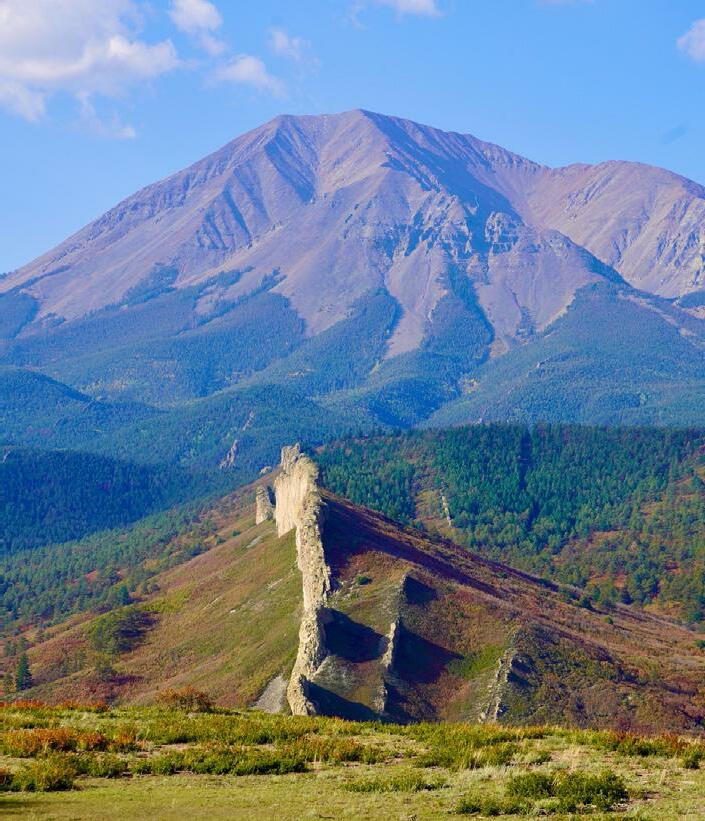
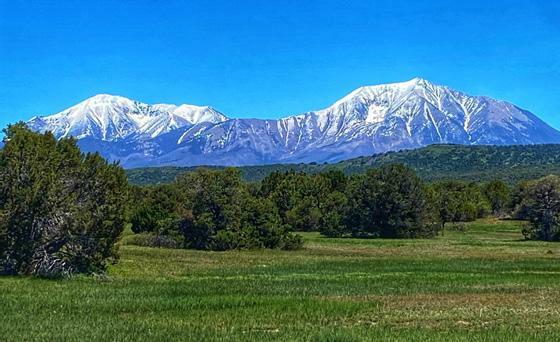
Ventana al Cielo, with its name inspired by the many artfully placed windows and extraordinary mountain vistas, certainly could be your “Window to Heaven”. From every window of this Cucharas River Valley custom mountain home, you will experience phenomenal and extraordinary vistas and expansive views of the Spanish Peaks, the Sangre de Cristo Range, and the unique and dramatic dike formations.
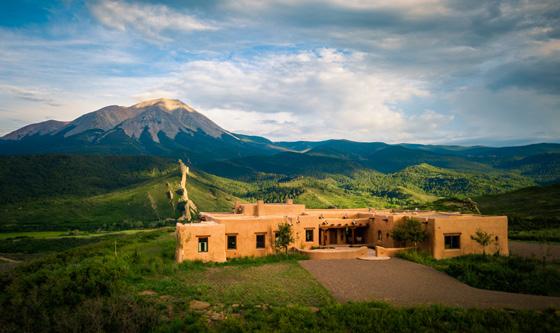
114 | WWW.REPUBLICRANCHES.COM | 888-726-2481
COLORADO 6 7
CULEBRA CREEK ANGLER’S RETREAT
133 ± Acres | $2,500,000



San Luis, CO
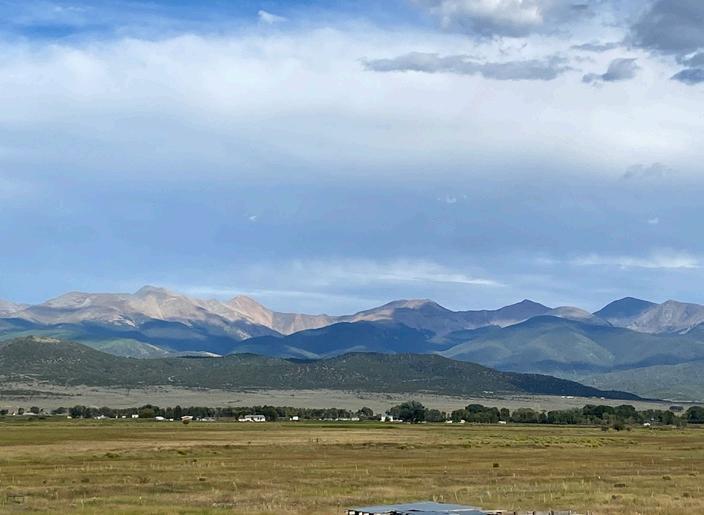
Nestled not far from the base of Culebra Peak, the only privately owned 14,000+ foot mountain in Colorado, lies an exceptional fishing and recreational property: Culebra Creek Angler’s Retreat. The property has been managed expertly for quality fly fishing. The retreat comes with an income-producing lease and a membership in the Solitary Angler Fishing Club, allowing for world-class fly fishing on miles of exceptional streams and rivers.
SOUTH VALLEY MEADOWS
14 ± Acres | $2,450,000
Steamboat Springs, CO
South Valley Meadows is located in the coveted South Valley area just south of Steamboat Springs, Colorado, and only 3 miles south from the city limits. This ideal 15± acre location includes a meticulously maintained threebedroom home and five outbuildings dedicated to RV storage, equipment shop, large storage facility, and private party barn with bar, pool table, covered porch, and more.

KLEIN ROAD RANCH
40 ± Acres | $2,385,000
Steamboat Springs, CO
Klein Road Ranch is located 6.5 miles from downtown Steamboat Springs and has meadows, mountain views, and end-of-road privacy. A thoughtfully planned ranch on 40± acres with a 5-bedroom, 4-bathroom farmhouse overlook the entire acreage and backdrop of mountain landscapes. The ranch perimeter is fenced and cross-fenced for livestock and includes a riding/roping arena with pens and supplied water.

800-238-8616 | WWW.FAYRANCHES.COM | 115
COLORADO
8 9 10
RIO GRANDE DEL NORTE RANCH

1,085 ± Acres | $2,046,000

Jaroso, CO
Rio Grande Del Norte is 1,085± deeded acres containing 1.3± miles of the Rio Grande River. It is a gorgeous canyon setting with elevations at 7,750ft dropping down to 7,400ft in the river bottom. A private trailhead provides rare river access into the gorge. Wild yet accessible, the ranch offers unique fishing for large brown trout and northern pike.
STONE CREEK RANCH
648 ± Acres | $1,100,000



Pueblo, CO
Comprised of 648± acres, Stone Creek Ranch offers spectacular views of Pikes Peak and the Wet Mountain Range. This ranch provides convenience, space, and privacy. Seasonal runoff fills the pools in the rocky floor of Rush Creek, creating a natural habitat for birds and a source of water for the mule deer and antelope that reside in the area, as well as the elk that pass through.
CHERRY STREET RIVERSIDE
1 ± Acres | $997,500

La Veta, CO
Cherry Street Riverside has exceptional privacy, two homes, an art studio, insulated outbuildings, 1.7± acres, a high-fenced yard, and much more. The property features a custom 1,750 square foot, two-bedroom/two-bathroom home on the river, a second updated two-bedroom/twobathroom home, and a beautiful historic dairy barn that has been converted to a heated art studio.
116 | WWW.REPUBLICRANCHES.COM | 888-726-2481
COLORADO 11 12 13
SOUTHWEST



PROPERTY
GUIDE


118 | WWW.REPUBLICRANCHES.COM | 888-726-2481 SOUTHWEST 8. mesa springs ranch 9. the eason ranch 10. HIPICO of santa fe 11. the ranch at angel fire 12. founders ranch 13. duncan ranch 1 5 2 3 4 6 7 8 10 13 9 11 12 1. lucky 7 ranch 2. uncle bill’s farm & ranch 3. mountain view farm 4. los trigos ranch 5. smith creek ranch 6. chupadera ranch 7. rancho san ignacio
LOCATION
LUCKY 7 RANCH

Headquartered in the Northern reaches of the Great Basin near the border town of McDermitt, Nevada, is the Lucky 7 Ranch. A fully functioning ranch that boasts all the efficiencies expected of a high desert outfit spanning over nearly a quarter a million acres with elevations ranging from 4,400 ft at the meadows of the headquarters to 8,000 ft at the high points of the summer country. Lucky 7 is a cattle ranch, to the truest form. With the capacity to run 3,360 AUs± efficiently, Lucky 7 transforms its native grass into a high-quality protein through its reputation calf crop year after year.

800-238-8616 | WWW.FAYRANCHES.COM | 119
11,920 ± Acres | $26,800,000 | McDermitt, NV
FEATURED PROPERTY SOUTHWEST 1
UNCLE BILL’S FARM & RANCH
20,564 ± Acres | $23,527,000
Las Nutrias, NM
Uncle Bill’s Farm and Ranch includes 37,941 acres of farming and grazing lands and 533 annual consumptive acre-feet of pre-1907 water rights. The 297 acres of farm mainly cultivated ground, are located in Las Nutrias off the Rio Grande River.
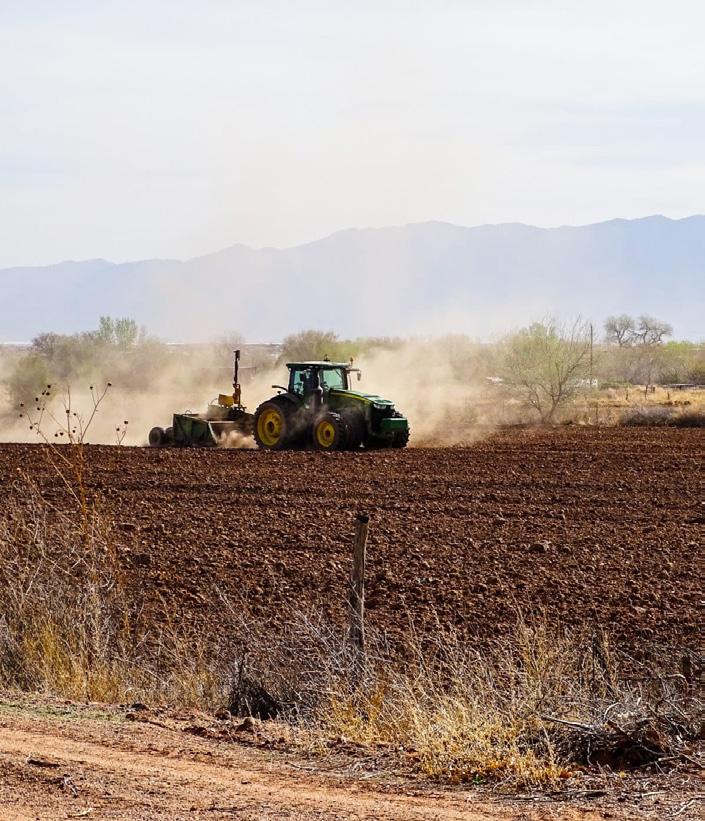
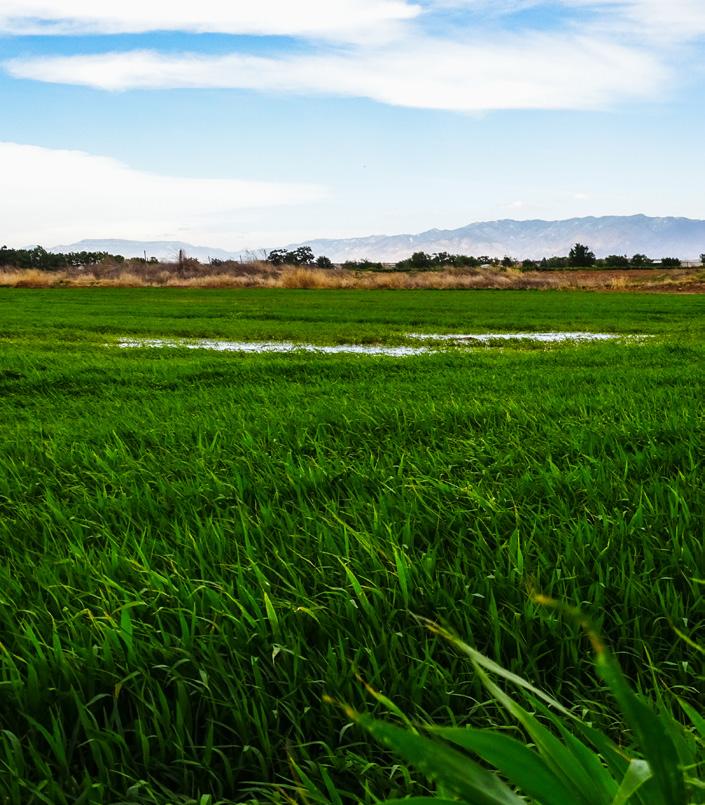
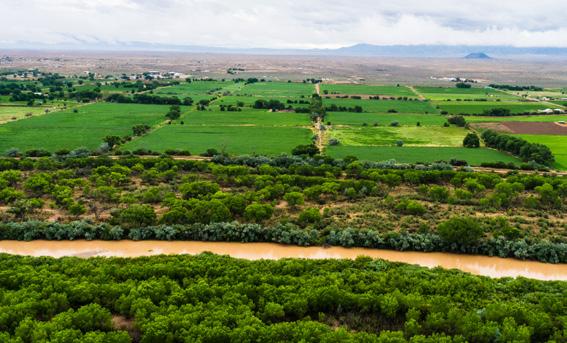

The grazing range lies 40 minutes to the southeast of the farm and is made up of more than 50% deeded acreage. Not including farm production, the ranch is rated to carry 580 cow-calf pairs, and it also boasts the extra attraction of quality hunting.


MOUNTAIN VIEW FARM
297 ± Acres | $13,680,000
Las Nutrias, NM
Nestled in the Rio Grande Valley south of Albuquerque is Mountain View Farm. The farm’s 297 acres are mostly cultivated ground, with water rights recognized as pre1907, the oldest designation New Mexico’s State Engineer identifies. The block of water, 533 annual consumptive acre-feet, presents a remarkable opportunity.
120 | WWW.REPUBLICRANCHES.COM | 888-726-2481
SOUTHWEST 2 3
LOS TRIGOS RANCH
Acres
Los Trigos Ranch is an iconic Pecos River property just 30 minutes from the Santa Fe Plaza. Almost two miles of the trout-filled Pecos River meanders through the middle of the ranch, dotted by majestic cottonwoods and native willows. Abundant wildlife, including trophy elk, mule deer, black bear, and mountain lion, roam this 612± acre property.
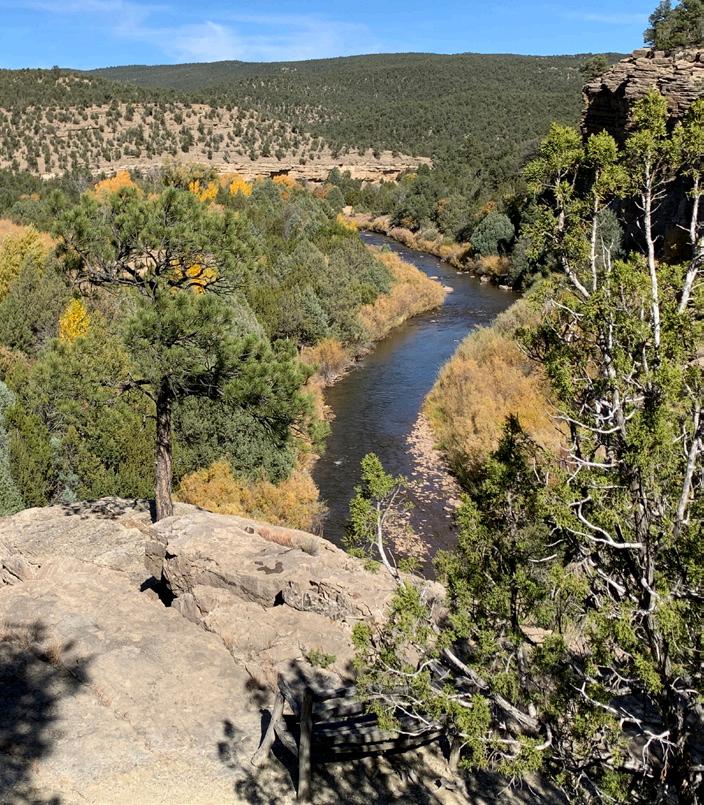

SMITH CREEK RANCH
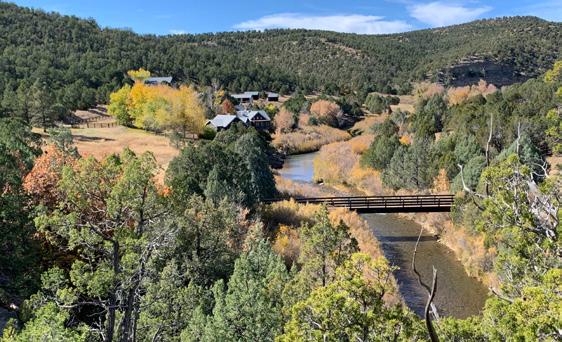
Acres
NV


The Smith Creek Ranch, located in the center of the state of Nevada epitomizes the high desert Nevada ranch having the history, location, topography, and operation combined in one package. The ranch runs cattle outside year around wintering on 6,000 ft elevation valleys and up to 9,200 ft elevation mountains in the summer.

800-238-8616 | WWW.FAYRANCHES.COM | 121
2,950 ±
| $10,200,000.00 Austin,
612 ±
| $10,250,000 Rowe, NM
SOUTHWEST 4 5
CHUPADERA RANCH

37,645 ± Acres | $ 9,847,000
Socorro, NM
Chupadera Ranch is 37,644± acres of grazing land characterized by gently rolling hills with majestic mountain views. Lying about 40 minutes east of Interstate 25, the ranch boasts the attraction of quality hunting for big game and fishing. The ranch grazing is also leased and currently stocked.

RANCHO SAN IGNACIO
3,374 ± Acres | $ 8,750,000
Sapello, NM
Rancho San Ignacio is a historic jewel in the heart of Northern New Mexico. The property consists of 3374± deeded acres bordering the Santa Fe National Forest. Situated at the base of Hermit’s Peak, the adobe hacienda compound frames a spectacular backdrop. The Sapello River runs for two miles through the property.
MESA SPRINGS RANCH
4,488 ± Acres | $5,900,000
Ribera, NM
Mesa Springs Ranch is 4,488± acres of land at the base of historic Glorieta Mesa, only 45 minutes from historic Santa Fe. A beautifully remodeled 7,435 sq ft custom adobe hacienda blends perfectly with its environment and is the jewel of the property.


THE EASON RANCH
10,240 ± Acres | $5,750,000.00




Claunch, NM
The Eason Ranch is a turn-key offering of 16 deeded sections along with a section of state lease. Located 6 miles east of Claunch, the headquarters has a 3 bed home and metal shop. There is a large hay shed and an older wooden horse barn with 10 stalls and a tack room.
122 | WWW.REPUBLICRANCHES.COM | 888-726-2481
SOUTHWEST 6 7 8 9
HIPICO OF SANTA FE
80 ± Acres | $5,060,000 Santa Fe, NM




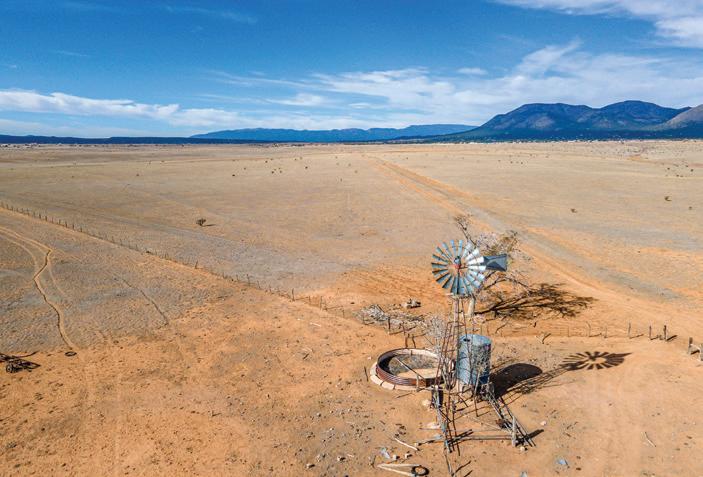
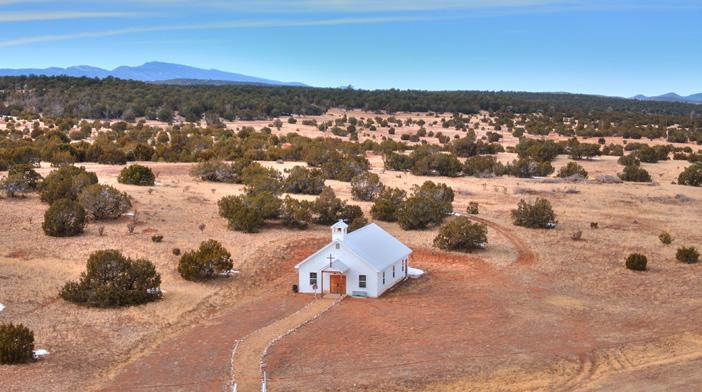
HIPICO of Santa Fe offers an incredible opportunity to invest in a commercial property with outstanding water rights, existing infrastructure, strategic location, and a plethora of possible uses. A new owner may choose to continue the successful equestrian event operation or repurpose the property in their vision.
THE RANCH AT ANGEL FIRE
186 ± Acres | $3,650,000
Angel Fire, NM
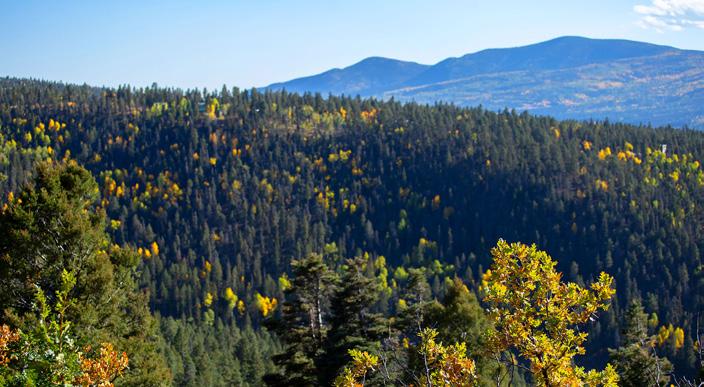
The Ranch at Angel Fire offers the opportunity to own the largest privately held property in Angel Fire Resort. The ranch offers a variety of use options. Two year-round mountain streams offer watering holes for local wildlife, including the abundant elk herds, and whitetail deer that inhabit the mountains and valleys of Angel Fire.
FOUNDERS RANCH
480 ± Acres | $2,999,000

Edgewood, NM
At 7,100 feet elevation among rolling hills of pinon pines and junipers sits Founders Ranch, a unique ranch and recreational facility that is the jewel of the Estancia Valley in New Mexico. The numerous buildings may be repurposed, and there is sufficient water and fencing to support livestock or a lovely equestrian center.
DUNCAN RANCH
924 ± Acres | $ 785,400
Stanley, NM
At 924± acres the Duncan Ranch is the perfect place to build your country estate, run a small ranch, but also be close to New Mexico small city culture and convenience. The terrain features hilly plains with dramatic mountain and valley views. This is a very quiet area and is surrounded by other ranches.
800-238-8616 | WWW.FAYRANCHES.COM | 123
SOUTHWEST 10 11 12 13
MEXICO


PALMAR RANCH

It is not often one has the opportunity to purchase a ranch with all the quality characteristics of good weather, large size, quality production, and excellent location. Accessed immediately upon driving across the border from the United States makes it one of a kind. This high Chihuahua ranch lies in a very productive region with gentle valleys and rolling hills and represents some of the most premier grazing country available on the market for the serious cattle rancher.
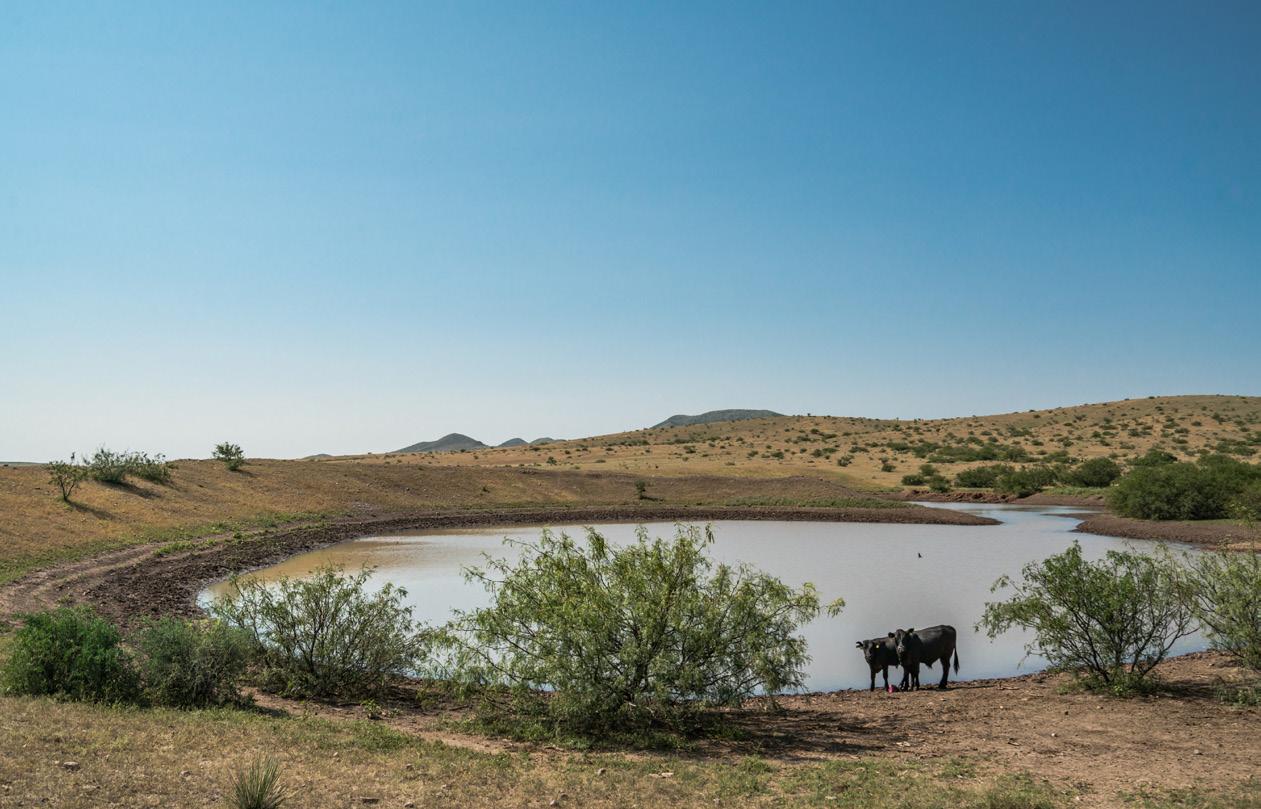

124 | WWW.REPUBLICRANCHES.COM | 888-726-2481 EL
81,966 ± Acres | $17,850,000 Janos, Chihuahua, Mexico
TEXAS
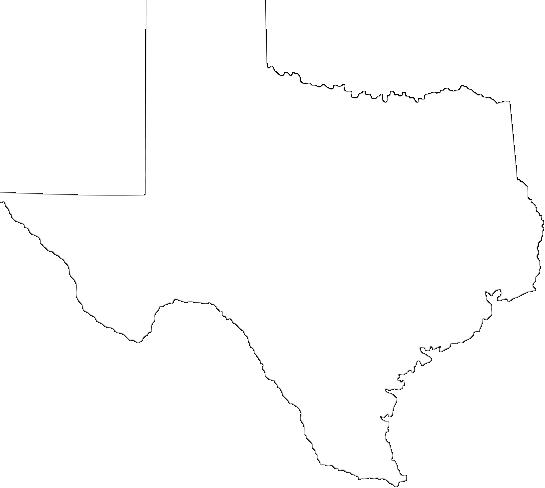

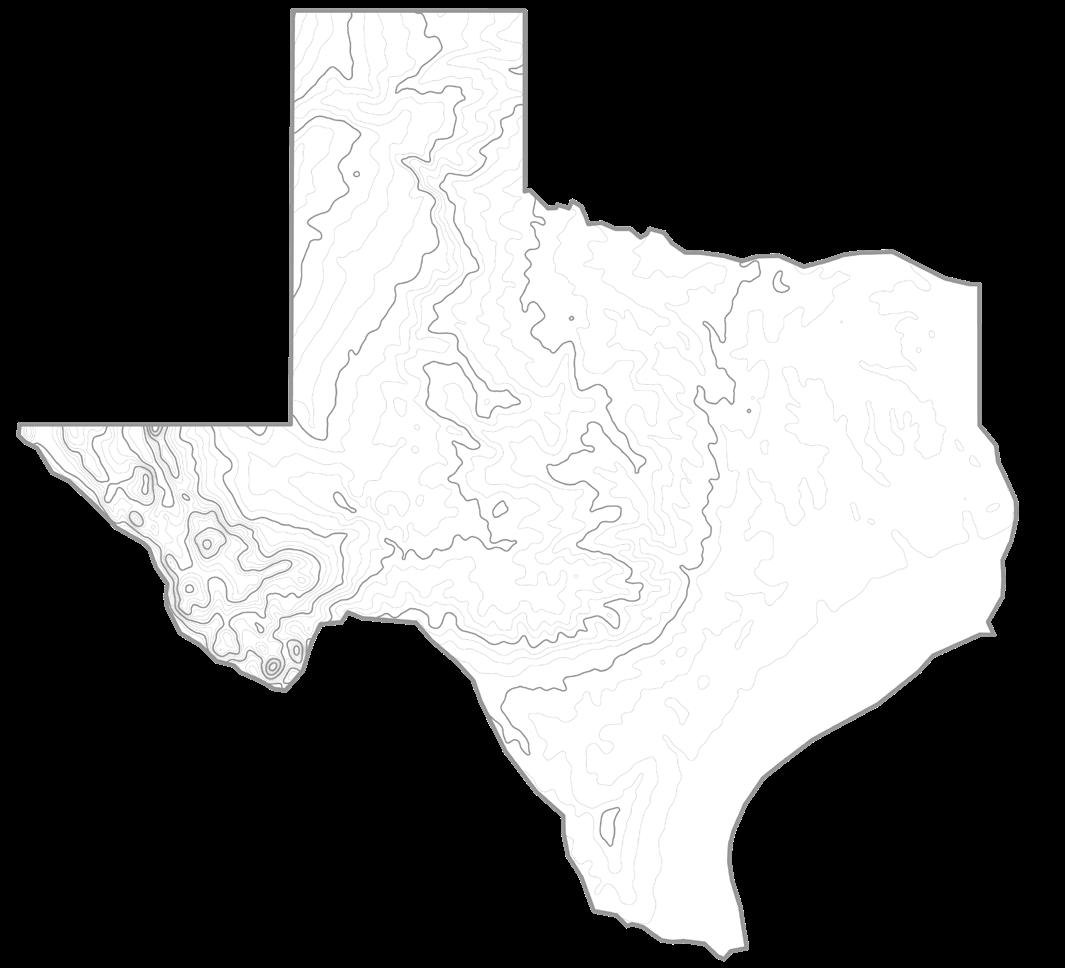
126 | WWW.REPUBLICRANCHES.COM | 888-726-2481 TEXAS 23. 3p ranch 24. spring creek lake ranches 25. bolton’s crown quality grain elevator 26. twin springs ranch 27. the farris hotel 1912 28. zapata ranch 29. st. john 55 30. east aransas river ranch 31. jack road north 32. andrews branch 200 33. piney creek ranch 34. ray ranch 9. jones creek ranch 10. breaux ranch 11. high gate equestrian facility 12. middle yegua creek ranch 13. camp lantern creek 14. dunbrokus ranch 15. pioneer equestrian facility 16. brennan vineyards 17. liberty martini & oyster club 18. county line ranch 19. finn-lambert ranch 20. bauer ranch 21. bear man bluff ranch 22. navidad river ranch 1 2 3 5 6 7 8 9 10 11 12 13 14 15 17 16 18 1920 21 22 23 24 25 26 2729 28 30 31 32 33 34 4
FEATURED PROPERTY


RANCH
800-238-8616 | WWW.FAYRANCHES.COM | 127 4LJ3
TEXAS 860 ± Acres | $16,000,000 | Colorado County, Columbus, TX The 4LJ3 Ranch is a beautiful ranch with a bit of everything one could ask for on a ranch for entertaining family and friends. The ranch includes ¾ mile of frontage on the Colorado River, 3 fabulous homes in a compound area dominated by huge live oaks, a 213-acre lake for skiing and fishing, and great duck and deer hunting. 1
HICKORY WIND FARM
608 ± Acres | $15,000,000
Henderson & Van Zandt Counties, Edom, TX
Stunning and diverse, with varying terrain and different ecological areas offering scenery and serenity, Hickory Wind Farm is a beautiful ranch property with two luxury residences and a six-stall equestrian barn. The main home was designed by architect Mike Butler for the renovation and expansion to over 5,500 square feet of interior space with three levels and 5 bedrooms, while noted Dallas designer Cathy Kincaid updated and finished the home with the most exquisite furnishings.
ROLLING OAKS RANCH


566 ± Acres | $10,750,000

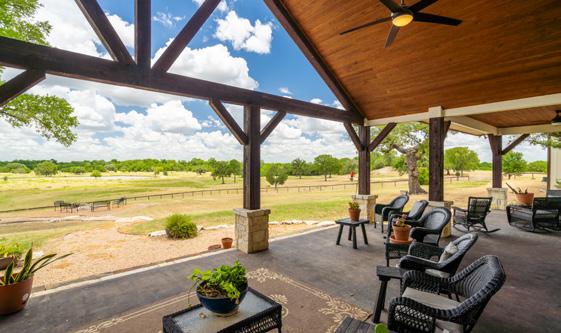
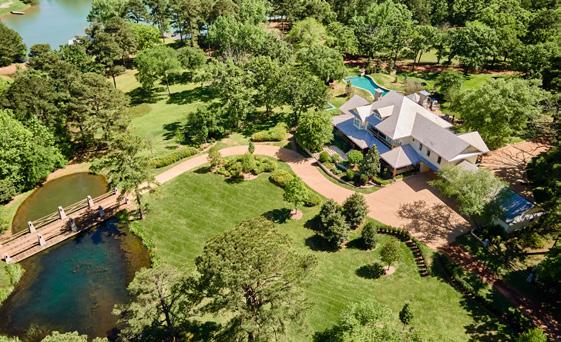
Washington County, Burton, TX
The stewards of this ranch have transformed the land into an idyllic retreat that features the highest end of authentic Texas ranch lifestyle. The main home sits on a hill overlooking a stunning valley below full of huge oaks and pecans. A guest home, swimming pool, horse barn and equipment barn as well as multiple other amenities make this ranch one of the finest offerings to be found in Texas.

128 | WWW.REPUBLICRANCHES.COM | 888-726-2481
TEXAS 2 3
WOLEETA HILL RANCH
1,780 ± Acres | $10,250,000 Goliad County, Goliad, TX



The ranch harbors a great herd of managed native whitetailed deer, great numbers of turkey, ample semi-open country for bountiful quail hunting, and is located in a great dove hunting area. The ranch is very well watered throughout and cut into multiple pastures to run a great cow/calf operation and utilize the cattle to help the quail pastures. Improvements include classic South Texas ranch houses with huge views over Goliad County.
GLICK RANCH
3,780 ± Acres | $10,017,000 Brooks County, Falfurrias, TX


Located less than 20 miles south of Falfurrias off of Hwy 281 lies the Glick Ranch, a terrific “sand sheet” ranch that has great quail and deer hunting, fantastic groundwater, infrastructure for cattle operations and fine accommodations. This high fenced property also comes with an exotics pasture, two pivot locations (one pivot) and water distribution system all over the property.
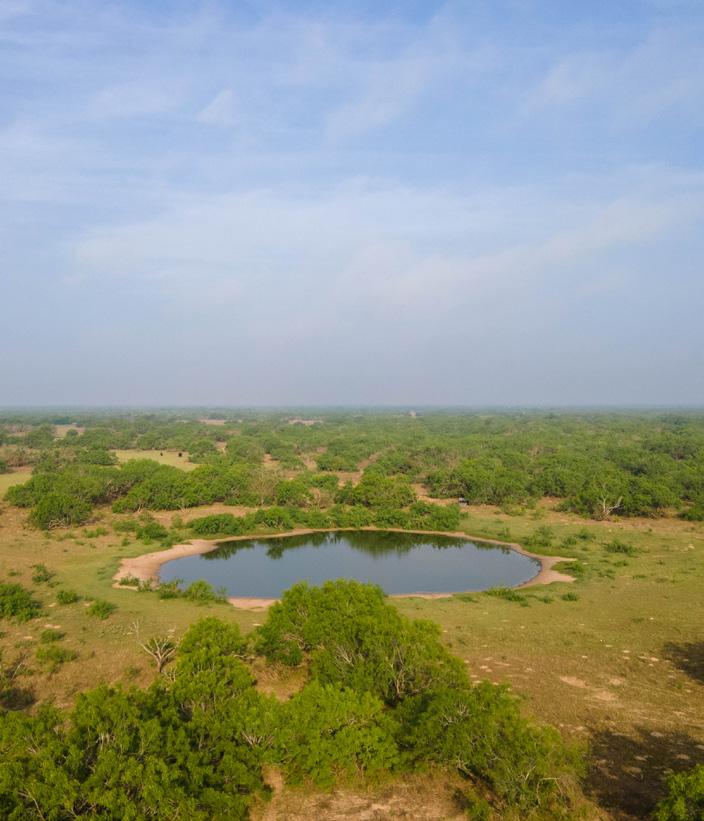
800-238-8616 | WWW.FAYRANCHES.COM | 129
TEXAS 4 5
WAPITI SPRINGS RANCH
2,511 ± Acres | $6,905,250


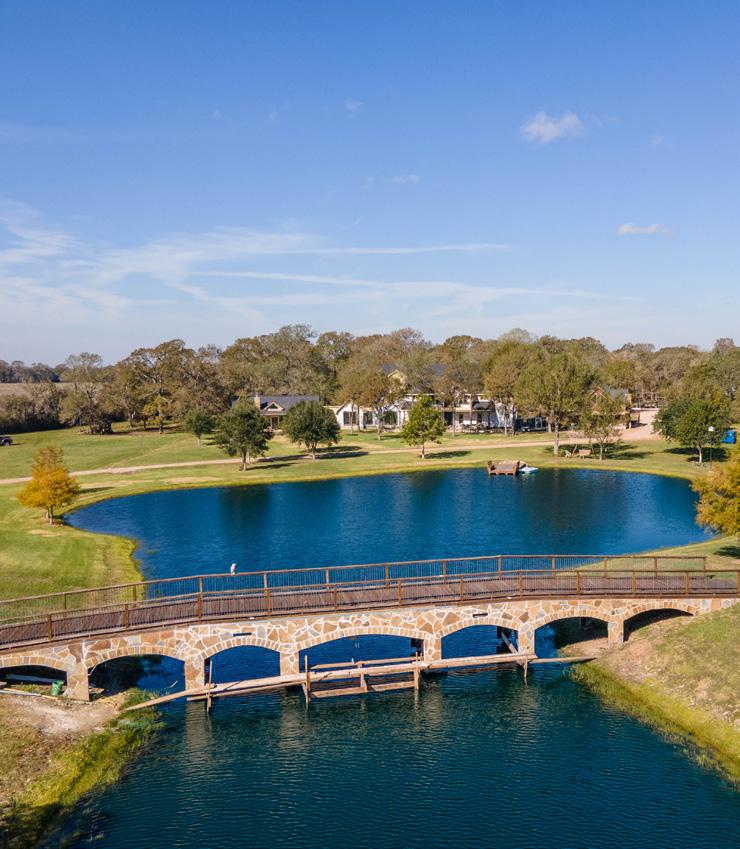


Edwards County, Vance, TX
Winding through the highest mountains in Real and Edwards Counties, the three roads known as the Twisted Sisters are considered the most scenic drive in the Texas Hill Country. The Wapiti Springs Ranch, a 2,511-acre raw slice of Texas heaven, sits on the most pristine and visually stunning of the Sisters, paved Ranch Road 335. Bordering several other giant ranches, this conveniently located and affordably priced property is only 2 left turns from San Antonio or Houston. Smaller acreage portion available.
E2 RANCH
140 ± Acres | Contact for Price
Fort Bend County, Needville, TX
E2 Ranch is less than an hour from downtown Houston. This property is ideal for a family compound, retreat center or wedding venue. Currently, the property is a family compound used by the owners, friends and family. The ranch has multiple attractions—two large bodies of water as you enter the ranch. 23 acres is high fenced and is utilized for raising rare exotic animals. The crown jewel of the property is the 13,486 square foot main home.

130 | WWW.REPUBLICRANCHES.COM | 888-726-2481
6 7 TEXAS
PEACH CREEK RANCH
723 ± Acres | Contact for Price
Grimes County, College Station, TX
Peach Creek Ranch is a fantastic undeveloped property with a 65± acre reservoir built right in the middle of the property. Gibbons Creek runs through the western half of the ranch, with the eastern half rising up to over 80’ above the creek bottoms. Crossing through the property is mostly old-growth forests with a tremendous variety of giant trees along multiple creeks. The ranch is less than 20 minutes to College Station and the Texas A&M campus. The lakes are approximately 67 acres of surface water that include a lot of shallow areas that create ideal wetland areas that attract a huge variety of waterfowl and other wetland fowl.
JONES CREEK RANCH
460 ± Acres | Contact for Price Brazoria County, Jones Creek, TX



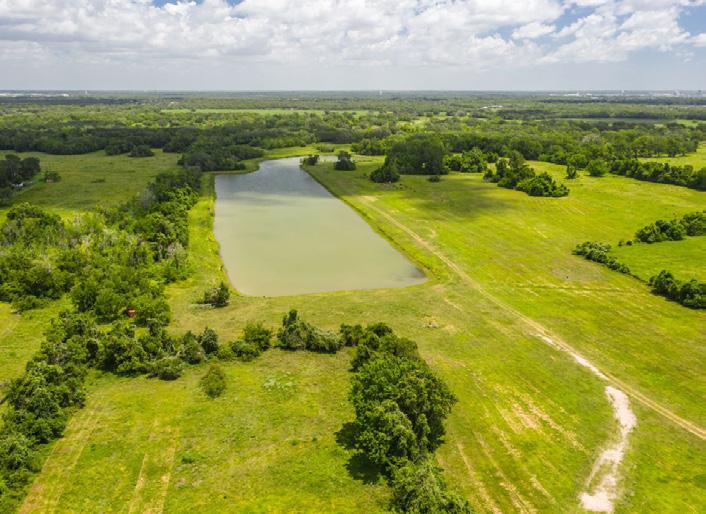

Jones Creek Ranch is the perfect mix of wildlife, cattle, and further development. It is located on Highway 36, just outside of Lake Jackson and less than an hour from Houston. Scattered throughout the ranch are century-live oak trees and tall green grass! The ranch has just under 1,000 feet of frontage on Highway 36. Jones Creek dissects the property on the eastern side and is a wonderful habitat for wildlife.
BREAUX RANCH
344 ± Acres | $6,480,000
Grimes County, Anderson, TX
The ranch offers a beautiful custom-built home tucked in a mott of post oak trees surrounded by multiple lakes and ponds, several of which are believed to be artesian. Beautifully manicured rolling pastures with hilltops and long views were thoughtfully developed throughout the ranch.
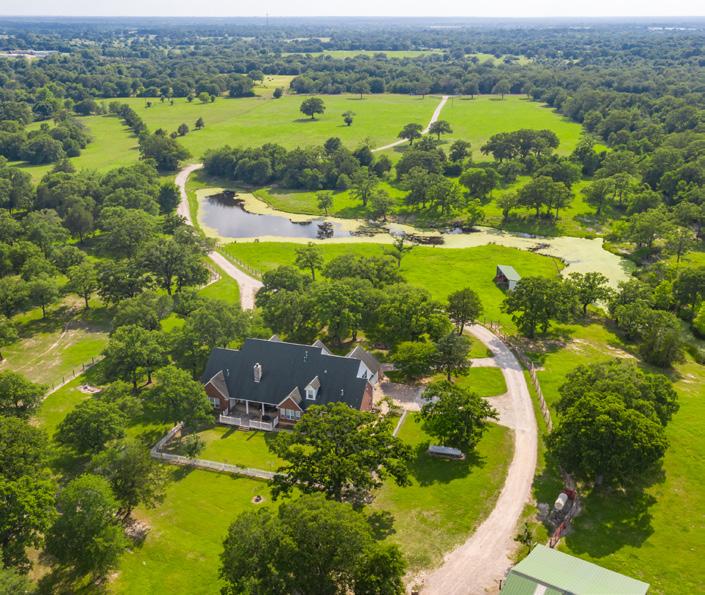
800-238-8616 | WWW.FAYRANCHES.COM | 131 TEXAS
10 9 8
EQUESTRIAN FACILITY
43 ± Acres | $6,000,000
Rockwall County, Rockwall, TX
This is a large, premier equestrian training facility that doubles as a future residential development opportunity within the Rockwall city limits. A 55,000 SF indoor riding arena with a misting system provides temperature moderation, humidity and a dust free working environment.
MIDDLE YEGUA CREEK RANCH
577 ± Acres | $ 4,995,000
Lee County, Lexington, TX
Middle Yegua Creek Ranch is the ideal recreational property located within an hour of downtown Austin. It boasts over a mile of both sides of Middle Yegua Creek, convenient access with over 4,200 ft. of road frontage on FM 1624, and enough acreage to satisfy those looking for a true outdoorsmen’s ranch within close proximity to the city.
CAMP LANTERN CREEK
93 ± Acres | $4,750,000




Montgomery County, Montgomery, TX
Camp Lantern Creek is a turnkey modern summer camp that sits on over 93 acres and is located only 1 hour from Houston. The fully functioning camp is designed to house 150 people at a time. Historically an all-girls summer camp, Camp Lantern Creek also successfully hosted numerous corporate retreats as well as large group private events throughout the year.
DUNBROKUS RANCH
791 ± Acres | $4,548,250
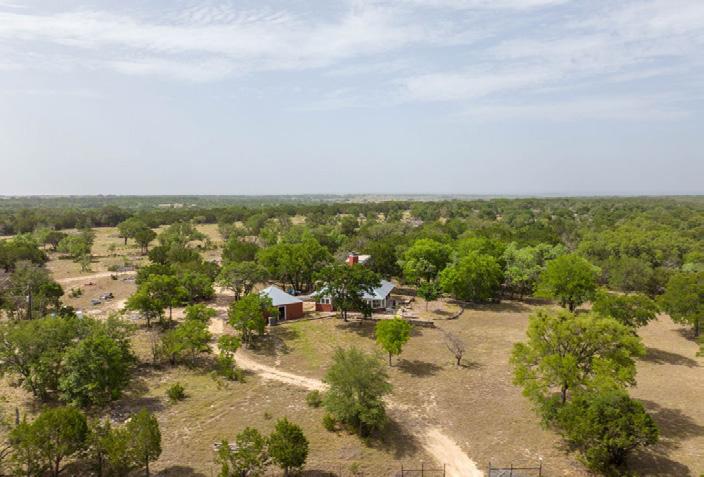

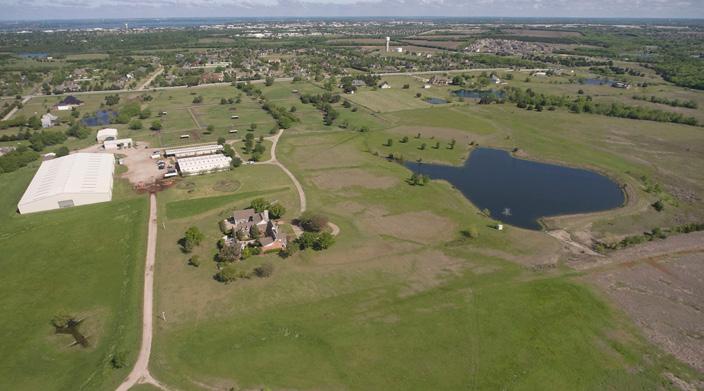
Hamilton & Comanche Counties, Carlton, TX
The Dunbrokus Ranch is located on the Hamilton and Comanche County line and just 10 miles southwest of Hico. It has well wooded areas with multiple open pastures and habitat along Rocky Creek. The size of this ranch is desirable and is in an area popular with deer and dove hunters.

132 | WWW.REPUBLICRANCHES.COM | 888-726-2481 TEXAS HIGH GATE
14 13 12 11
PIONEER EQUESTRIAN FACILITY
40 ± Acres | $4,500,000




Montgomery County, Conroe, TX
Pioneer Equestrian Facility is located less than 15 minutes from Conroe, TX, situated directly off of FM 2432. The facilities consist of a covered arena, 16 stall horse barn, owner’s house, as well as a barndominium with living quarters. There are multiple paddocks and plenty of room to add more.
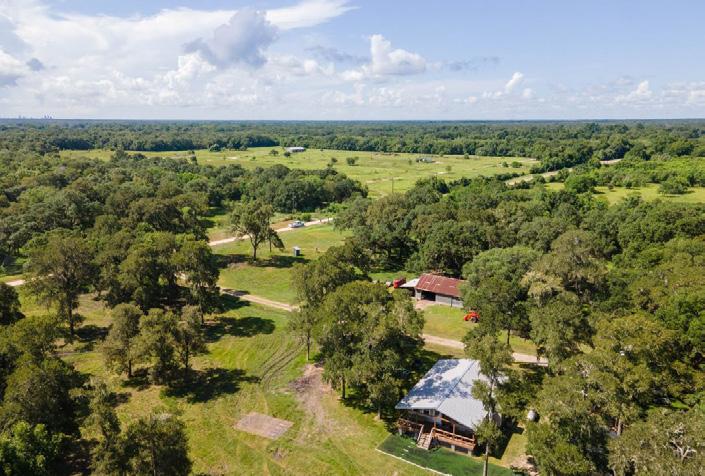


BRENNAN VINEYARDS

4 ± Acres | $4,500,000
Comanche County, Comanche, TX
Nestled on 4 acres of the pecan studded Indian Creek in Comanche, lies one of Texas’ most well-respected boutique wineries, Brennan Vineyards. The Brennan Vineyards estate encompasses a state-of-the-art winery, event venue, historic tasting room, and storage facility. With a laundry list of awards to its name, Brennan Vineyards is ready for its next chapter.
LIBERTY MARTINI & OYSTER CLUB
1,445 ± Acres | $4,480,500
Liberty County, Liberty, TX
Liberty Martini & Oyster Club is 1,445 acres of highly maintained and improved sportsman’s paradise. Located less than an hour from downtown Houston, the lodge boasts large group hosting with two separate kitchens and comfortable sleeping for well over twenty people. With over 20 miles of smooth interior roads, there is great access to enjoy the entire place.
COUNTY LINE RANCH
538 ± Acres | $4,149,299
Brazoria County, Damon, TX
County Line Ranch is a wonderfully located property close to Houston and the Texas Gulf Coast. Diverse trees cover the landscape with multiple food plots scattered throughout the ranch, located just off FM Road 1301. The road to the ranch is only accessed by a few other ranches providing both privacy and security.
800-238-8616 | WWW.FAYRANCHES.COM | 133 TEXAS
15 16 17 18
FINN-LAMBERT RANCH
1,327 ± Acres | $3,463,470

Refugio County, Refugio, TX
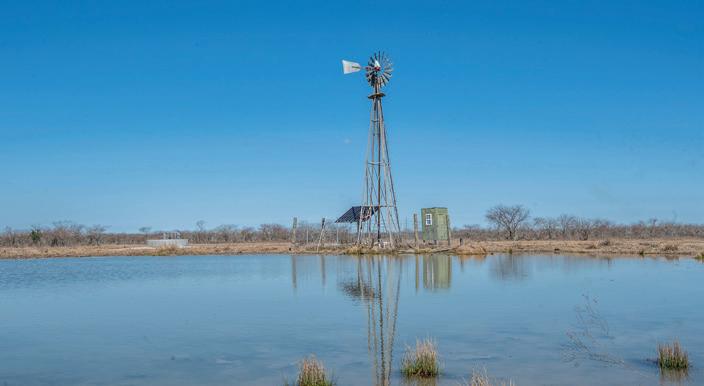
The Finn-Lambert Ranch is a portion of the historic Lambert Ranch located in Refugio County. This ranch consists predominantly of native rangeland and a smaller portion of dry land row crop farm. The ranch’s native rangelands are typical of the upland prairie in this part of South Texas with trees including live oak, mesquite and other species.
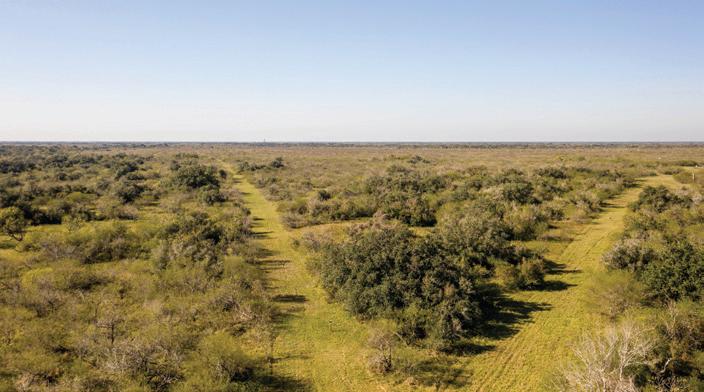
BAUER RANCH
788 ± Acres | $3,313,380
Goliad County, Goliad, TX
Bauer Ranch is a beautiful South Texas cattle and hunting ranch. There is brand new perimeter fencing and cross fencing with galvanized T-posts, six-inch wood posts and good working pens with the ranch divided into four pastures. Good roads have been maintained with a dozer and maintainer with good drainage.
BEAR MAN BLUFF RANCH
280 ± Acres | $3,200,000

Hardin County, Silsbee, TX
Hidden along the banks of the Neches River on a historic high point is Bear Man Bluff Ranch. The stewards of this ranch have transformed the land into an idyllic family retreat that features the highest end of authentic Texas ranch lifestyle. Sitting on the porch carries owners and guests to a simpler time, while offering extensive comfort and convenience.
NAVIDAD RIVER RANCH




202 ± Acres | $3,057,702
Lavaca County, Halletsville, TX
Navidad River Ranch is a ranching, wildlife and recreational paradise. Wide open improved pastures, thick stands of woods, close to a mile of Navidad River frontage and a beautiful custom home leave little else to be desired of a ranching property. With very little pressure, wildlife abounds across the ranch.
888-726-2481
134 | WWW.REPUBLICRANCHES.COM |
TEXAS
19 20 21 22
3P RANCH
114 ± Acres | $3,000,000
Milam County, Buckholts, TX
3P Ranch is a family-owned and operated premier event facility that is a horse enthusiast’s dream property only 20 miles from Temple, TX. This incredible 114± acre property has everything you’d ever need. The property’s key feature is the 45,000 sq. ft. covered arena, holding pens, manual chute, announcers box, concession stand and multiple other amenities.




SPRING CREEK LAKE RANCHES
151 ± Acres | $2,807,171
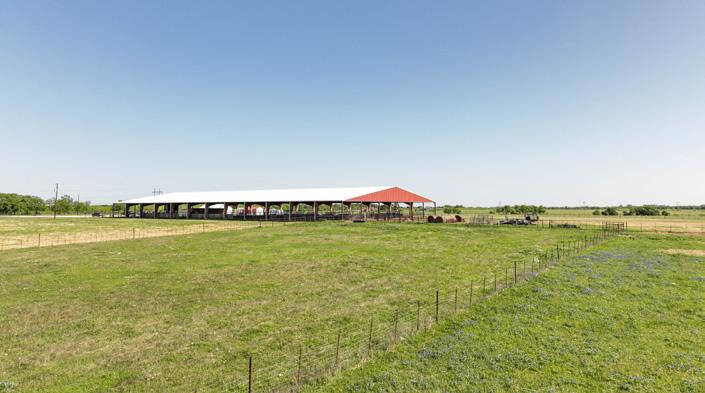
Waller County, Waller, TX
With rolling land easily accessible from 290, Spring Creek Lake Ranches is 7 parcels of land surrounding a 10-acre lake and great road frontage to FM 1736. These are beautiful tracts first time on the market, ready for homes and horses.
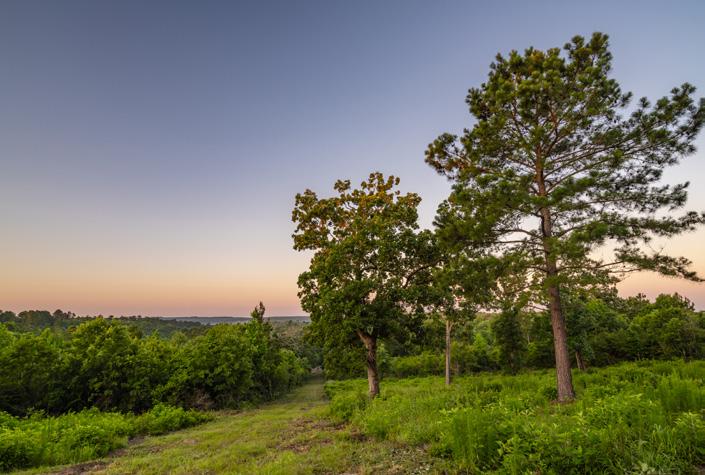
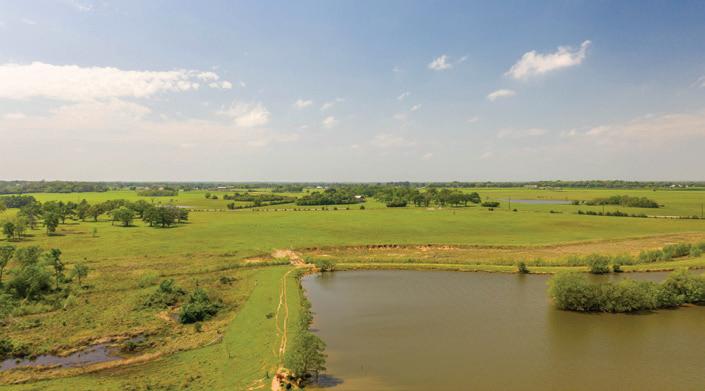
BOLTON’S CROWN QUALITY GRAIN ELEVATOR
8 ± Acres | Contact for Price
Wilbarger County, Vernon, TX
Bolton’s Crown Quality is a long-time standard in the Wichita Falls/Vernon area of agriculture and ranching, and is an active commercial grain facility with a storage capacity of 700,000 bushels.

TWIN SPRINGS RANCH
344 ± Acres | $1,860,000
Houston County, Grapeland, TX
Twin Springs Ranch is highlighted by an incredible mixture of elevation as well as two year-round springs that flow across the property. The majority of the property is forested with multiple openings and fields that are strategically scattered throughout.
800-238-8616 | WWW.FAYRANCHES.COM | 135
TEXAS 23 24 25 26
FARRIS HOTEL 1912
1 ± Acres | $1,850,000
Colorado County, Eagle Lake, TX
The grounds are approximately one acre in the historic downtown of Eagle Lake at the corner of Post Office and McCarty. In 2017, the hotel was converted into a private residence by an individual passionate about history and the legacy that the hotel brings to the town.

ZAPATA RANCH
1,204 ± Acres | $ 1,745,800
Zapata County, Zapata, TX
The Zapata Ranch is a unique opportunity to purchase an extraordinary hunting and fishing ranch in this remote region of South Texas. The ranch features direct access to the famed Falcon Lake during wet years when the lake levels are high.





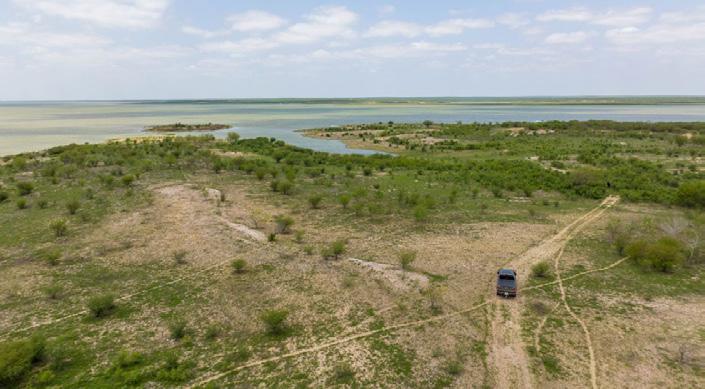
ST. JOHN 55
55 ± Acres | $1,675,000
Lavaca County, Schulenburg, TX
The St. John 55 acres is a fantastic weekend retreat with excellent proximity to Houston, San Antonio and Austin. Enjoy the quiet of this property with a great barndominium in place, good fences, beautiful oaks and gently rolling pasture featuring a small, clear water tank.
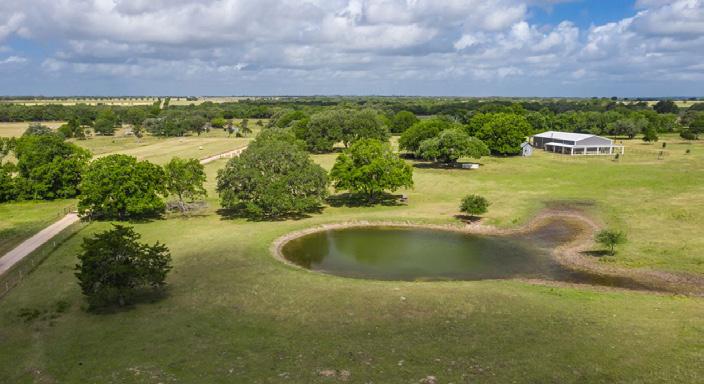
EAST ARANSAS RIVER RANCH
155 ± Acres | $ 1,525,000
Refugio County, Sinton, TX
Here is a rare opportunity to own a historical and generational 155-acre river ranch that is renowned for cattle and hunting located on the north side of the Aransas River with 1.5 miles of river frontage. Enjoy your days filled with hunting, fishing and peaceful recreation.
136 | WWW.REPUBLICRANCHES.COM | 888-726-2481 THE
TEXAS 27 28 29 30
JACK ROAD NORTH
266 ± Acres | $1,463,000
Harris County, Hockley, TX
Jack Road North is a tall grass prairie and wetland property that has been operated and maintained by the Katy Prairie Conservancy. This ranch has great wetlands to attract waterfowl, dove and wetland birds as well as lots of native prairie.
ANDREWS BRANCH 200
200 ± Acres | $1,390,000
Lavaca County, Halletsville, TX
Just 1.5 hours from Houston and less than an hour from the Texas Gulf Coast, Andrews Branch 200 is in an amazing location! Not very often does a 200 acre tract come available with this much potential.
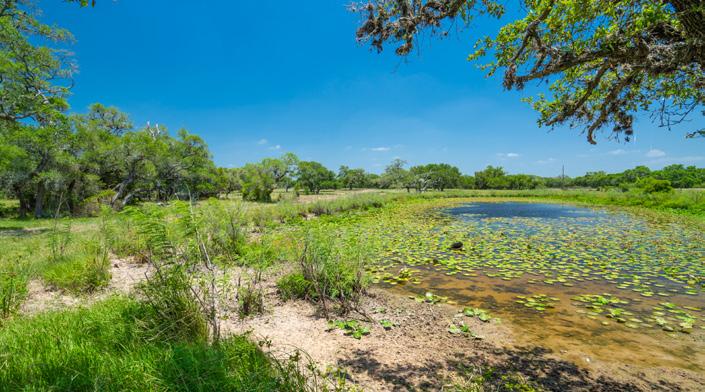

PINEY CREEK RANCH




200 ± Acres | $1,100,000
Trinity County, Groveton, TX
Piney Creek Ranch has the pasture you want for hay or livestock. A large hill overlooks the entire ranch which would make a beautiful homesite. Piney Creek flows through the southern portion and provides a nice wooded section that houses native wildlife.

RAY RANCH
39 ± Acres | $795,000
Bexar County, Von Ormy, TX
Beautiful property located less than 25 minutes from San Antonio. The majority of the south side of ranch is bordered by Elm Creek. Lots of huge trees along the creek including oaks and pecans. There is abundant wildlife on the property.
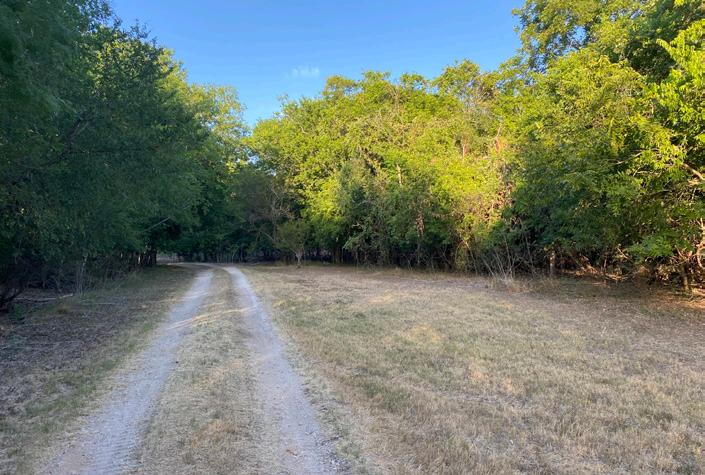
800-238-8616 | WWW.FAYRANCHES.COM | 137
TEXAS 31 32 33 34
SOUTHEAST






138 | WWW.REPUBLICRANCHES.COM | 888-726-2481
PROPERTY LOCATION GUIDE 1. petit jean river ranch 1 2 2. prince mountain overlooking lake ocoee
PETIT JEAN RIVER RANCH
522 ± Acres | $1,750,000
Logan County, Booneville, AR
The Petit Jean River Ranch is a remarkable mixed-use property in northwest Arkansas. It is an excellent deer and waterfowl hunting property with good surface water and mixed wooded habitat. It also has productive pasture ground that can comfortably carry 100+ cows. This ranch has multi ple improvements with a home cabin and working pens and is well maintained with a good road system. It has excellent views to the south of the Ouachita Mountain range. This ranch has over 1 mile of frontage on the Petit Jean River, and additionally, approximately 1.5 miles of Prairie Branch Creek runs through the middle of it.
PRINCE MOUNTAIN OVERLOOKING LAKE OCOEE

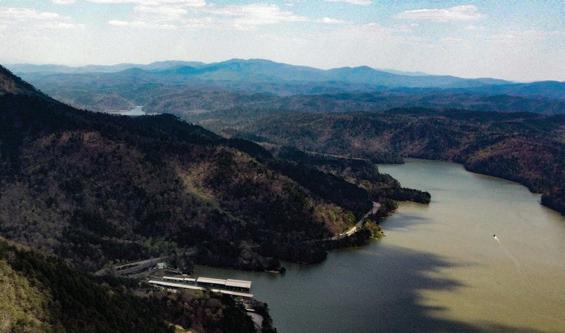
280 ± Acres | $1,600,000




Benton, TN
Prince Mountain overlooks lake Ocoee in Southeast Tennes see with pristine and protected views. Located conveniently from Atlanta, Nashville, and Knoxville, this approximately 280± acre mountain property consists of two tracts, one com mercial and one forest, allowing for the endless potential for professional, commercial, and personal investment.
800-238-8616 | WWW.FAYRANCHES.COM | 139
SOUTHEASTFEATURED PROPERTY 1 2
It may seem like just a flight, but it is far more than that. Each journey is the culmination of careful planning, flawless execution, and an unbridled passion to provide the best in world-class customer service. It is in each friendly handshake with the industry’s best pilots and it is in the calm that takes over as you settle into your seat aboard a perfectly appointed aircraft, all Owned and Operated by NICHOLAS AIR.

Our commitment to provide the ultimate in private aviation experiences stretches back 25 years and yet each day, our team works diligently to refine every detail. From the personalized attention to our commitment to providing the highest quality aircraft to the Most Refined Set of Private Flyers, the NICHOLAS AIR team is solely focused on one mission--- yours.


NicholasAir.com • 866.935.7771 • #NicholasAir All aircraft are Owned and Operated by NICHOLAS AIR. NICHOLAS AIR and INNOVATIVE PRIVATE AIR TRAVEL are registered trademarks ®2022 NICHOLAS AIR. All rights reserved. WATCH














 BY JW ROBINSON, BROKER | FAY RANCHES
BY JW ROBINSON, BROKER | FAY RANCHES






















 BY DANE REED, RANCH SALES | FAY RANCHES
BY DANE REED, RANCH SALES | FAY RANCHES




 BY ALEX ROBERTSON, BROKER | FAY RANCHES
BY ALEX ROBERTSON, BROKER | FAY RANCHES
 BY TROY DANA, DESIGNATED BROKER | FAY RANCHES
BY TROY DANA, DESIGNATED BROKER | FAY RANCHES








 BY SCOTT COE, BROKER | FAY RANCHES
BY SCOTT COE, BROKER | FAY RANCHES










 BY BRIAN EISCHEID, BROKER & CLAYTON JEFFORDS, BROKER | FAY RANCHES
BY BRIAN EISCHEID, BROKER & CLAYTON JEFFORDS, BROKER | FAY RANCHES






 BY RIK THOMPSON, BROKER ASSOCIATE | REPUBLIC RANCHES
BY RIK THOMPSON, BROKER ASSOCIATE | REPUBLIC RANCHES

 BY JIM VIDAMOUR, ALC, PRINCIPAL BROKER | FAY RANCHES
BY JIM VIDAMOUR, ALC, PRINCIPAL BROKER | FAY RANCHES








 BY ROB GRAINGER, SALES ASSOCIATE | REPUBLIC RANCHES
BY ROB GRAINGER, SALES ASSOCIATE | REPUBLIC RANCHES


 BY SUSAN FERRIN & APRIL CHURCHILL FAY RANCHES COMMUNITY FOUNDATION
BY SUSAN FERRIN & APRIL CHURCHILL FAY RANCHES COMMUNITY FOUNDATION









 BY GEORGE DUKE, RANCH SALES | FAY RANCHES
BY GEORGE DUKE, RANCH SALES | FAY RANCHES

 BY REN MARTYN, ALC, BROKER | FAY RANCHES
BY REN MARTYN, ALC, BROKER | FAY RANCHES








 BY JESICA HICKS, BROKER, JOETTE SCHALLA, RANCH BROKER & IZZY LOWRY | FAY RANCHES
BY JESICA HICKS, BROKER, JOETTE SCHALLA, RANCH BROKER & IZZY LOWRY | FAY RANCHES








































































































































































































































































